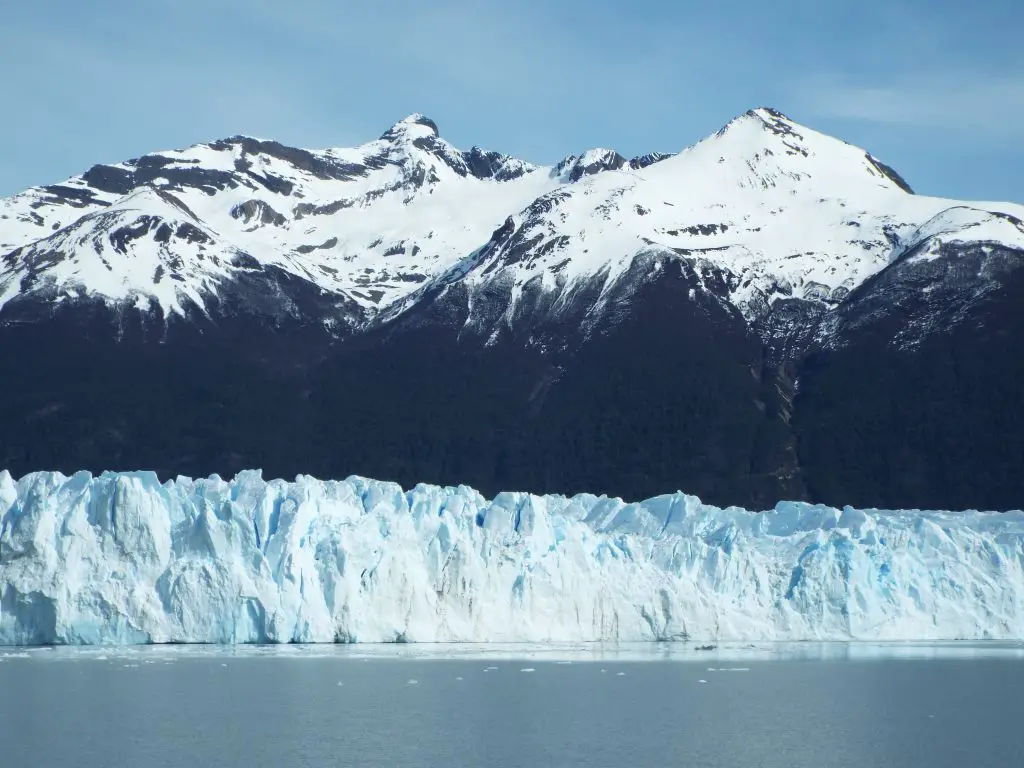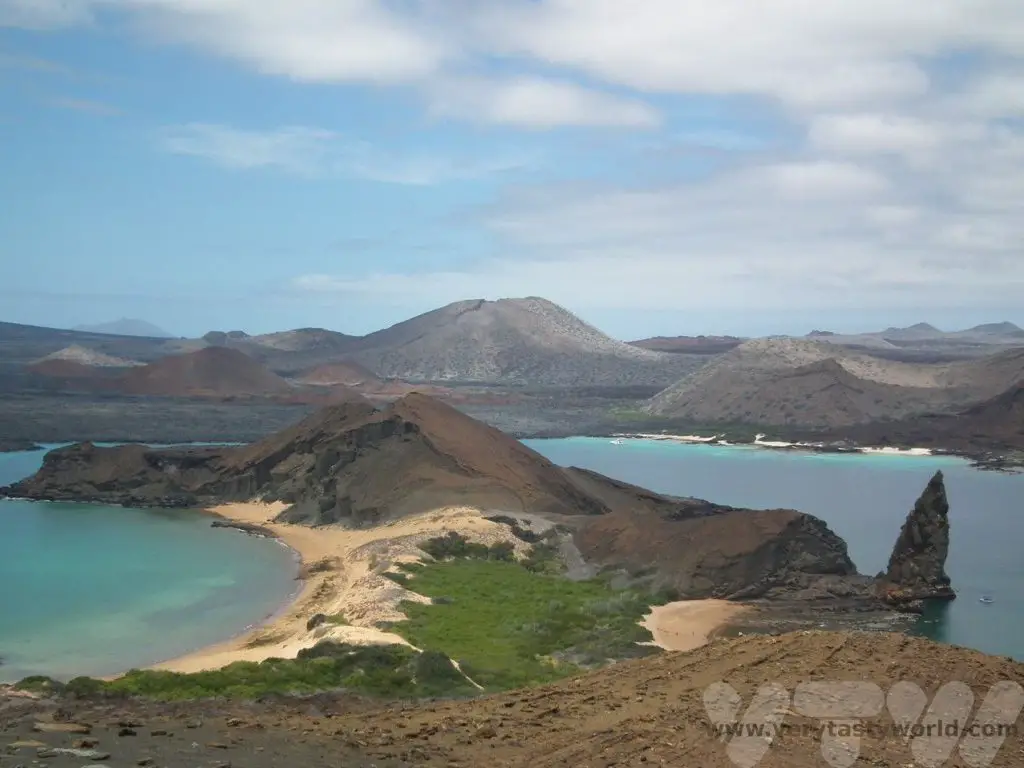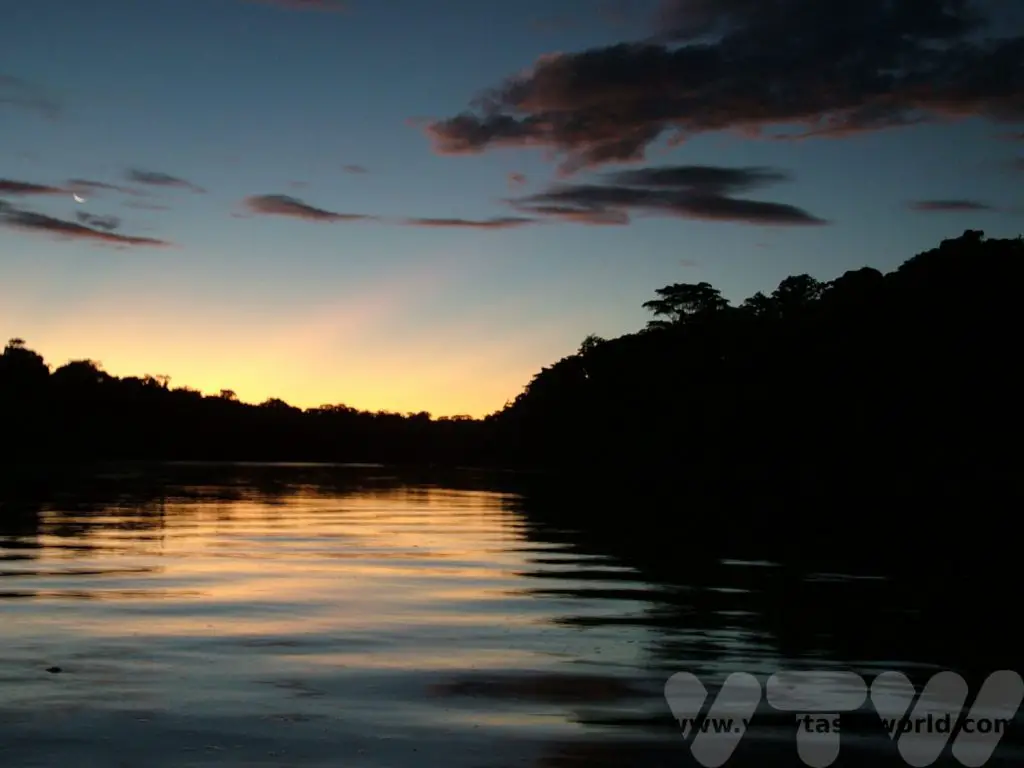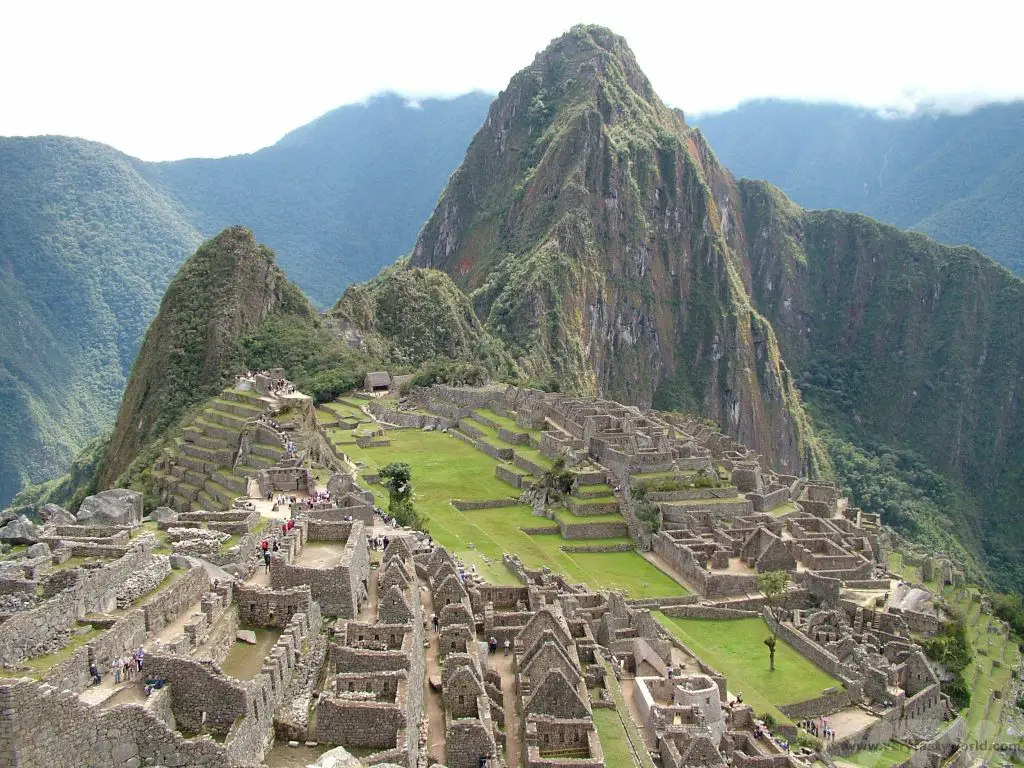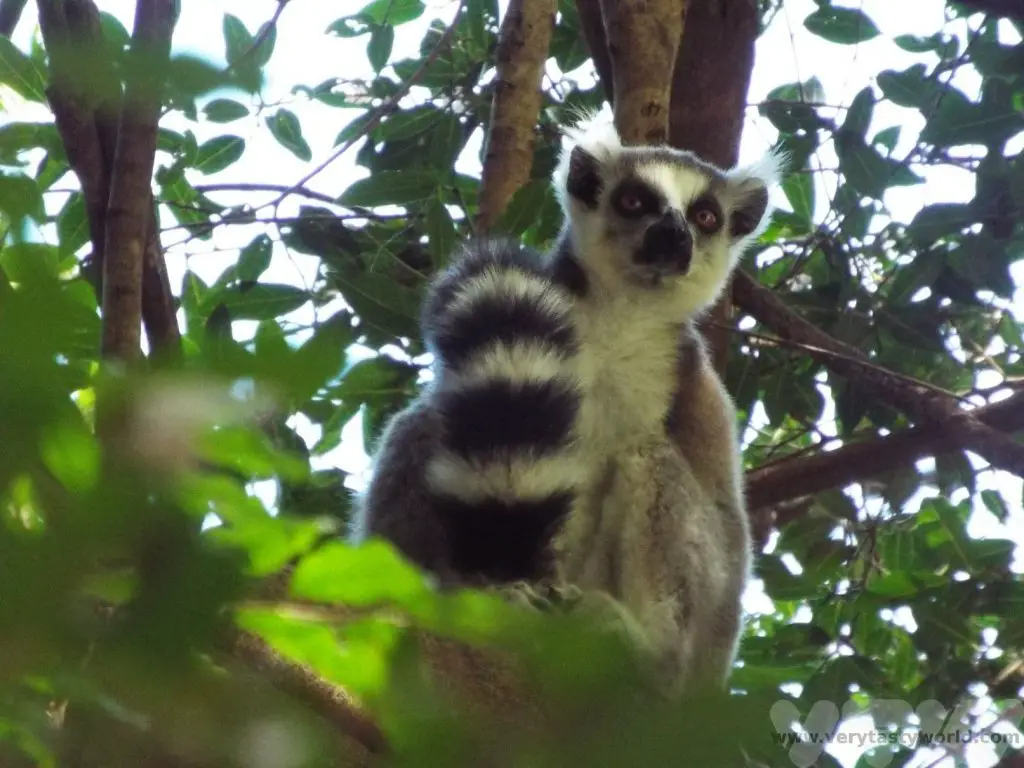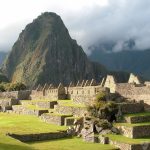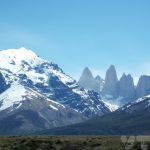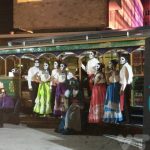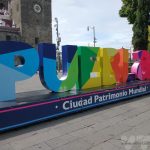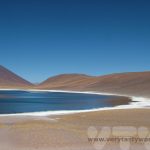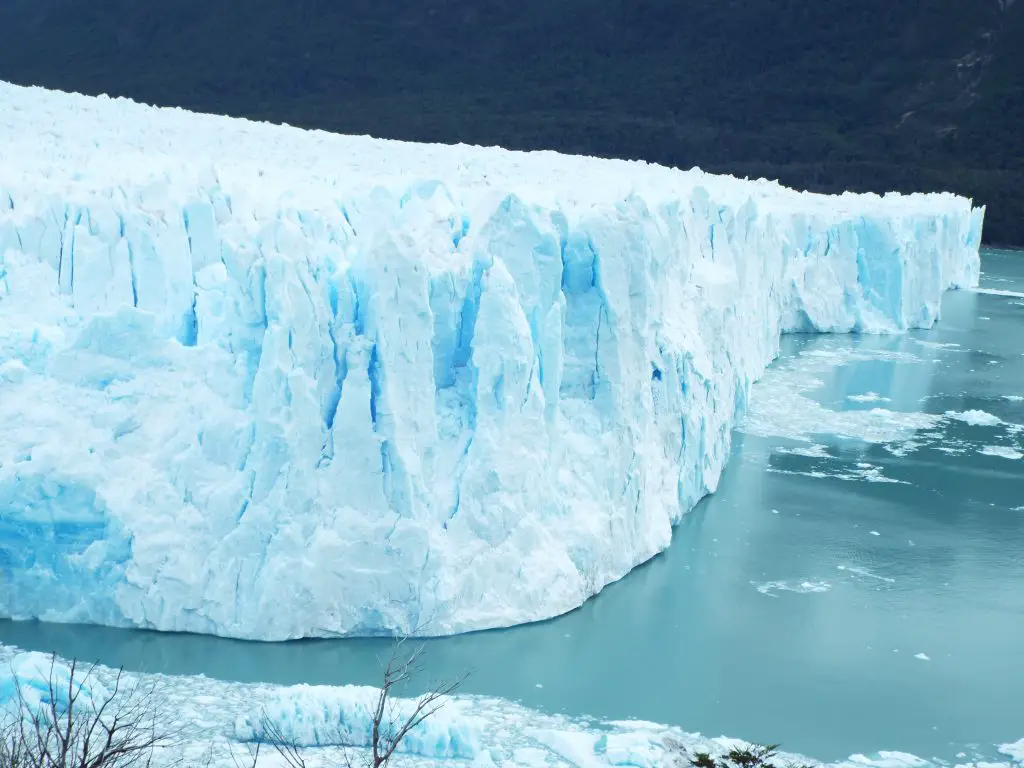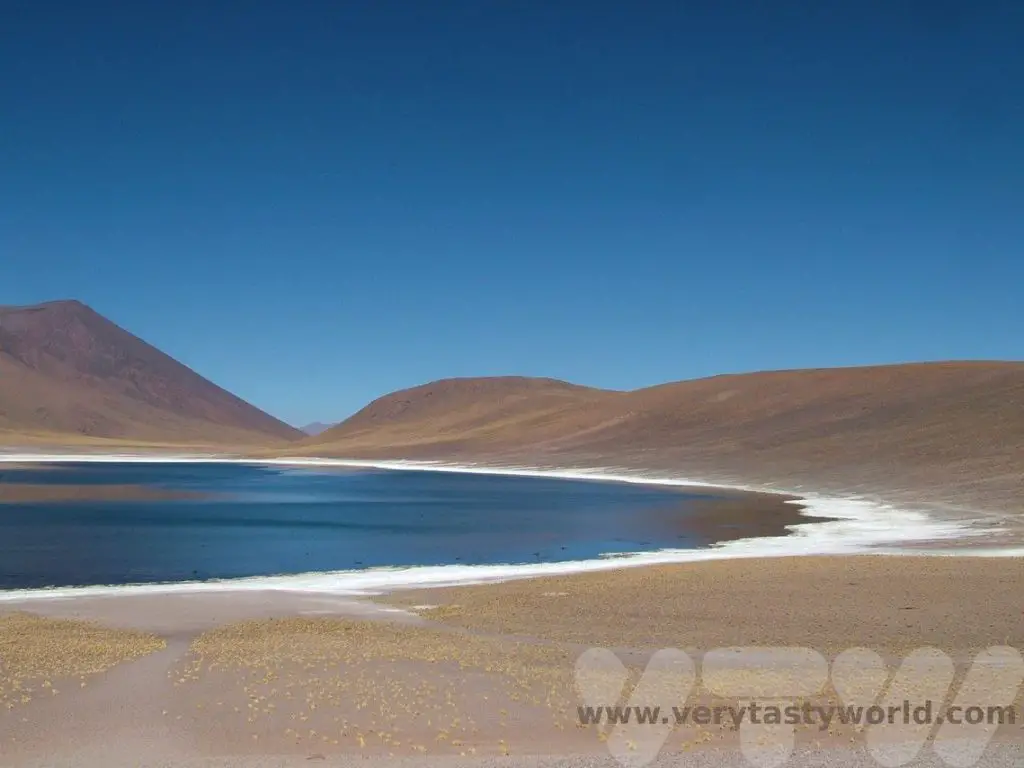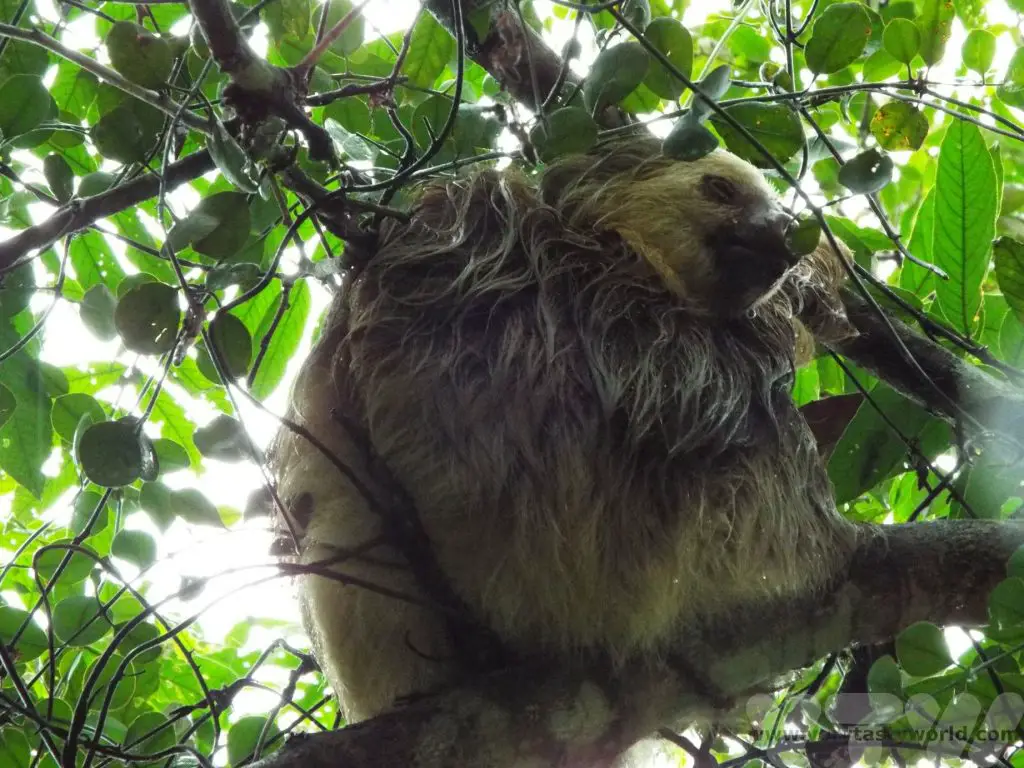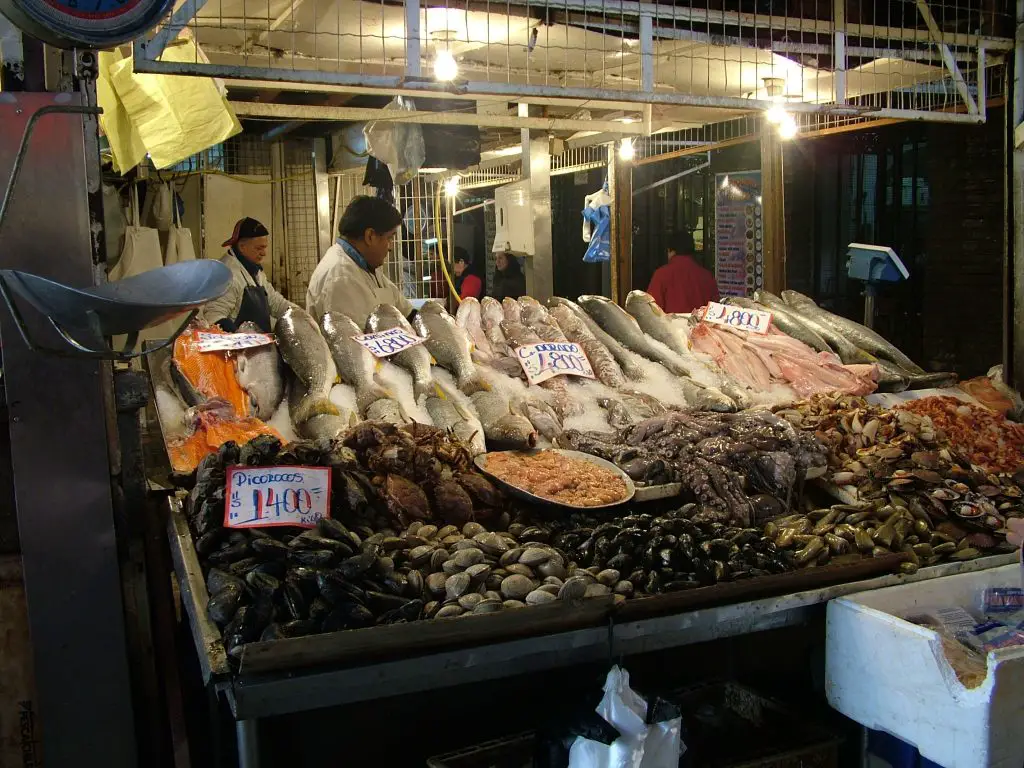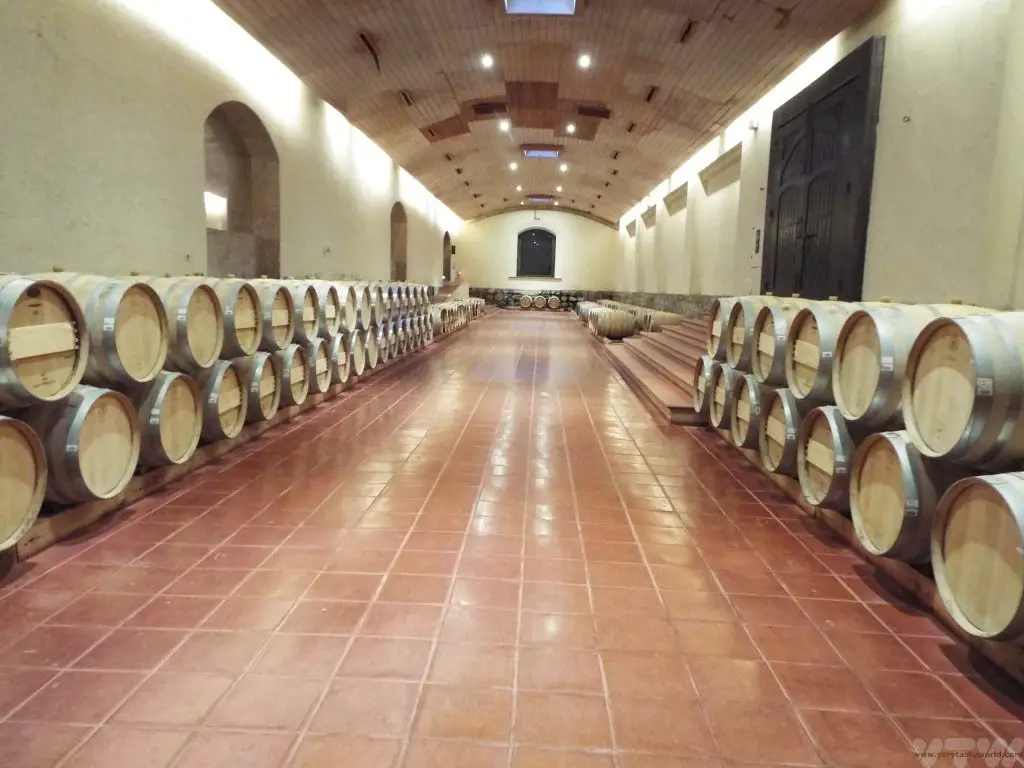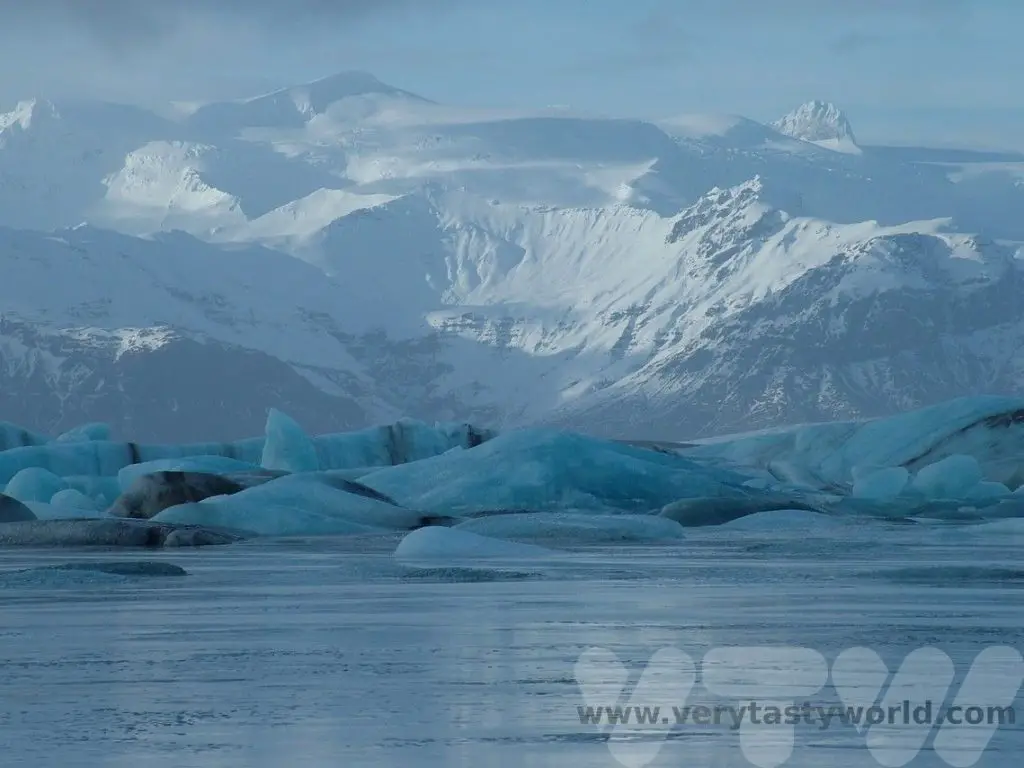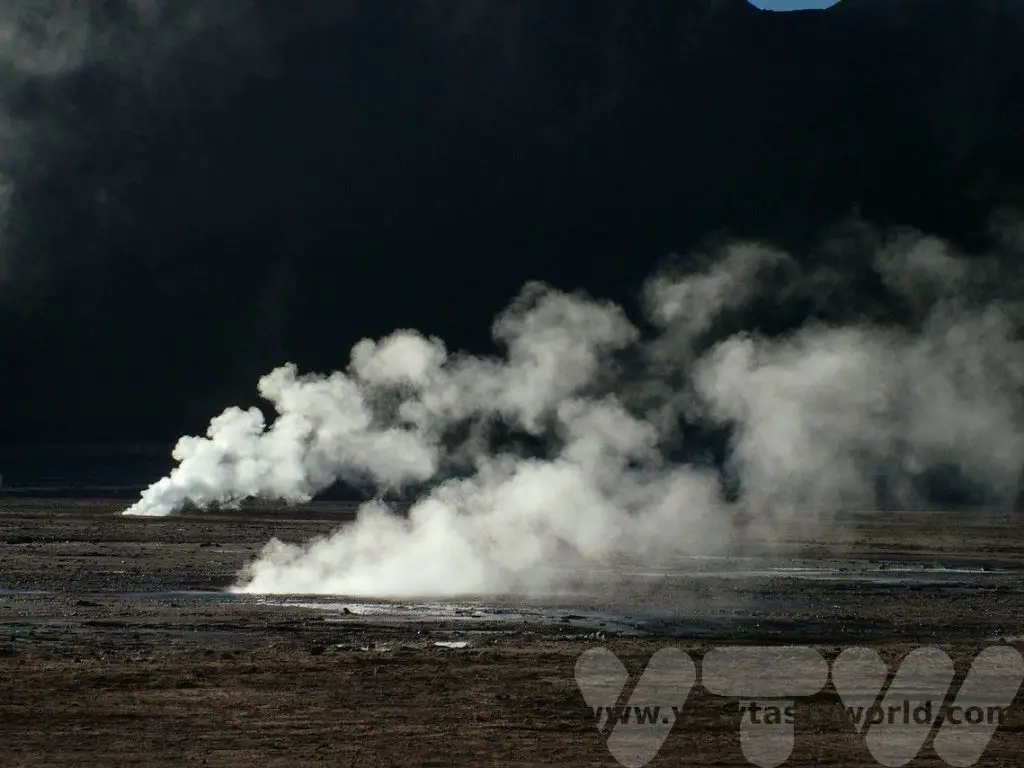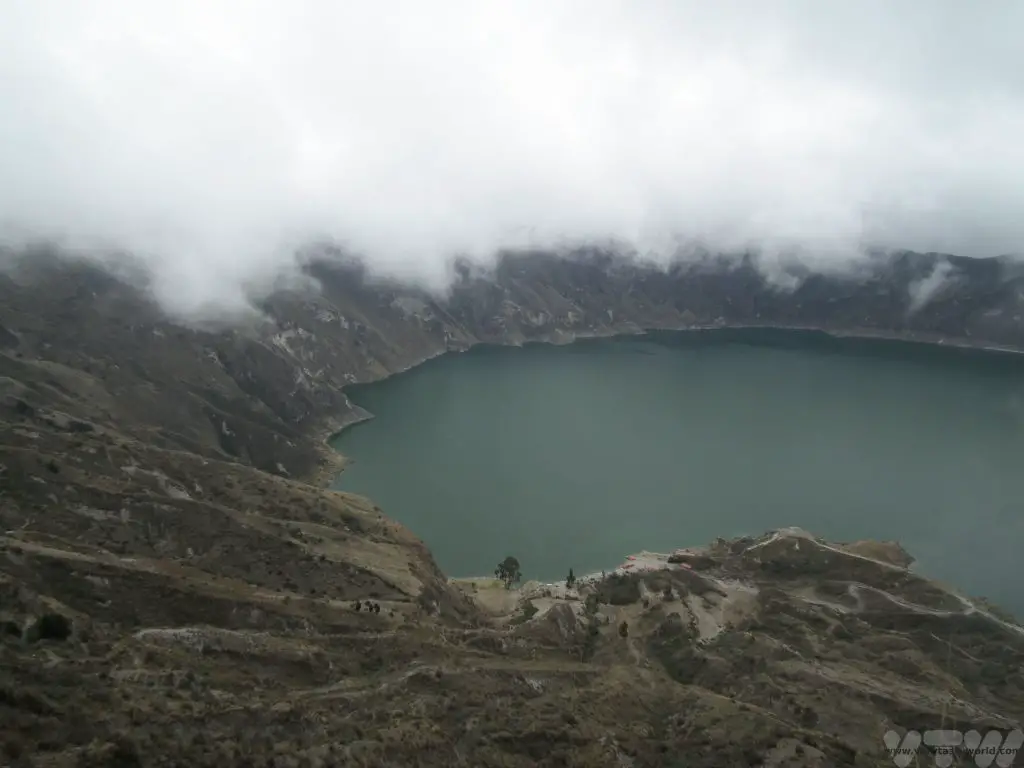A 2 Week Patagonia Itinerary
Patagonia is a dream destination for many people and we had longed to visit this stark, beautiful and remote region for several years. The prospect of travelling to the far southern reaches of the American continent and exploring its wild and beautiful landscapes, gorgeous glaciers and, of course, meeting penguins was irresistible. But unless you live in South America, it is a very long journey to reach Patagonia. And when you get there, distances are long. But it is possible to see many amazing sights within a fortnight. Here is our 2 week Patagonia itinerary.
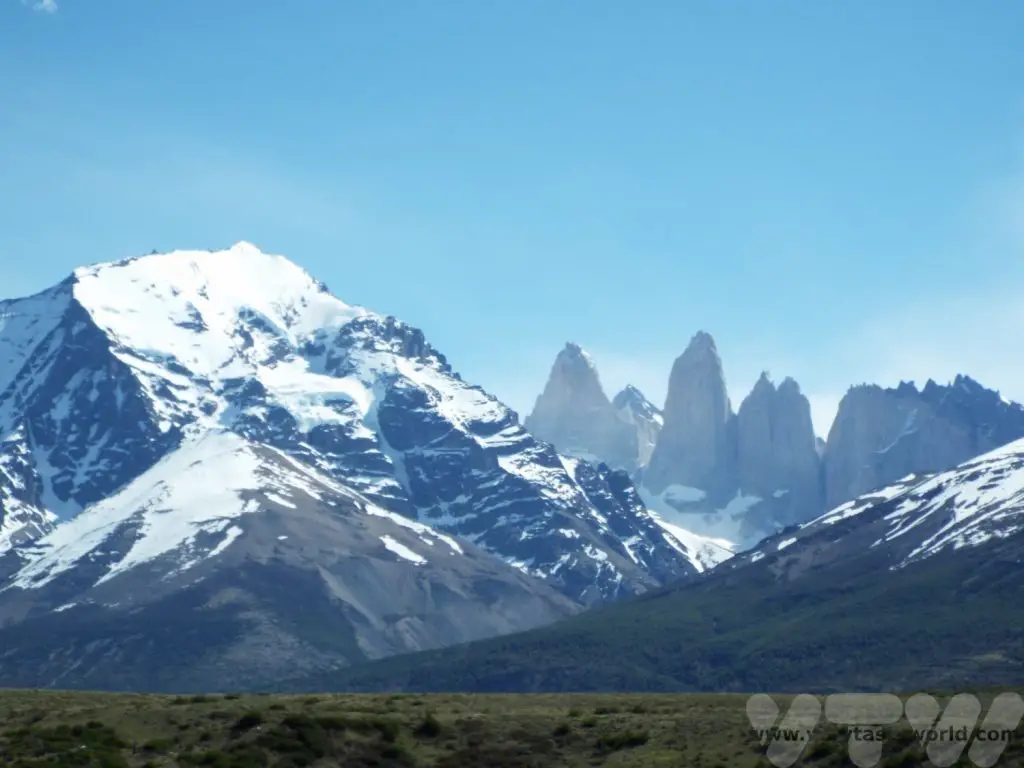
Patagonia 2 Week Itinerary
This Patagonia itinerary is quite full on. It starts in Santiago, Chile and finishes in Buenos Aires, Argentina as those are the best cities to connect with most international flights. There is a lot of travelling and we mainly travelled on buses. They are reasonably cheap and pretty comfortable. It’s a very relaxing way to travel and a great way of seeing the countryside. And, needless to say, the scenery was spectacular all the way.
Please note that this post contains affiliate links. If you click through and decide to make a purchase we will earn a small commission, at no extra cost to you, which will help towards the costs of running this site.
Day 1 Fly to Santiago
Day 2 Santiago
Spend a day exploring Santiago. We don’t recommend flying directly to Patagonia immediately after your international flight, just in case there are any delays.
There are lots of options for things to do in Chile’s capital city. It is lovely to wander through and the metro system cheap and reliable. You can buy a BIP card and share it between your travelling companions. Our hotel kindly lent us a card and we were able to charge it with exactly the right amount of money for the journeys we wanted to take. We just asked the nice lady at the metro ticket office, told her the routes we wanted to take and she charged up the card accordingly.
Set in a valley amidst the towering Andes Santiago is undulating and features a number of hills popping up from the urban sprawl, many of which have become parks. San Christobal park is the largest green space in the city. You can ride the teleferico or funicular and there are plenty of attractions including a zoo, a number of gardens, swimming pools and playgrounds.
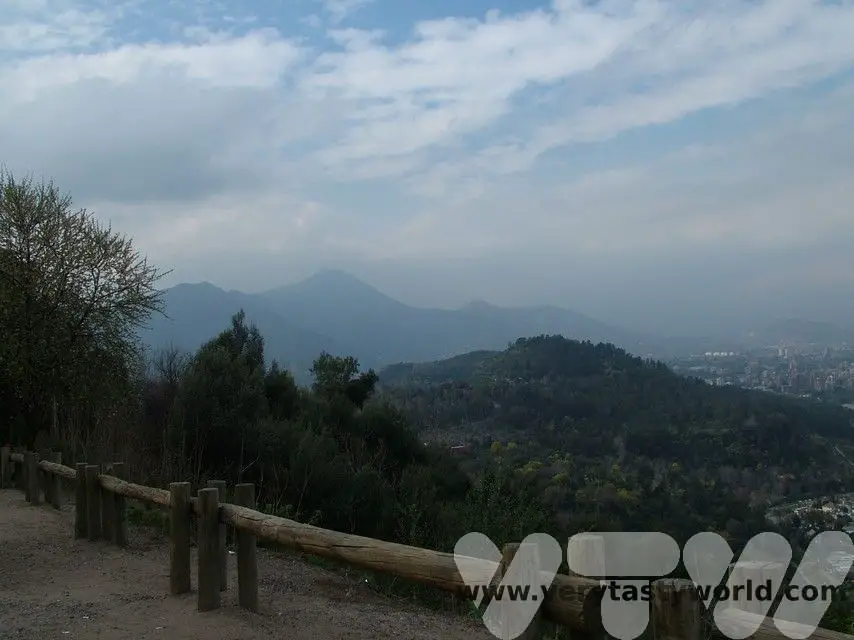
The city centre offers some interesting museums, including the national museum, which has some interesting historic objects including a large number of indigenous artefacts. The Museum das Bellas Artes is a grand building with interesting art exhibitions.
Foodie Recommendation: Make sure to visit the Mercado Central de Santiago – it’s the fish market which also has a number of restaurants. Avoid the big, flashy and expensive affair in the middle, there are loads of much smaller restaurants around the perimeter which offer great seafood at reasonable prices, although you may have to avoid the enthusiastic but not overly pushy touts.
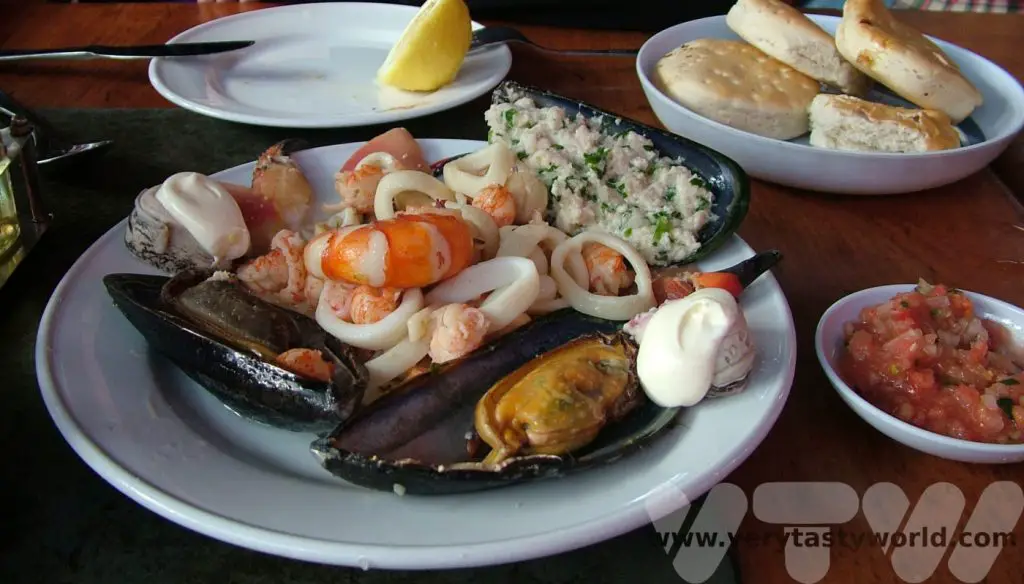
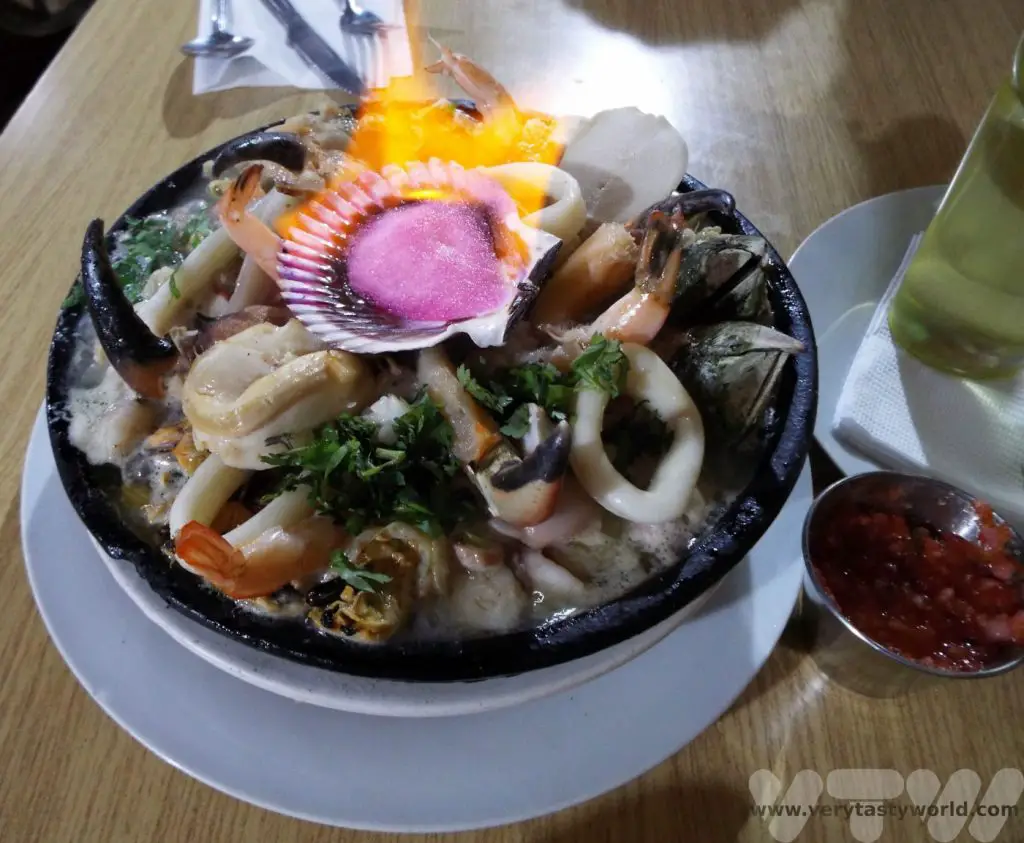
A slightly unusual option for Santiago is taking a day trip to wine country. Just a couple of hours’ drive from the bustling city is the Maipo Valley, where a lot of Chile’s splendid wine is produced. You can tour some of the wineries in the region and enjoy a tasting. Chile’s climate is suited to growing vines and the wines it produces are exceptional quality.
(NB – we didn’t do all these activities on the day before our Patagonia journey, we had visited Santiago on a previous trip. These are just some of the options for spending time in the city before travelling south.)
Day 3 Fly to Punta Arenas
Back to the airport for the five-hour flight to Punta Arenas. If the weather is clear you will see fantastic views of the Andes and will also fly over Chile’s ‘lake district’. Punta Arenas itself is around half an hour away from the airport and there are plenty of options for the 30-40 minute ride into town, including taxis and shared shuttle buses.
Located on the Strait of Magellan Punta Arenas has some interesting museums including Museo Naval y Marítimo, a maritime museum, Museo Regional de Magallanes, a grand mansion.
There are a number of monuments in the city, including Monumento A Tripulantes Galeta Ancud which commemorates the Strait of Magellan becoming part of Chile on 21st September 1843.
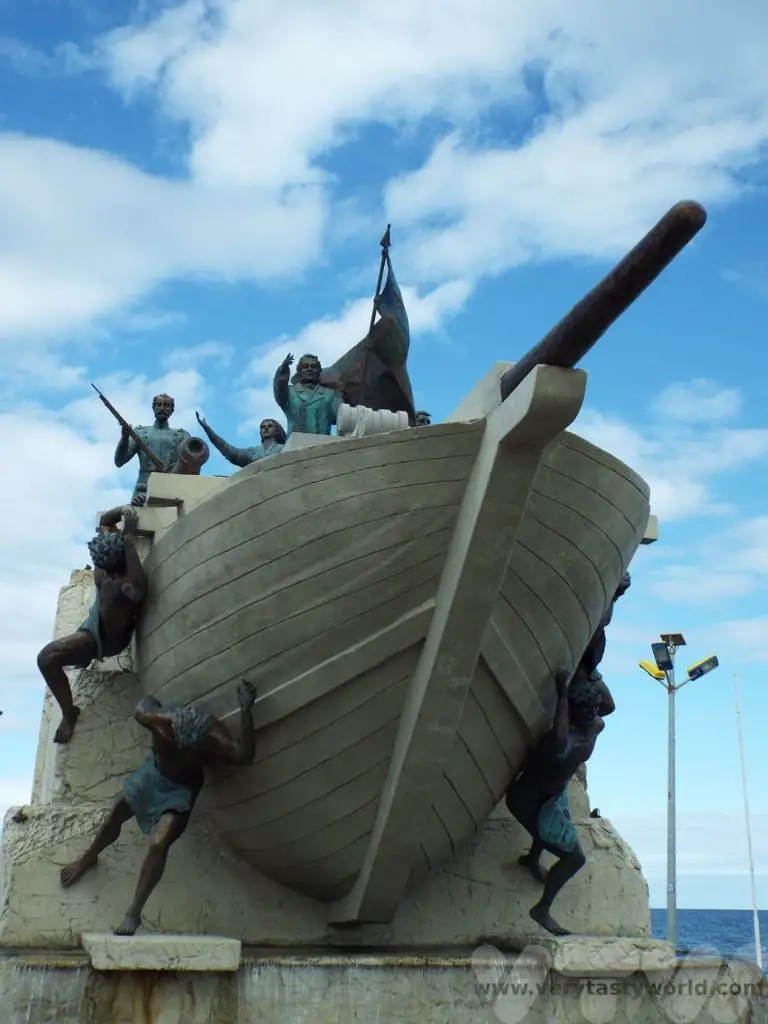
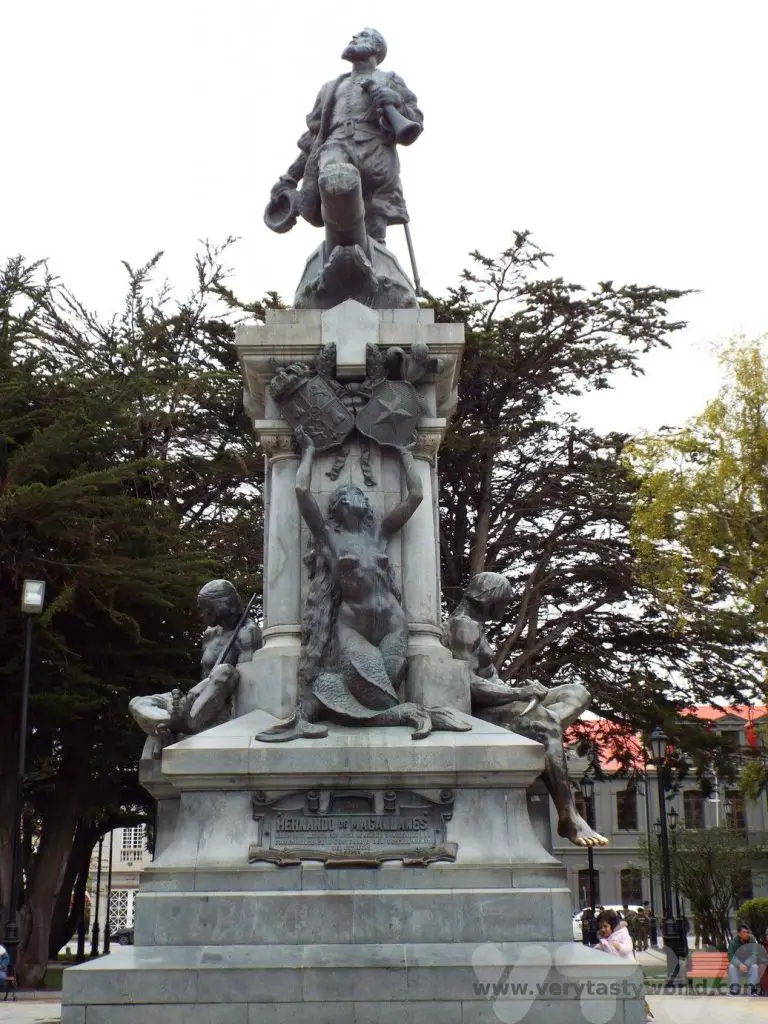
And a monument to famous Portuguese explorer, Ferdinand Magellan.
Foodie Recommendation: La Marmita, on Pl Francisco Sampaio 678, is an excellent restaurant to try local food. Guacano carpaccio, hare stew and Patagonia lamb were amongst the dishes we tried.
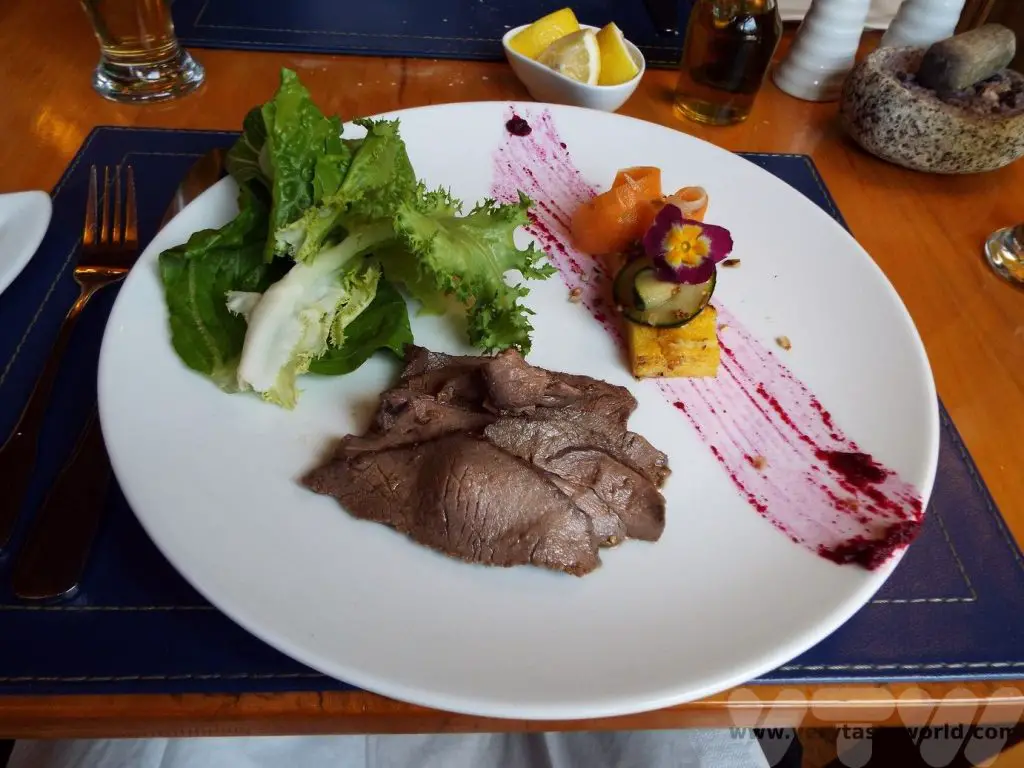
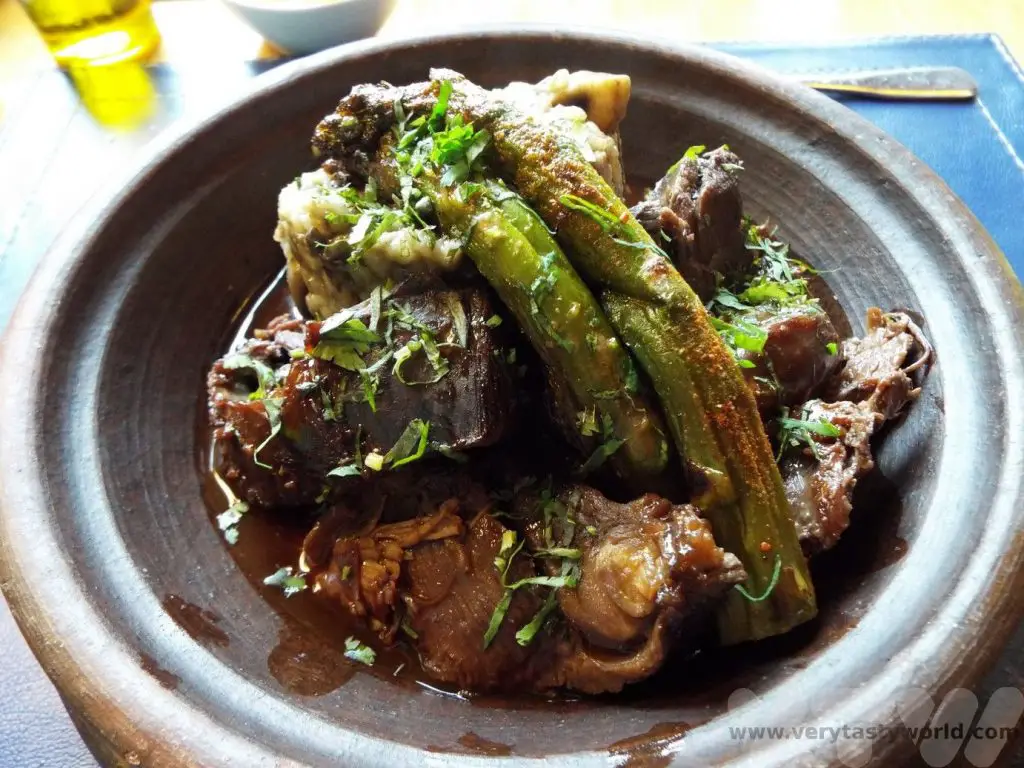
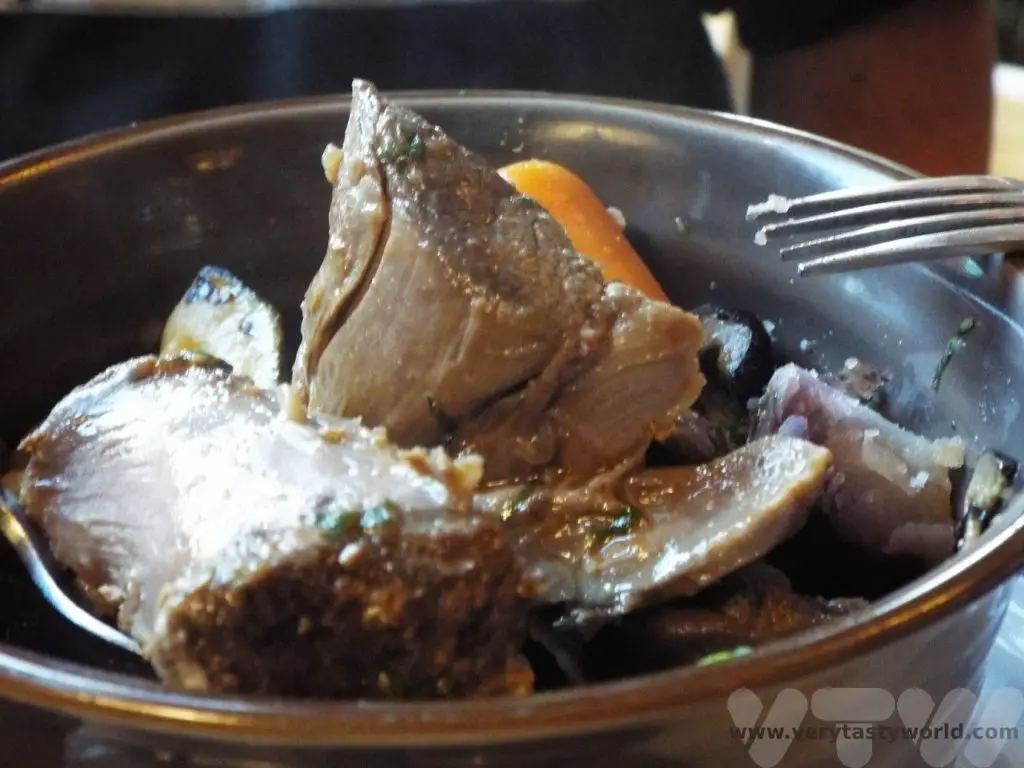
It’s more expensive than some of the other options but prices were reasonable, especially for the quality of the food. It’s popular so worth booking a table if you are likely to be eating in the evening. Don’t forget to try the local craft beer – there are a lot of varieties available and they are rather good.
Day 4 Penguin Excursion to Magdelena Island
You can’t come to Patagonia and not see penguins! One of the most popular things to do in the area is to take an excursion to Magdelena Island to see the Magellanic penguins. There are lots of tour operators who can arrange the excursion – many will offer a hotel pickup.
The trip involves a short drive to the coast where you will pick up a boat that will take you to Magdelena Island, which is located in the Strait of Magellan around 35km from the mainland.
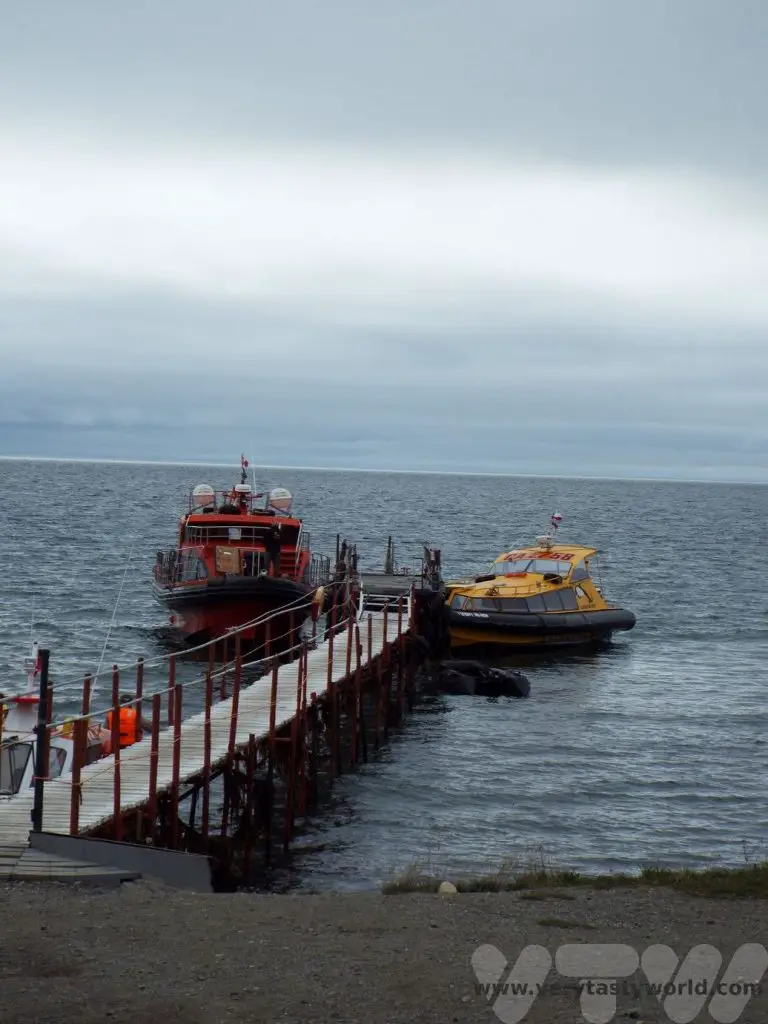
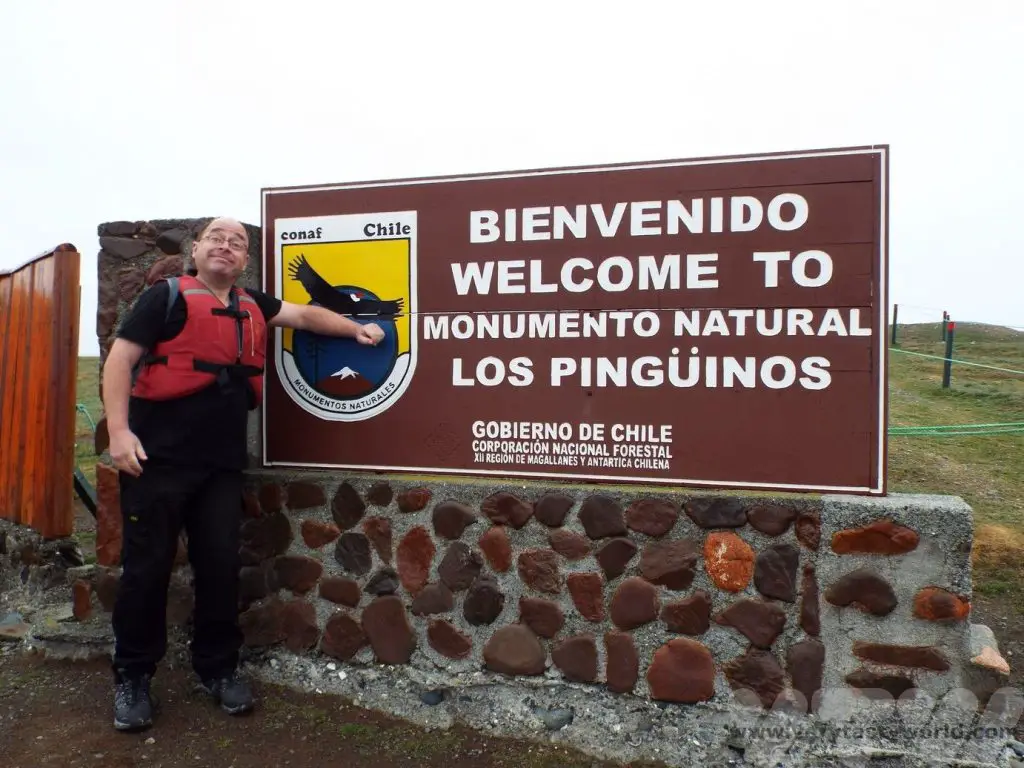
The island is inhabited by over 100,000 Magellanic penguins and a just few rangers, so you have an excellent chance of encountering them. In fact, you may well be able to get very close. You are asked not to approach or touch the penguins but they may well waddle over to you!
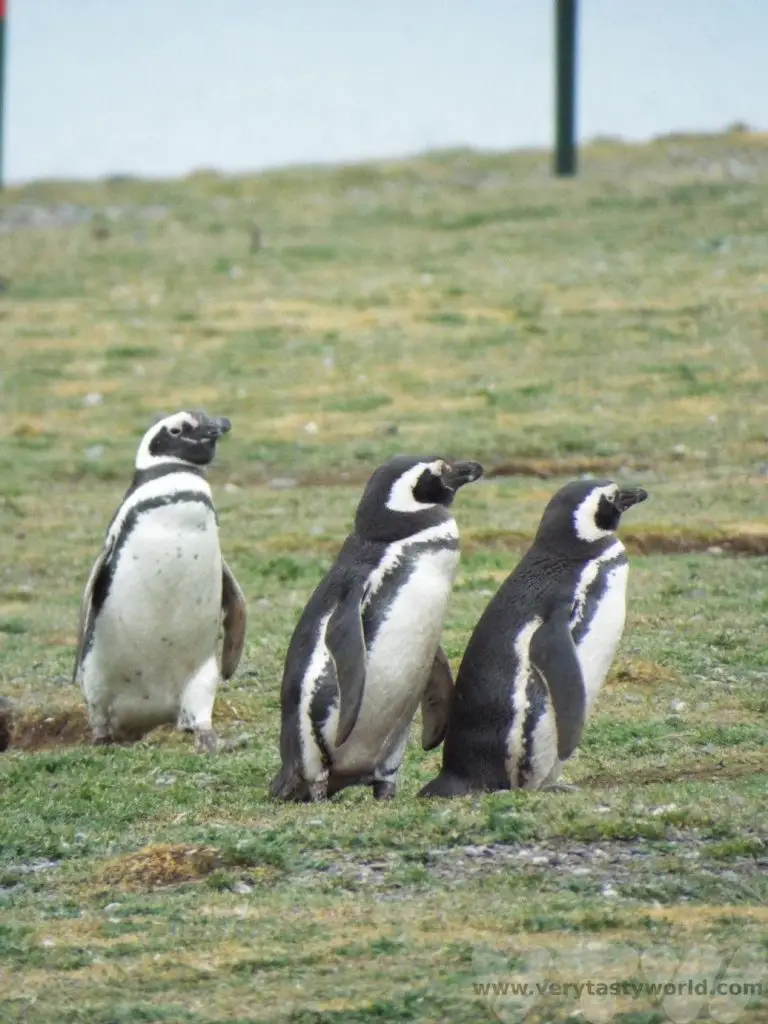
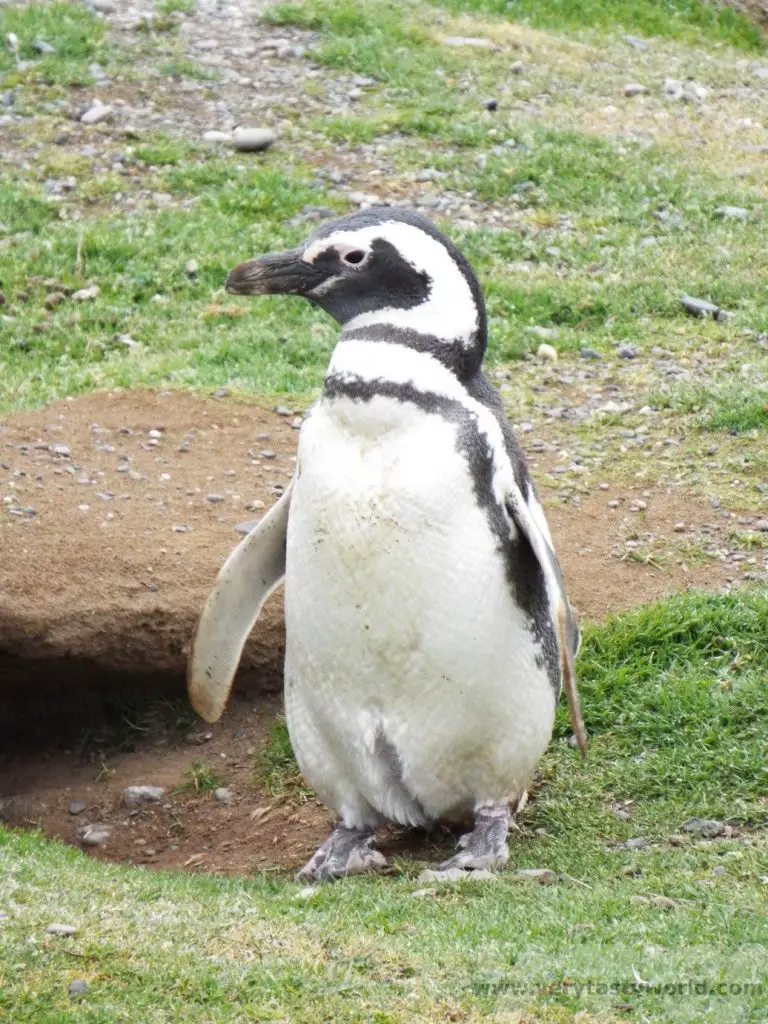
They build nests in the ground, so you have to follow a clearly marked set route as you walk around the island. Nesting season is from October to March.
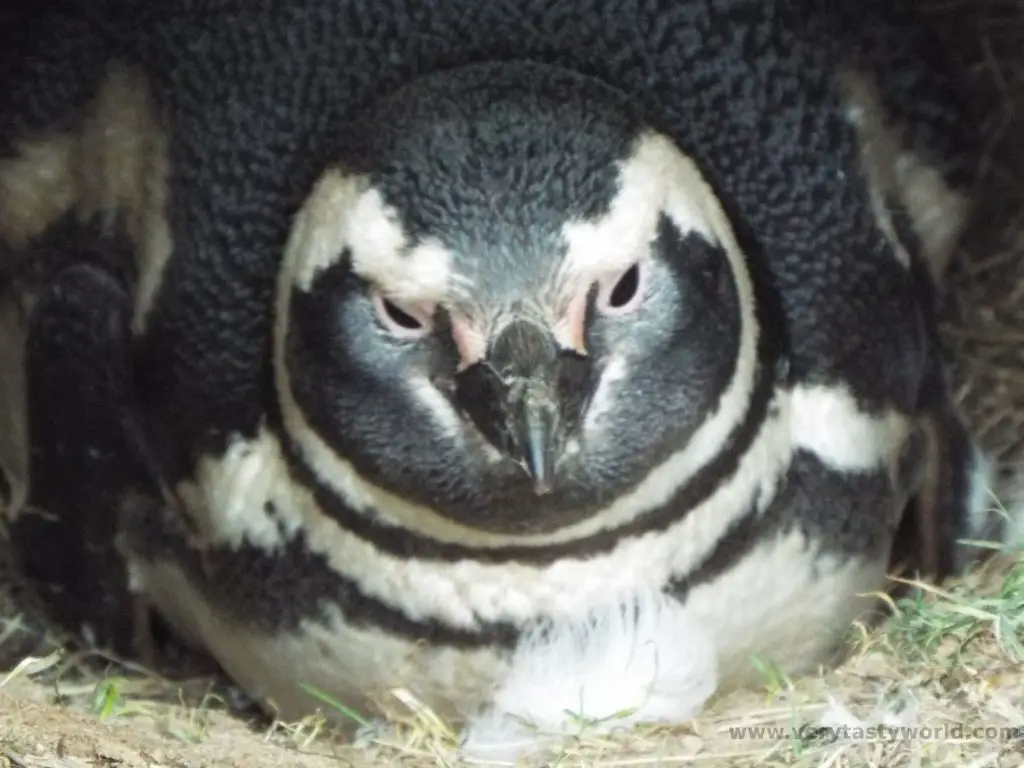
After around an hour walking round the island, it’s back on the boat to pass by Isla Marta to view the sealions, posing proudly on the shore and occasionally having a territorial spat.
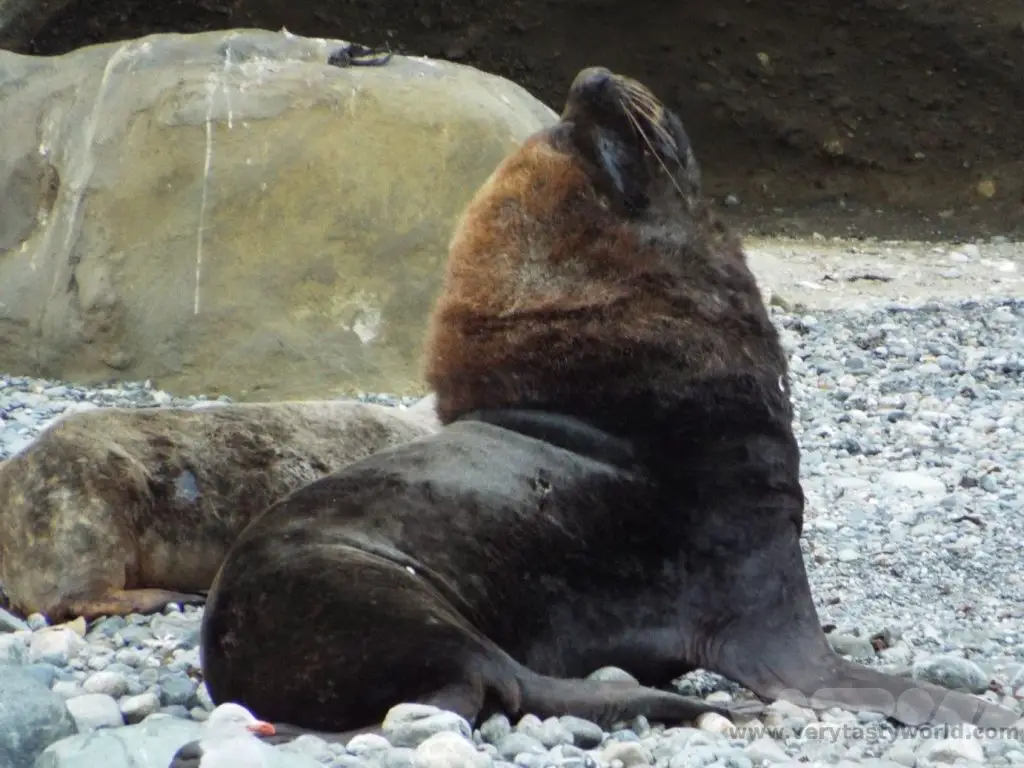
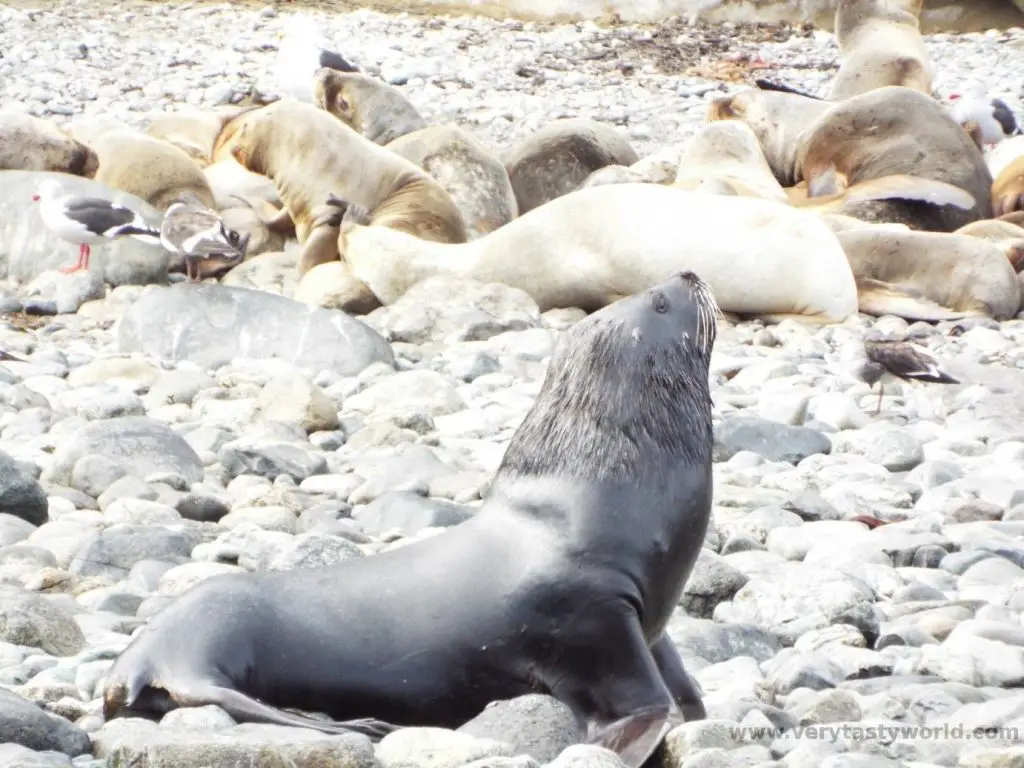
There are alternative excursions available to see King Penguins on the Tierra del Fuego island. It’s a long day – a much further drive and you can’t get so close to the penguins, but if you’re passionate about penguins, it’s worth considering. We loved being able to get so close to the little Magellanics.
Day 5 Bus to Puerto Natales (4 hours)
The bus station in Puerto Arenas is located in the centre of town, so it’s easy to pick up the bus for the drive to Puerto Natales. This is a small port town which is quiet but friendly. It is the main stopping point for the Torres del Paine National Park so is geared for tourists and has plenty of hostels and restaurants.
There is a lovely walk along the waterfront with the majestic mountains providing a backdrop.
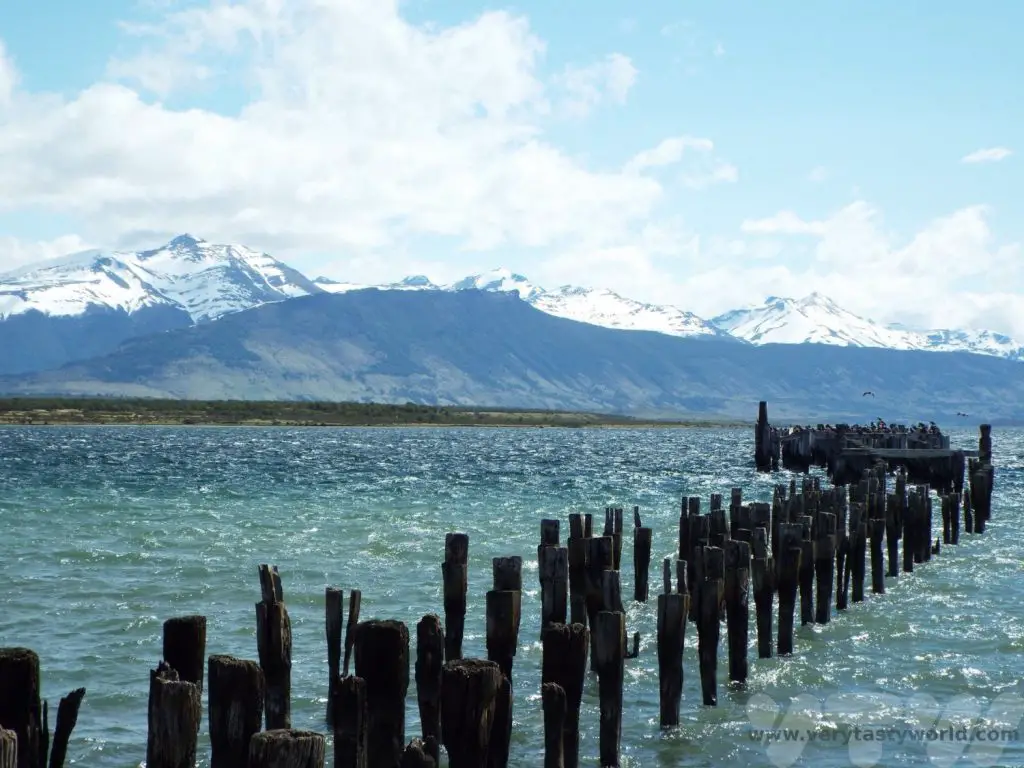
Foodie Recommendation: Make sure you enjoy some of the seafood at the plentiful restaurants in the town. The crab is particularly good.
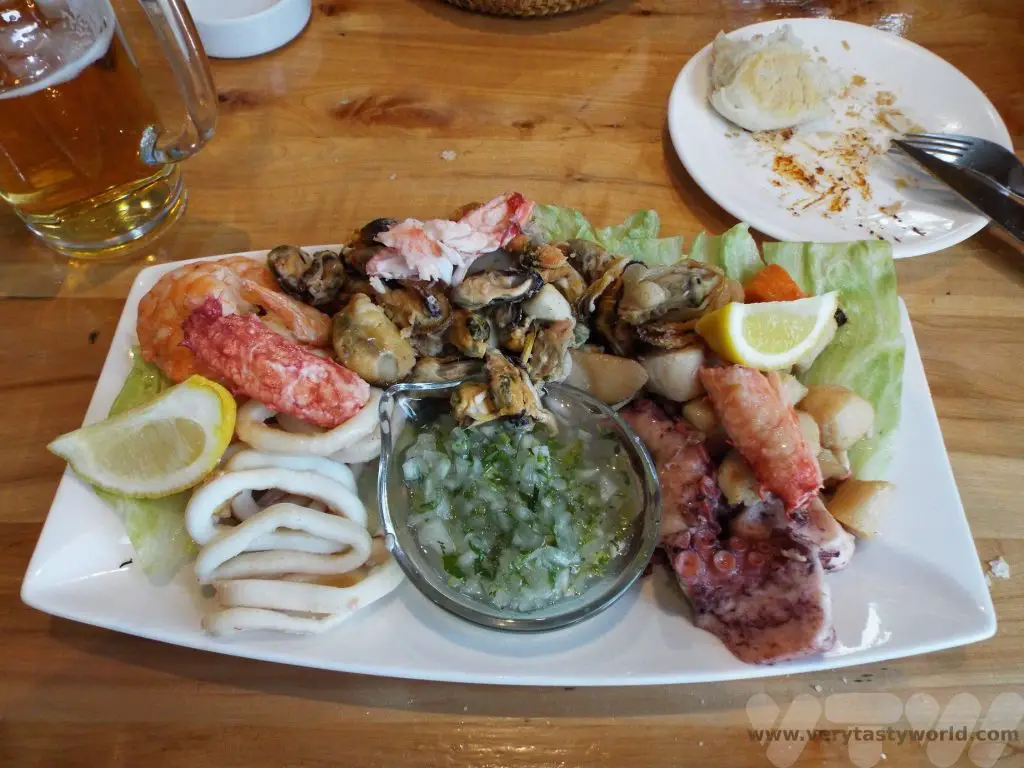
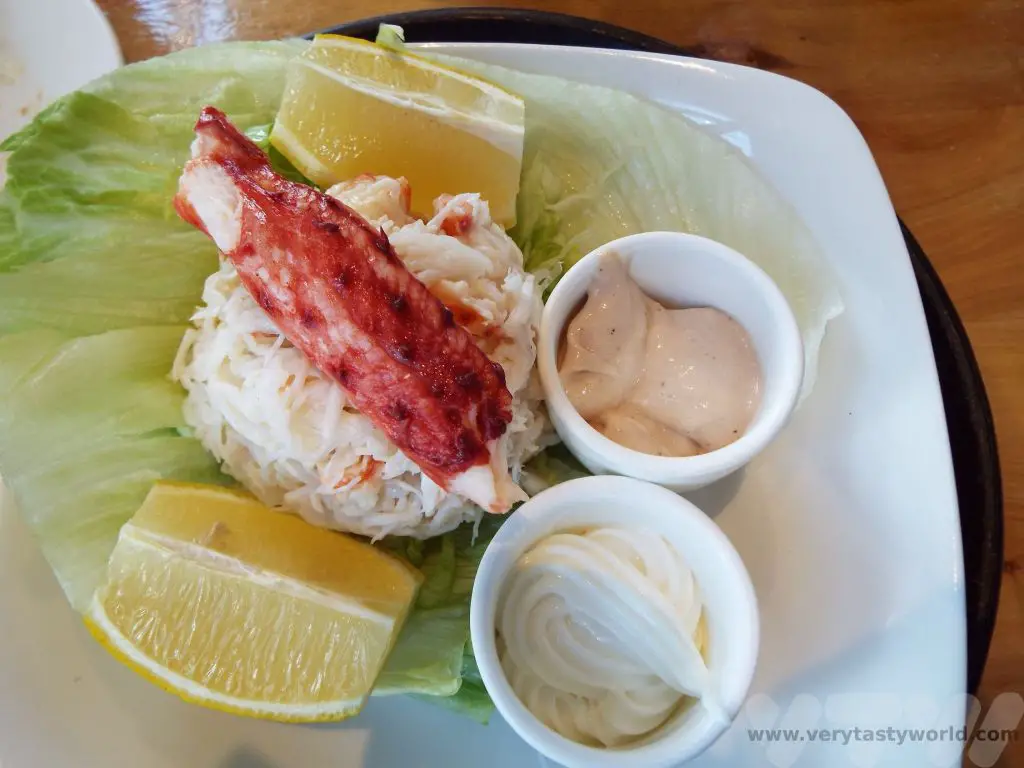
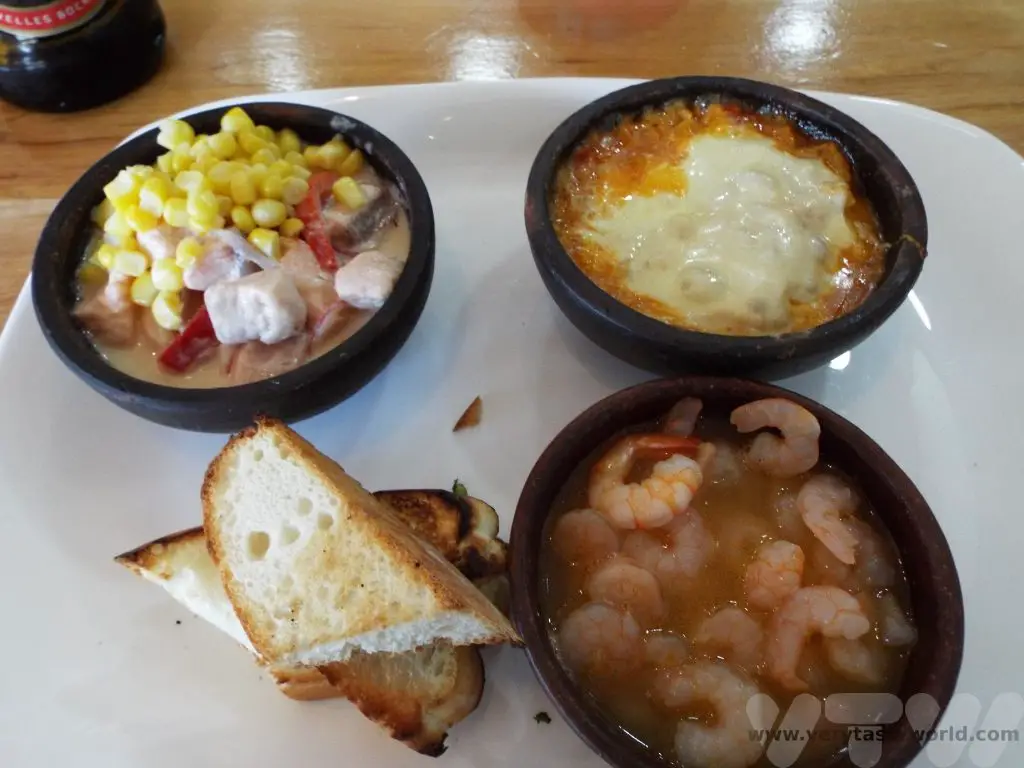
Day 6 Drive to Torres Del Paine
Although tour options such as coach trips are available in Puerto Natales (and indeed from Punta Arenas) we recommend hiring a car to explore this most spectacular region. There are a number of hire car companies in Puerto Natales – just remember to bring your driving licence and an international driving licence. You can travel at your own pace. Driving is very easy on clear roads (follow route 9) and you can choose your route and take your time to stop off at the many gorgeous attractions in the area. Depending on which entrance you decide to drive to the journey should only take a couple of hours, leaving you plenty of time to explore the park.
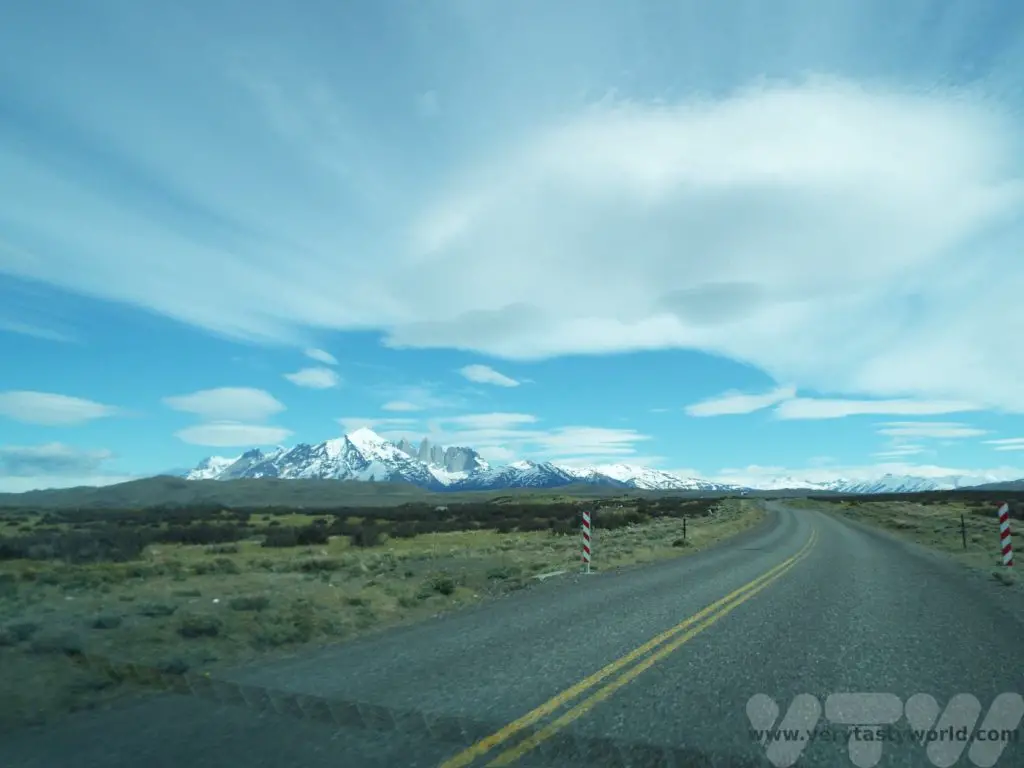
Days 7-8 Torres Del Paine
We have a full post about visiting Torres Del Paine. This wild, windy and wonderful wilderness was one of the highlights of the trip. You will need a ticket to enter the park and you have to register with the park authorities when you arrive.
Some of the main attractions include:
Lago Grey – Grey lake which is fed by Grey Glacier. You can walk a trail onto the strangely beautiful beach. Icebergs that have broken from the glacier contrast with the stark grey of the lake.
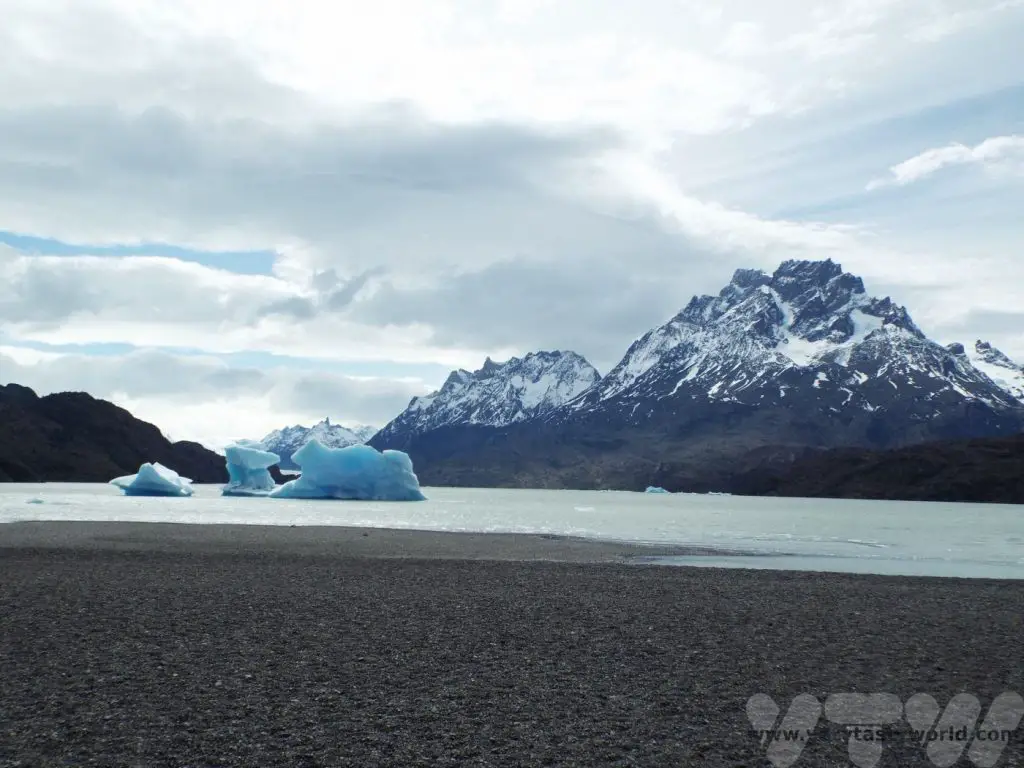
Salto Grande Waterfall
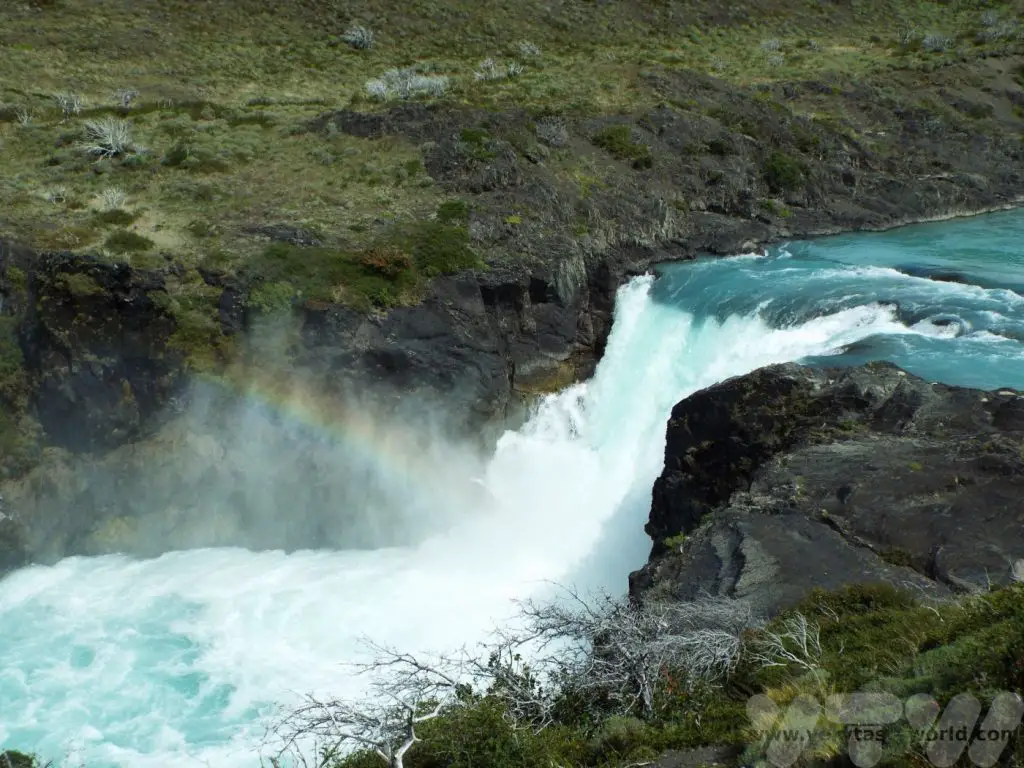
Laguna Azul
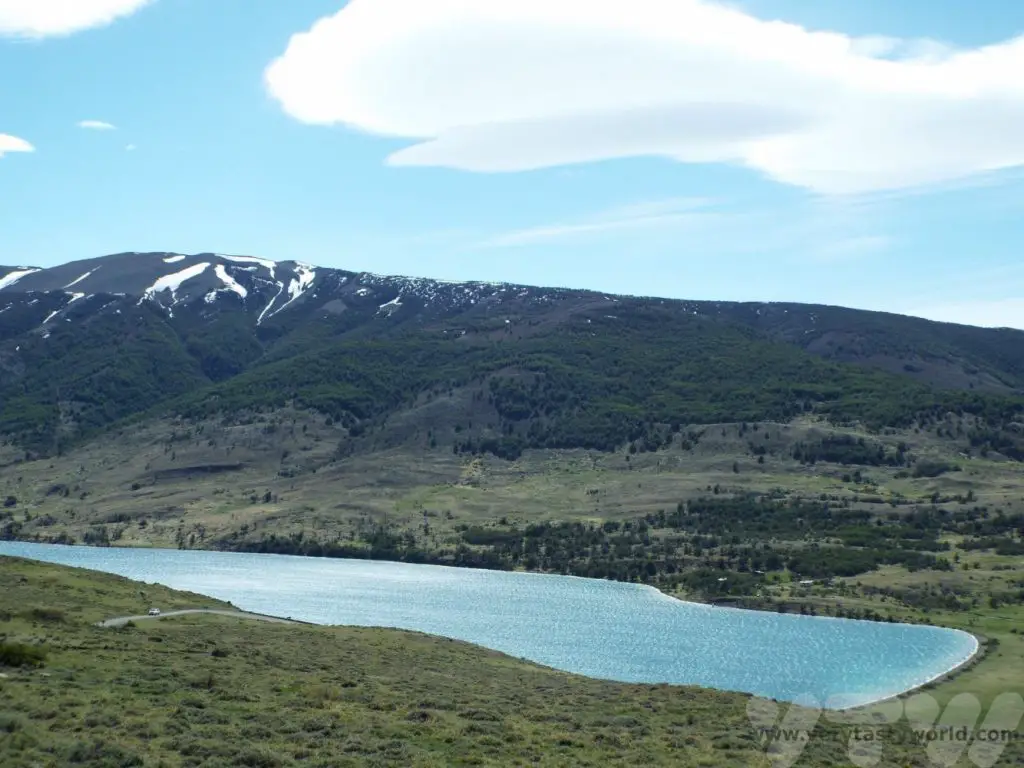
You may want to hike to the famous Base de Torres. This is a seven-hour round trip so is possible to do in a day.

There is also plenty of interesting wildlife to see. You will be certain to see guanacos but maybe you will get lucky and see a large flightless rhea or even a puma!
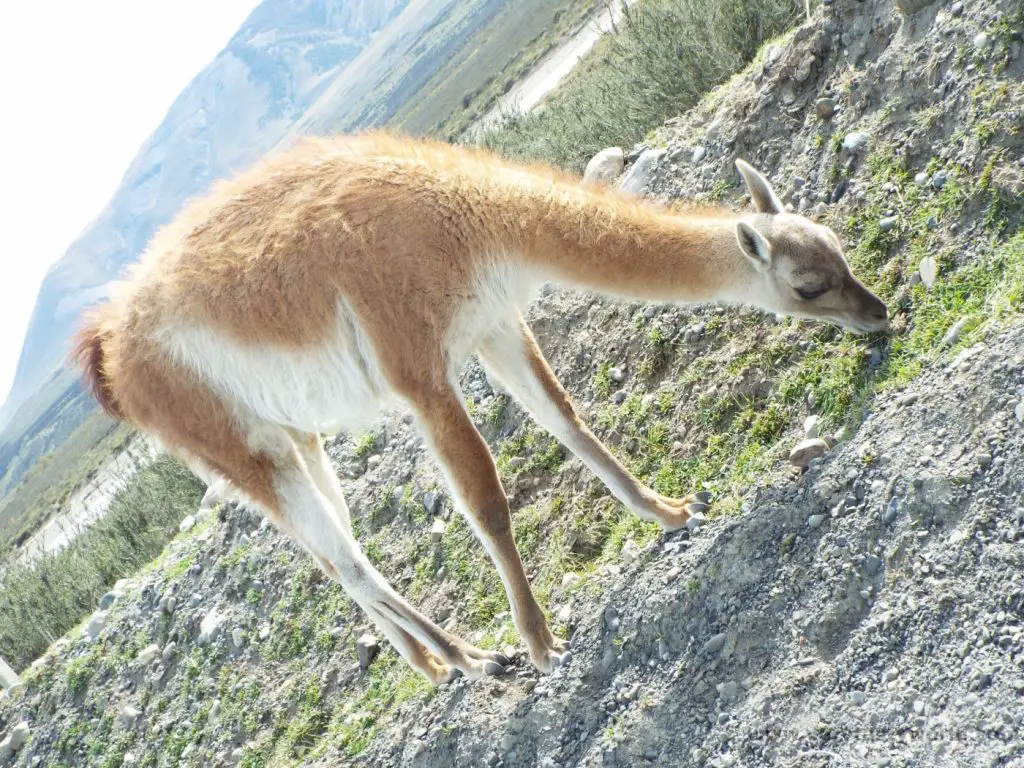
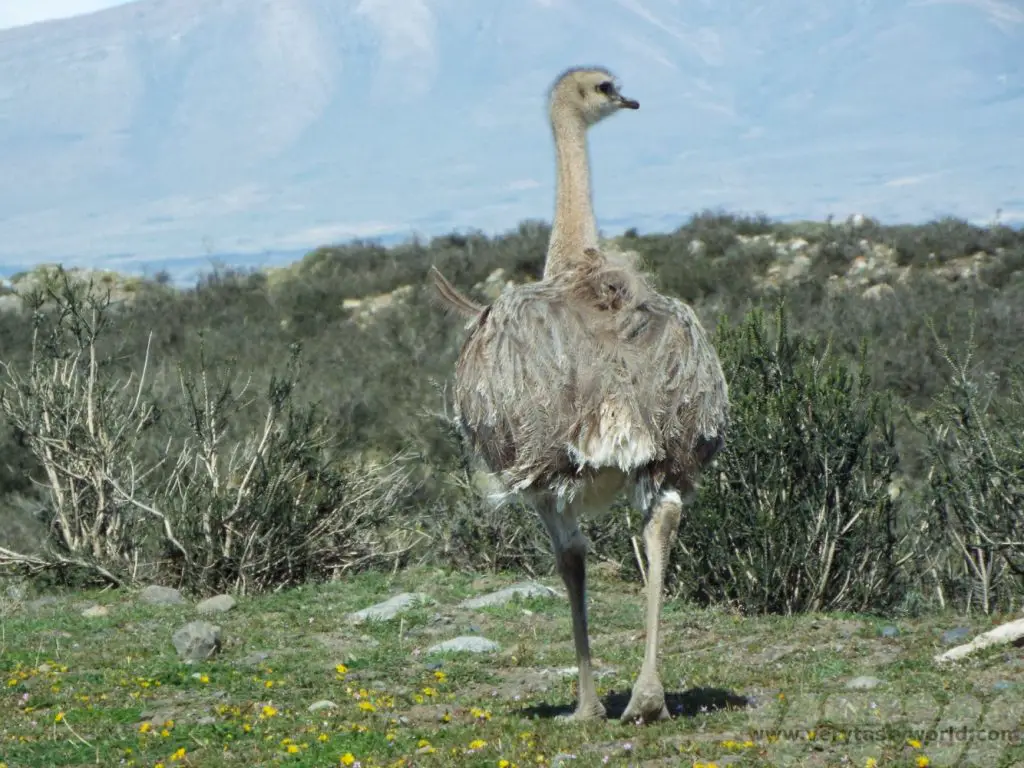
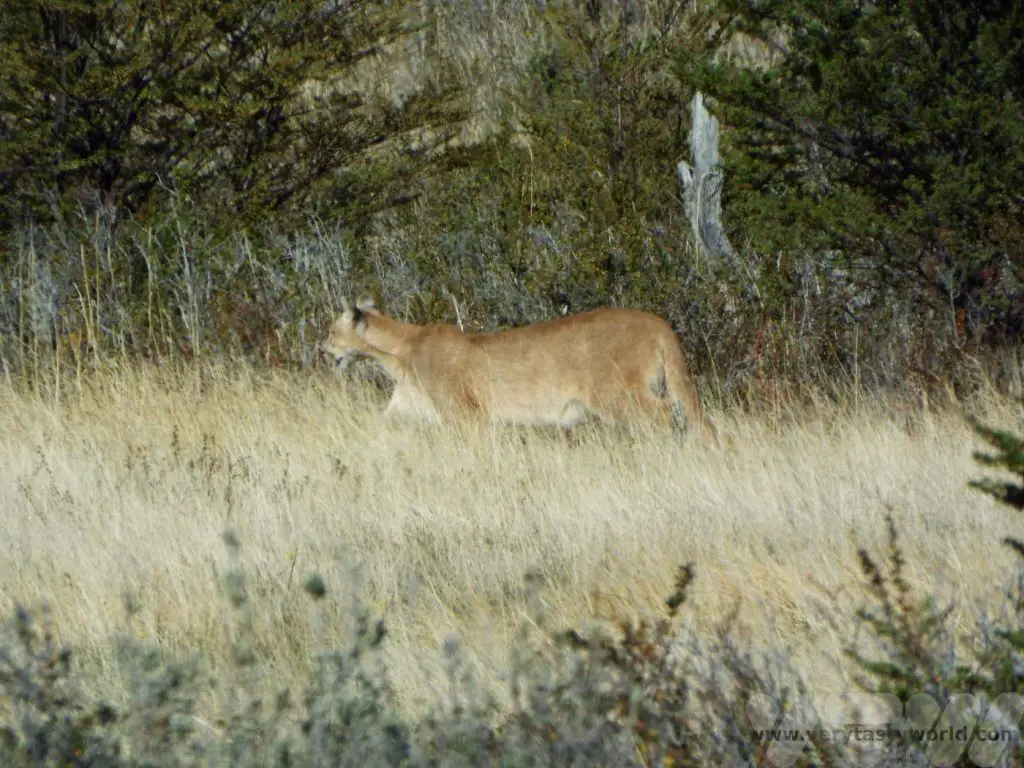
There are plenty of attractions to explore and hikes to enjoy, but make sure you have enough time to return the car to Puerto Natales.
Day 9 Bus to El Calafate (7 hours including the border crossing)
This is the longest bus journey and involves crossing the border from Chile into Argentina. The crossing takes a little time but is very straightforward. As you leave Chile, everyone troops off the bus, queues inside a little hut to get their passport stamped and jumps back on the bus. You will then drive a few hundred metres to the Argentina side whereupon everybody troops off the bus, queues inside a little hut to get their passport stamped and jumps back on the bus.
Don’t forget to keep your passport with you. It’s always good practice to carry it on your person instead of packing it into your luggage. Before you travel it would be wise to check whether you need any visas to enter Argentina.
El Calafate is a town that is often called the ‘gateway to Los Glaciares National Park’ as this is the primary draw for visitors.
There are lots of tour companies in town which can offer excursions. We recommend spending at least a couple of days here, particularly taking a boat trip to the Los Glaciares lake and another day visiting the stunning Perito Moreno glacier.
There are some things to do in El Calafate itself. It has a bird sanctuary, Laguna Nimez Reserva, which has some 80 different species of bird to see – local and migratory species. You pay a small fee and can walk around the lake. Binoculars and bird guides are available. If you’re lucky you may see some flamingos!
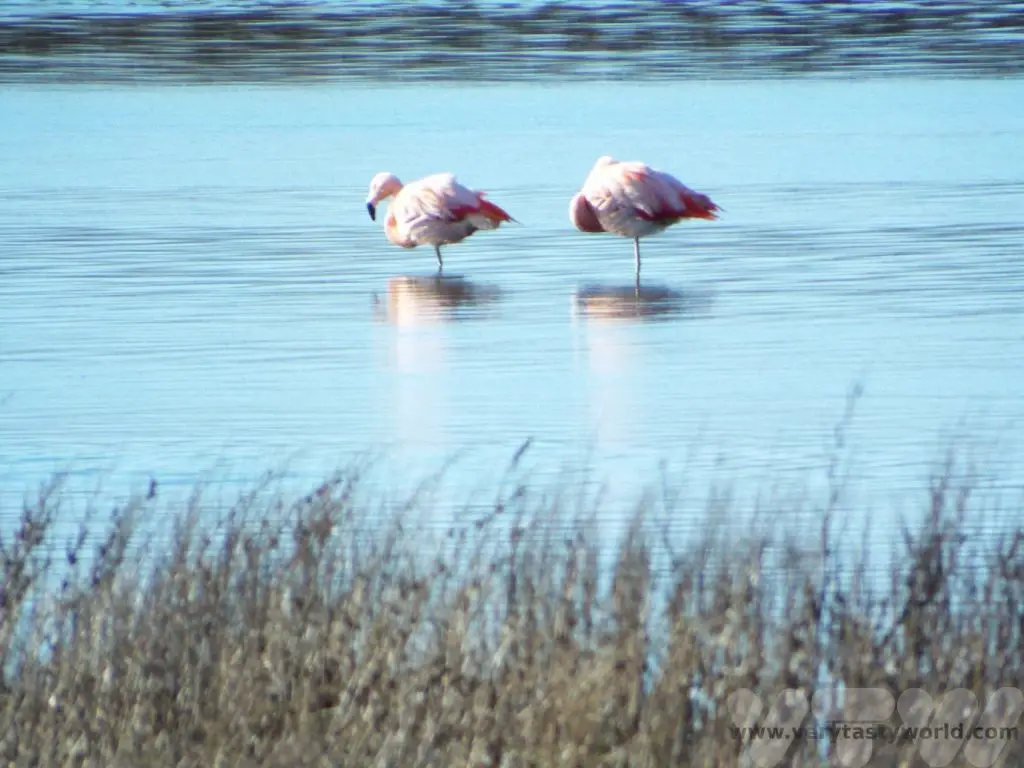
The Centro de Interpretación Histórica is a small but fascinating museum which showcases fossils, particularly of giant mammals that roamed the earth several millennia ago around the time of the last ice age. It’s a really friendly place to visit and you can enjoy a free cup of mate (pronounced matay) – a herbal infusion that is enormously popular throughout Argentina – indeed it’s the country’s national drink.
Just out of town is the Glaciarium, a museum inside a beautifully designed building, which is an impressive education centre focussing on glaciers and ice.
Foodie Recommendation: Vegetarians look away now. Meat eaters – you can’t come to Patagonia and not taste Cordero a la Estaca. This is Patagonian lamb slow roasted for hours on a spit above the flames of the fire. Because it is cooked on a vertical spit, the fats and juices from the cooking flow back into the meat constantly basting it and enhancing its flavour. It literally falls apart when it is served. If you go to a restaurant you are quite often given free bread with the meal – we found this offered more than enough carbs and was perfect for soaking up those luscious lamby juices.
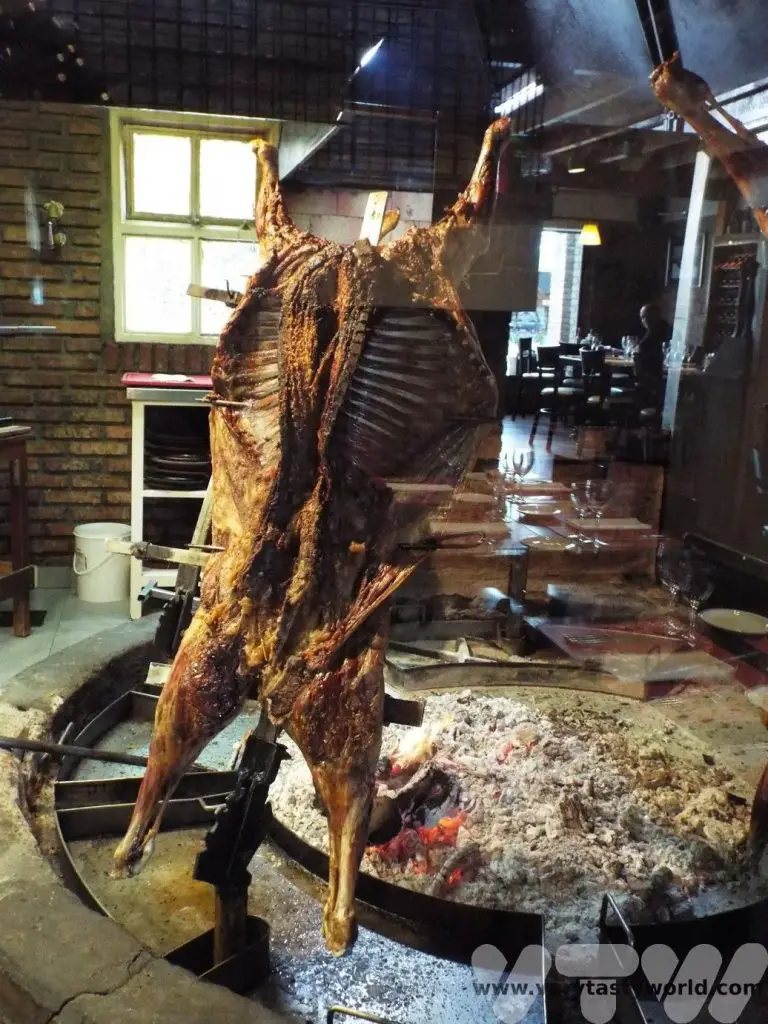
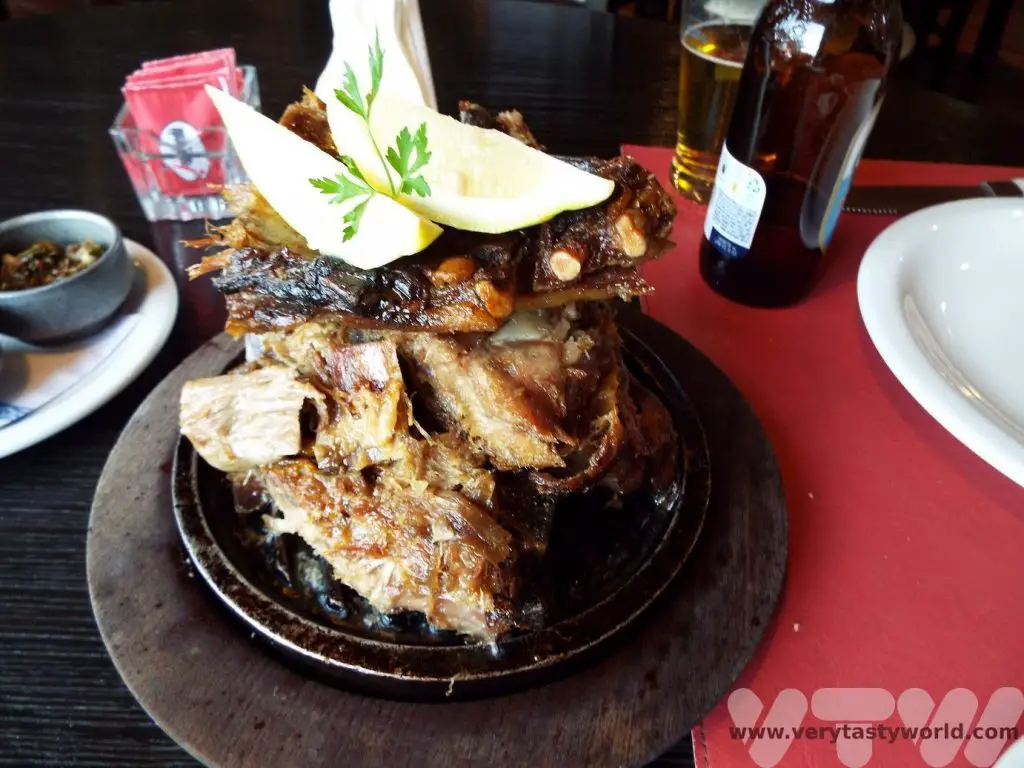
The meat is great quality and utterly sumptuous. However, after a few days in the area we did find ourselves craving salad! (And it was available.)
It has to be said that good dining is more difficult – but not impossible – in Argentina if you don’t eat meat.
El Calafate also – curiously – has a sushi restaurant of all things! Well, we had to try sushi at 50 degrees south of the equator! We received a welcome from the friendly proprietors and, although the sushi was very much adapted to local tastes (salmon with cream cheese) it was tasty.
Day 10 Los Glaciares Boat Trip
As its name suggests Los Glaciares is a national park which is not only stunningly beautiful but is a place where you can really get close to the many glaciers of the region. A UNESCO site, thirty percent of this region is covered in ice and the park contains the world’s third largest ice sheet after Antarctica and Greenland. It has more than 40 glaciers in the area.
The first day involved a boat trip across the azure waters of Lago Argentina. Hotel pickups are available and you drive around 50km to Puerto Bandera to catch the boat.
The boat accommodates around 100 passengers. It travels across the lake towards the north channel to the Upsala glacier, South America’s largest ice sheet which is 50km long and 10km wide.
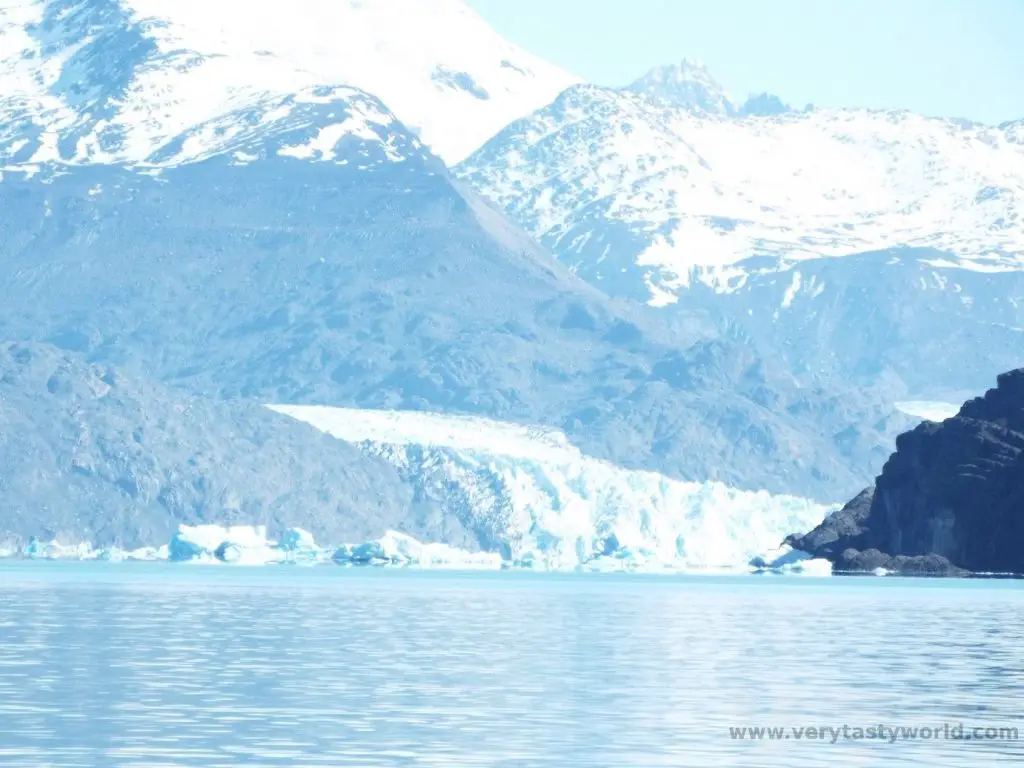
Icebergs regularly calve from the glacier and float serenely across the lake.
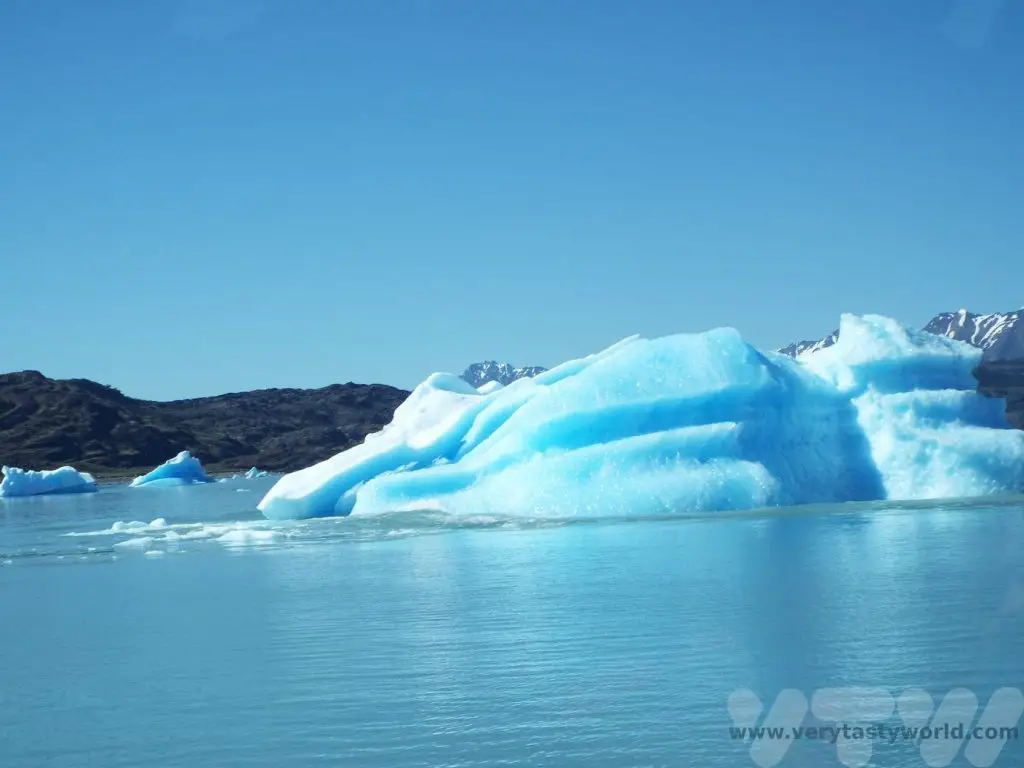
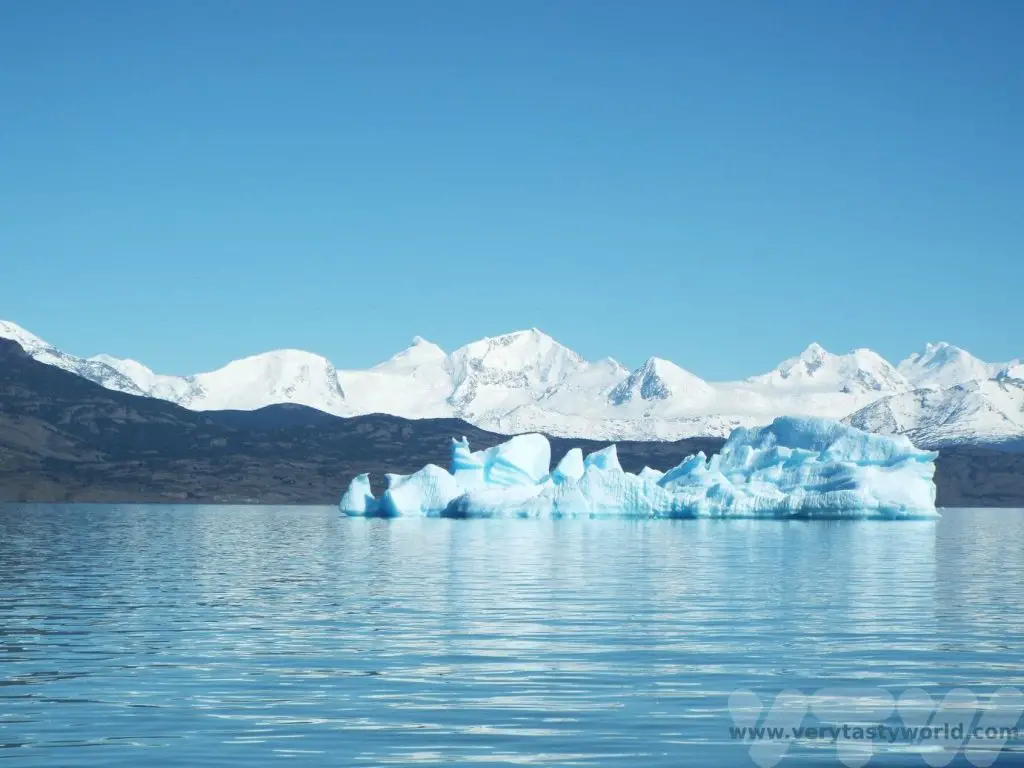
Cruising along the coastline you can see how the glaciers have slowly but surely shaped the landscape.
The next glacier is the Spegazzini. It’s just 1.5km wide but is incredibly tall.
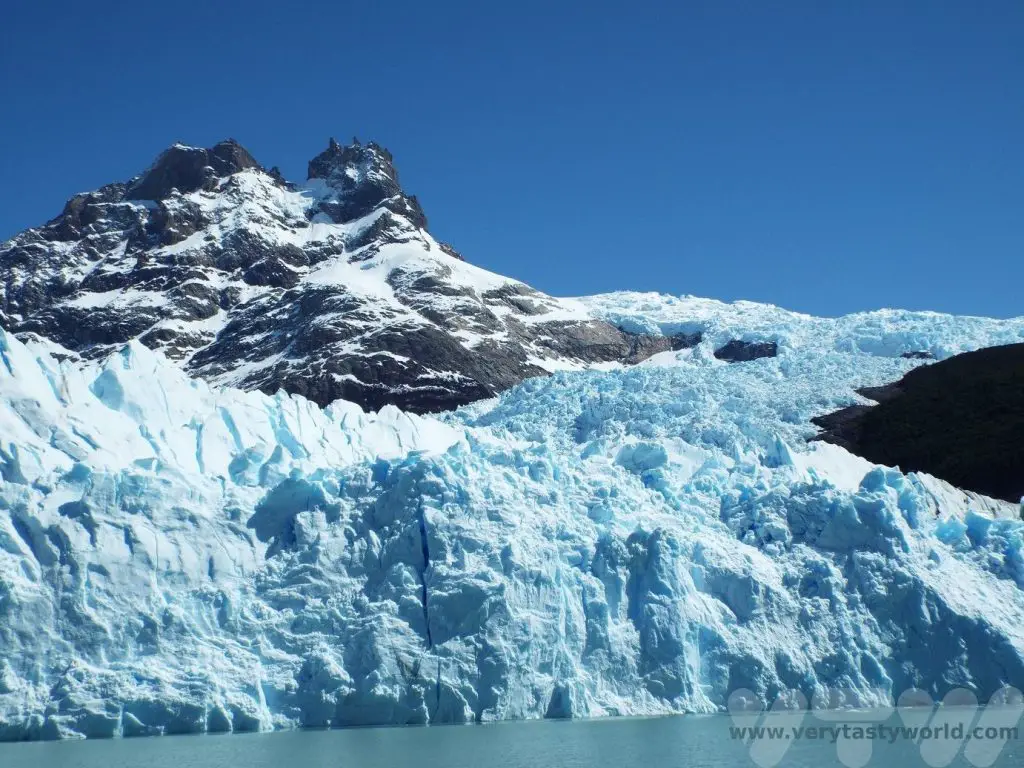
Day 11 Perito Moreno Glacier Day Trip
What can beat viewing spectacular glaciers? Walking on a spectacular glacier, that’s what! The following day we enjoyed a visit to the Perito Moreno glacier where we could don crampons and walk on the ice.
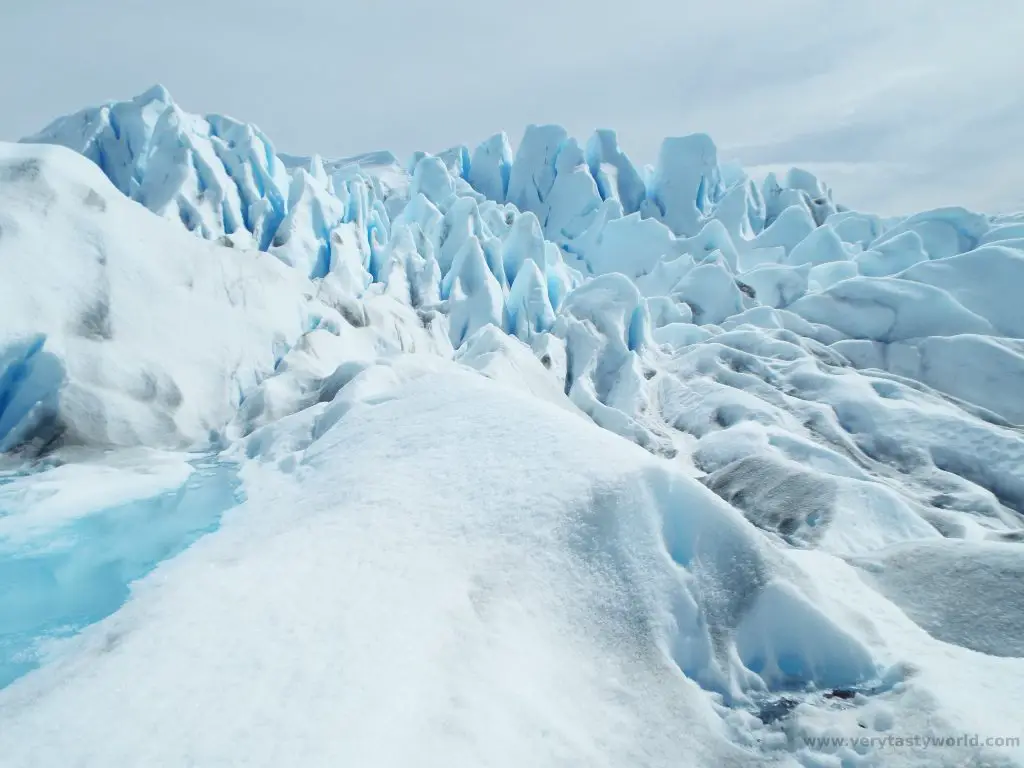
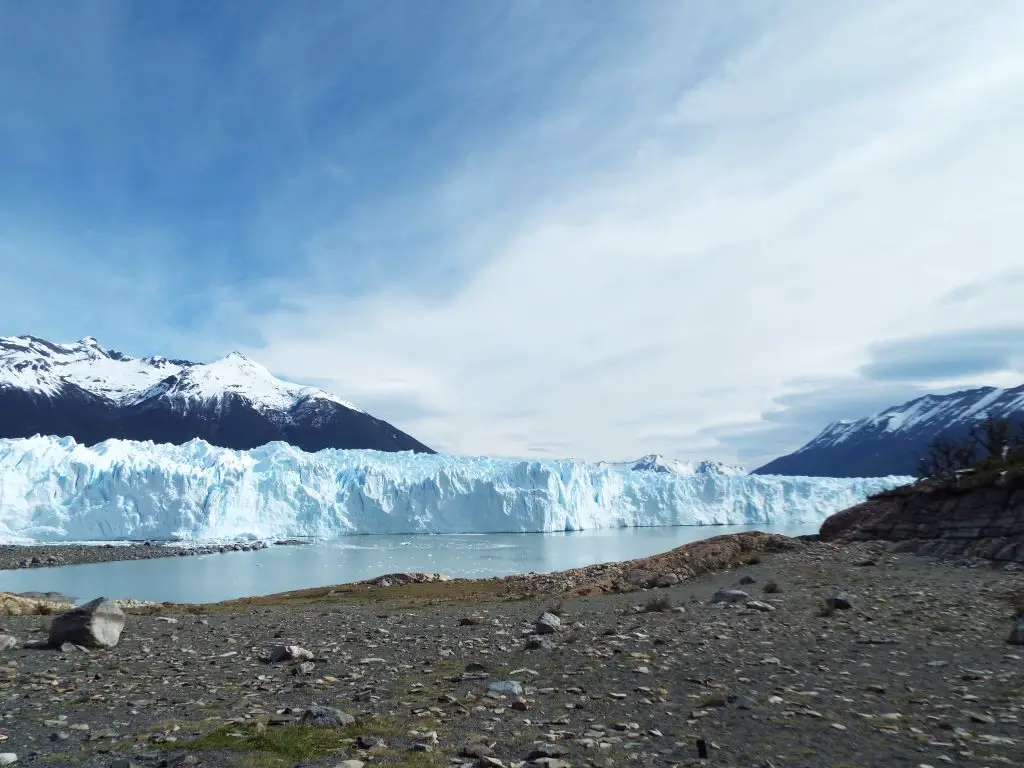
There are various options from a couple of hours’ trekking to the Big Ice, an 8 hour full-on hike right onto the glacier.
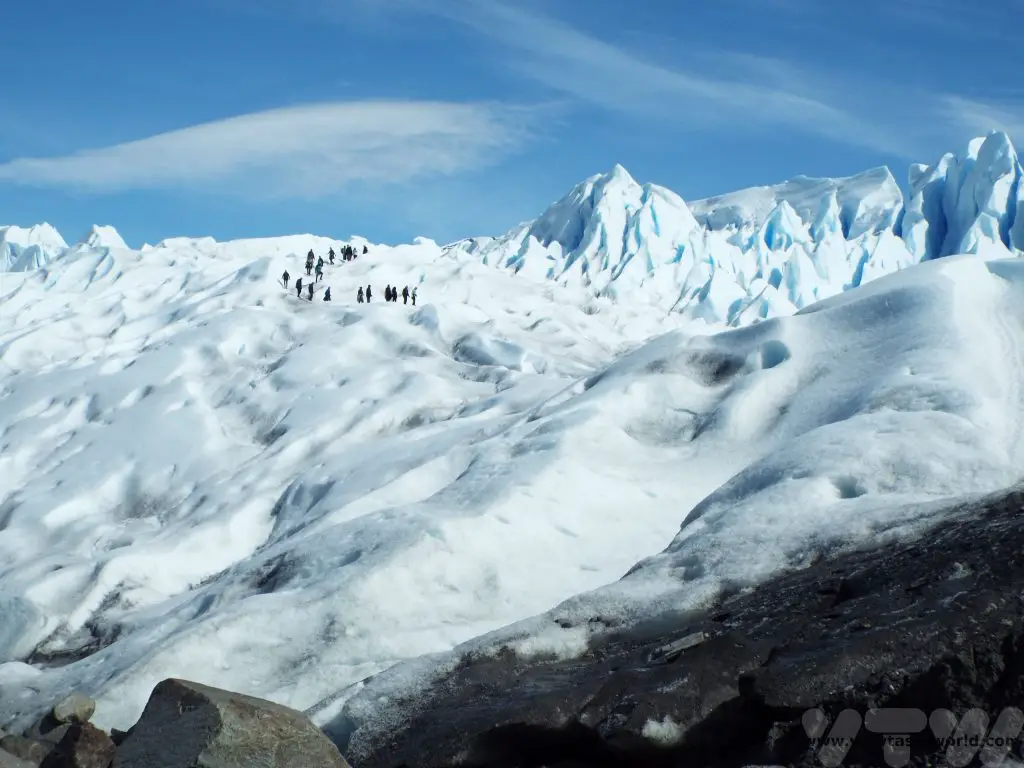
The shorter visits are well worth doing. And there’s a treat at the end. You can read about the full details about hiking the Perito Moreno, including what clothing to wear, in this post.
Because this glacier is accessible by land there is also a viewing platform and boardwalk. So even if you don’t want to trek on the glacier it is possible to admire it. The boardwalk area has a restaurant and bathrooms.
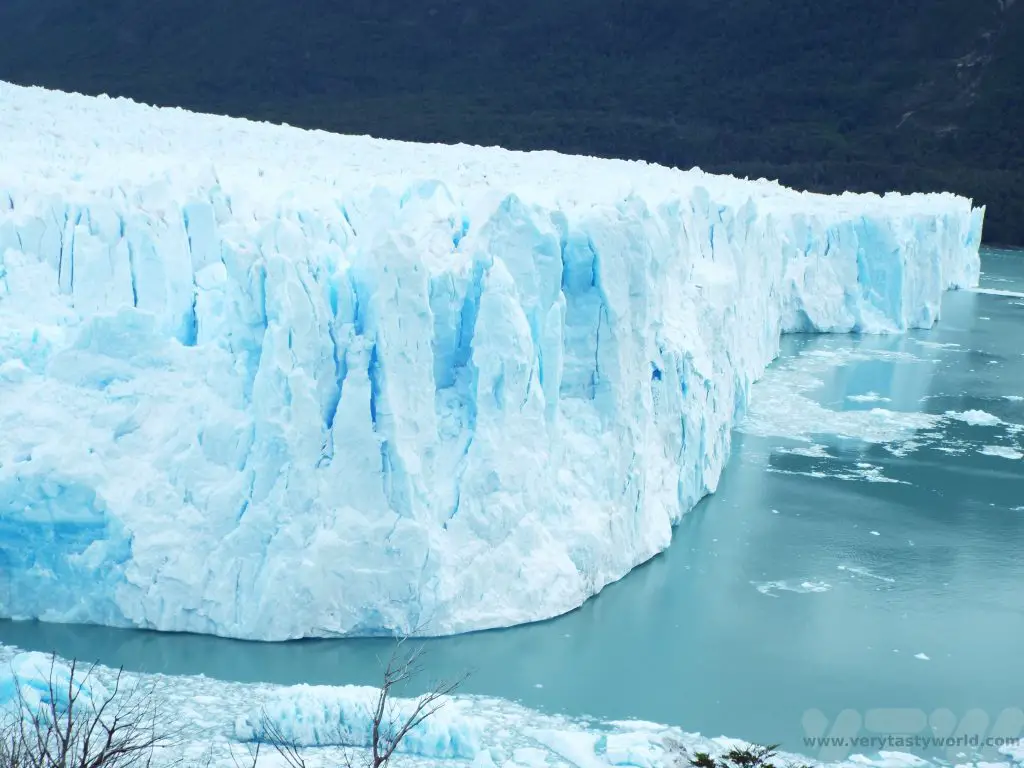
Note: You need to pay a fee to enter Los Glaciares National Park each time and this usually isn’t included in the cost of a tour. As at 2023, the cost is $10,000 AR. We paid in cash, so it’s worth making sure you have enough money with you.
Day 12 Bus to El Chalten (3.5 hours)
Depending on where your hotel is located, the bus station is a short, cheap taxi ride away from the bus terminal on C510, and from there you can catch a bus to El Chalten. It’s around a 3-3.5 hours journey but the scenery is just lovely. When you arrive, the bus stops briefly by the tourist information hut, which is located just out of town. Here you can get a hiking map and briefing about the area in English or Spanish. Then hop back onto the bus for the three-minute drive across the pretty river to the terminal. El Chalten is a very small town and many hotels/hosteria are within walking distance of the bus terminal, but plentiful taxis are available if needed.
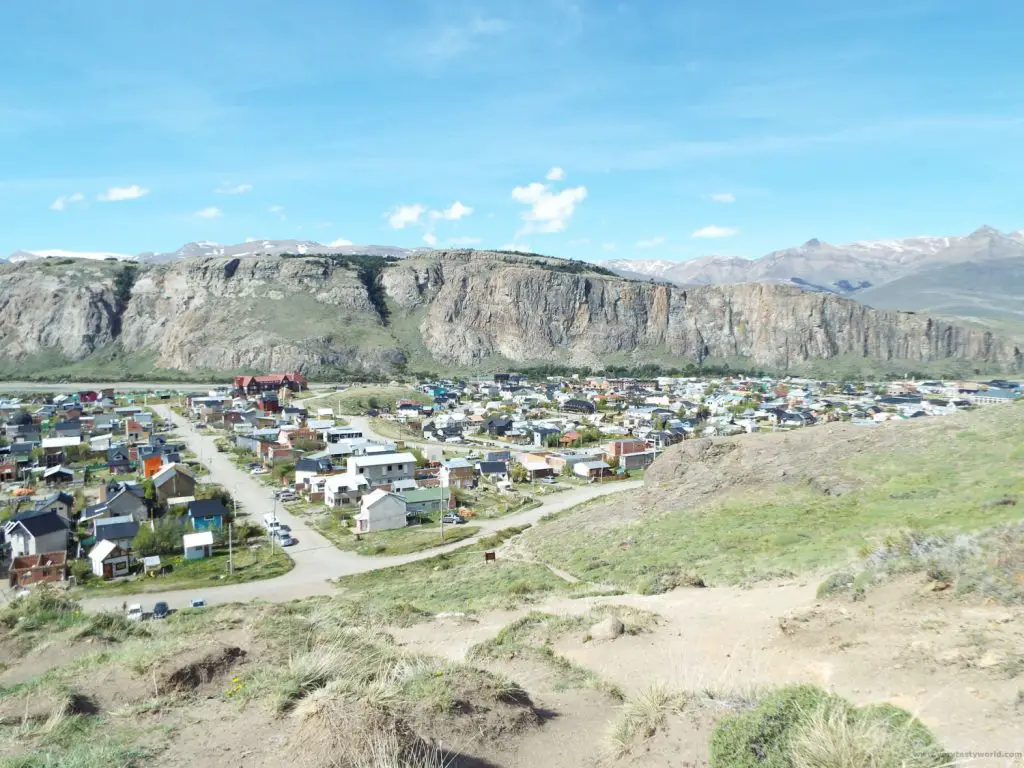
Day 13 Hiking in El Chalten
El Chalten is a hiker’s haven and a climber’s paradise. There a loads of trails in the area, ranging from easy to challenging amidst stunningly beautiful scenery. There are many serious climbers who want to attempt the granite heights of the Fitz Roy Massif, but there are some fantastic walks for casual – and significantly less ambitious – hikers. The weather can be very variable and some paths may be closed off for safety reasons if the wind is howling more than usual – and it howls a lot! But even the easier walks are guaranteed to offer great hiking in gorgeous scenery.
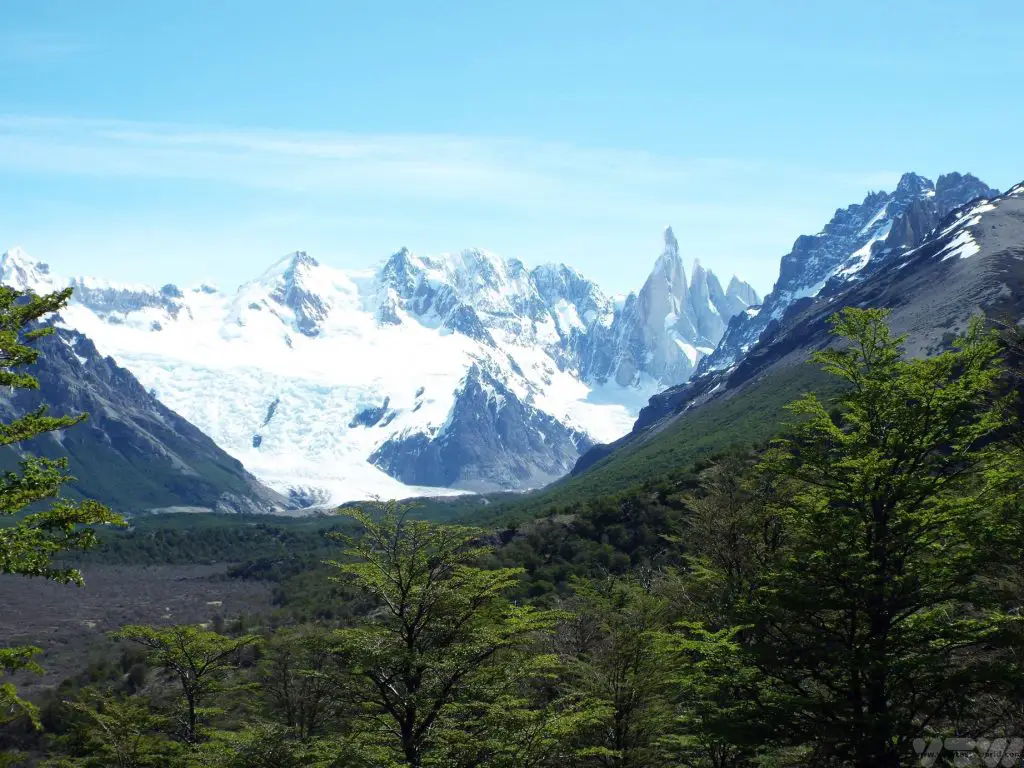
We have details of the hikes we enjoyed in El Chalten.
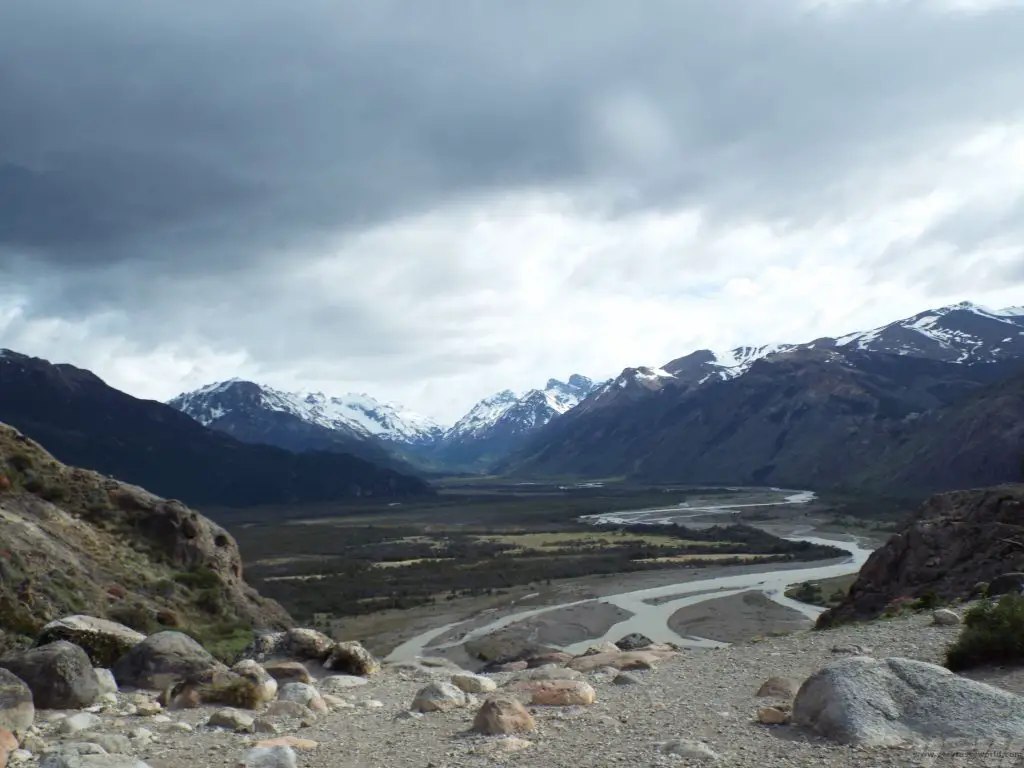
Foodie Recommendations: There are a number of restaurants in the town which offer local fare. There is also craft beer available and the quality is excellent, perfect for a post-hike drink.
Day 14 Bus to El Calafate (3.5 hours)
Depending on when you wish to leave for Calafate (and if the weather is on your side) there may be a chance to get in a few hours’ hiking in the morning. There are regular buses to take you back to El Calafate. It’s worth noting that even if you have pre-booked tickets you may be able to catch an alternative bus. There isn’t a lot to do in town if the weather is bad and you have checked out of your hotel/hosteria. We had planned to do more walking on our last day but it was really wet and very windy and not much fun for hiking. Our lovely hosteria hosts phoned through to the bus station and arranged an earlier bus for us.
Day 15 Fly to Buenos Aires
El Calafate has an international airport around 16 km from the town so is ideal for getting back north. You can get a taxi or a shuttle bus – your hotel should be able to help arrange this.
As with our inbound our flight to Santiago, we gave ourselves a day in hand to catch our international flight, just in case there were delays with our flight from El Calafate. This meant we had a day to explore Buenos Aires before catching our flight home.
There are loads of things to see in BA. We stayed in the Palermo area, which is a cool place to hang out, with plenty of bars and restaurants if you just want to chill after your trip. But there are lots of sights to see within walking distance of Palermo. (It’s a fair walk, depending on where you are staying, so if you’re feeling a bit jaded at the end of your trip, it should be easy to pick up a taxi.)
We particularly enjoyed visiting the famous Cementario de Recoleta, a remarkable cemetery which comprises a huge number of highly decorated mausoleums and tombs. Many famous people have been interred there, including Eva Peron.
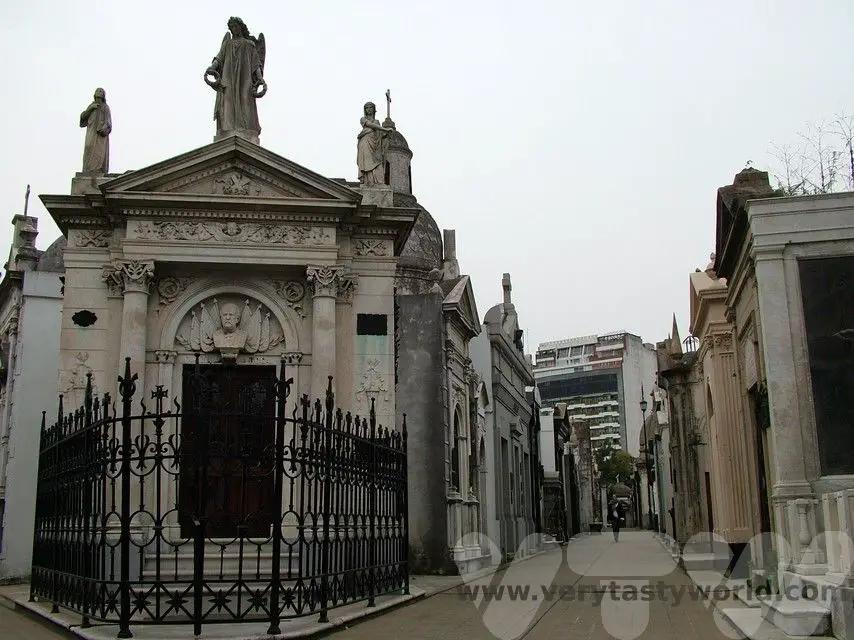
The Museo Nationales de Bellas Artes is a fantastic space for discovering local and international art. It’s free to enter and hosts a variety of permanent and temporary exhibitions. Museo de Arte Latinoamericano de Buenos Aires, known as MALBA, also has some great exhibitions.
In the adjacent park is the Floraris Generica, a huge sculpture of a flower which opens and closes with the daylight.

There are a number of gardens in the area, including a Japanese garden and botanical gardens, where you can see the yerba mate tree from which mate tea is derived.
When To Visit Patagonia
In the southern hemisphere November to March is Patagonia’s summer, where the days are longer and the temperatures warmer, and hence the most popular time to visit. The shoulder season is November. We travelled in late October (we don’t mind the cold!) and were largely lucky with the weather.
Dining and Drinking in Patagonia
If you are an omnivore, Patagonia has a huge amount of excellent food. The seafood in Chile is fantastic -with an incredibly long coastline the country has some of the best fish dishes on the planet. We particularly recommend the crab.
In Argentina the Patagonian lamb is an essential meat to try. Steaks are also available – they are good value and usually cooked very well. Guanaco often appears on menus – the flavour is akin to venison. Empanadas – pasties with a variety of fillings – are also fantastic and definitely worth taking with you on a hike or on the bus if you want a packed lunch. Vegetarians may struggle to find a decent variety of dishes but most restaurants will have vegetarian options.
In terms of drinks, Chilean and Argentinian wines are fantastic and there are even some vineyards in Patagonia, albeit much further north than the places visited in this itinerary! Beer drinkers will find a wide variety of excellent local craft beers.
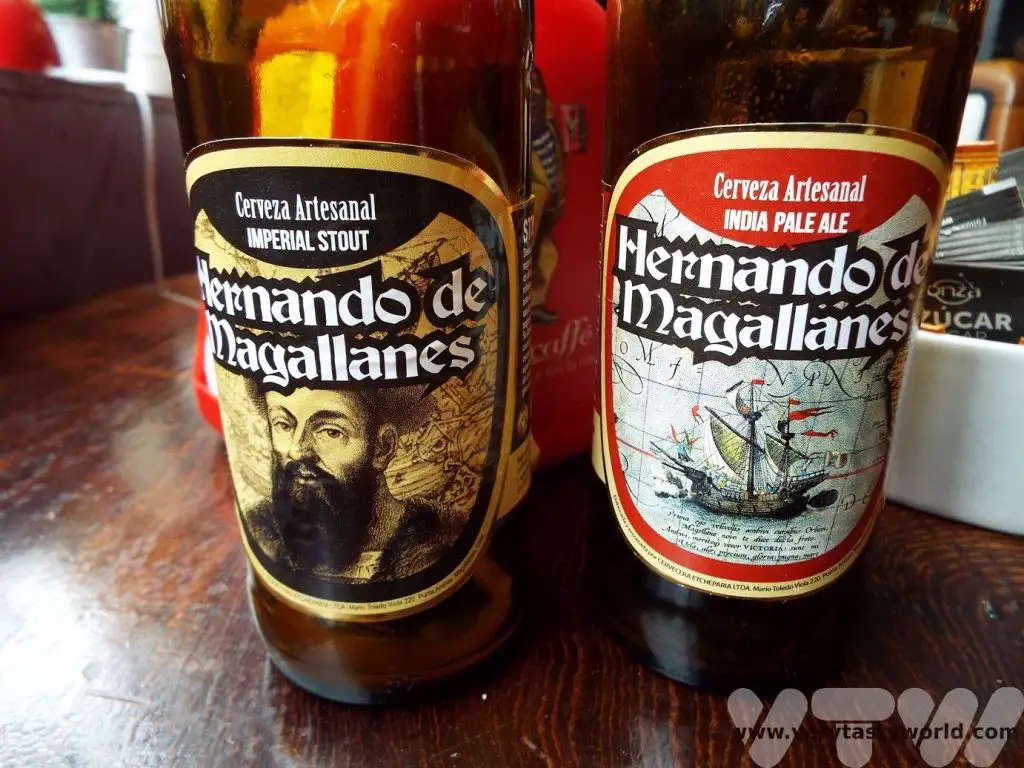
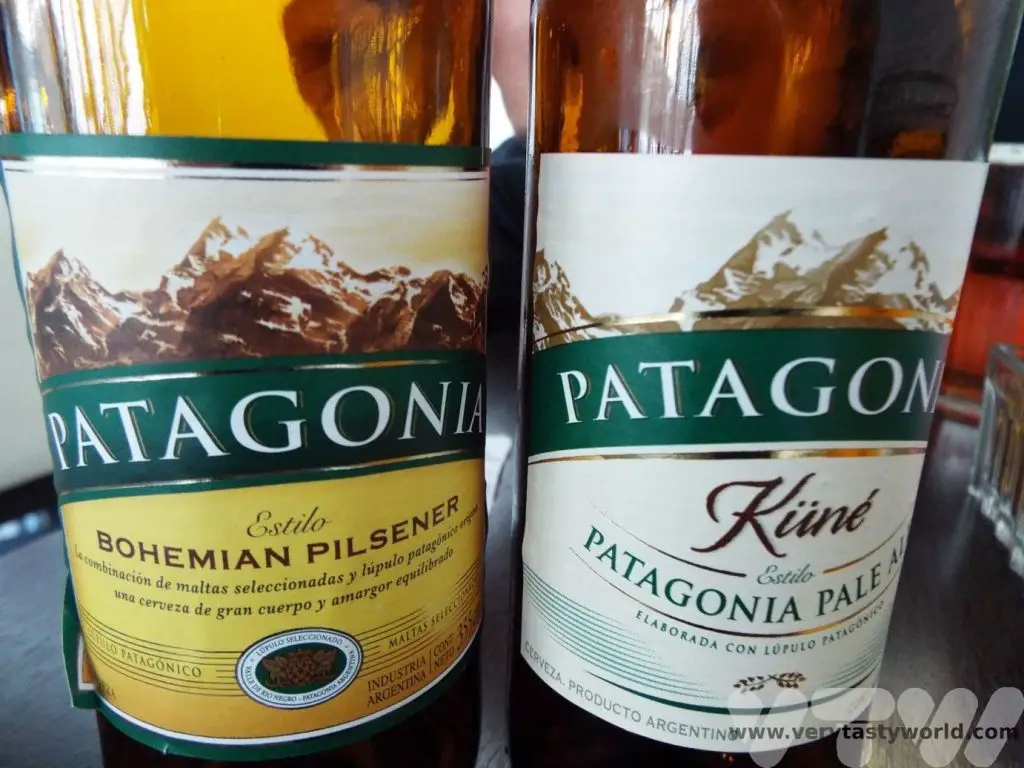
The tap water is fine to drink. In some areas, notably El Chalten, you can even refill your water bottle directly from the streams and rivers as the water is pure.
Getting Around Patagonia
We travelled on buses throughout our trip, apart from the couple of days in Torres del Paine, when we hired a car.
Buses are large and comfortable and run on a regular schedule. There are usually toilets on board.
You can get tickets at the bus station or online and often your accommodation can help. We recommend pre-booking if you can, especially if you are travelling in high season – it means you can ensure a place on the bus. When you buy a ticket you will be assigned a numbered seat. The other great advantage is that the bus driver knows the route so you can simply sit back and just enjoy the scenery. Obviously delays can sometimes happen but all the buses on our journey ran on time.
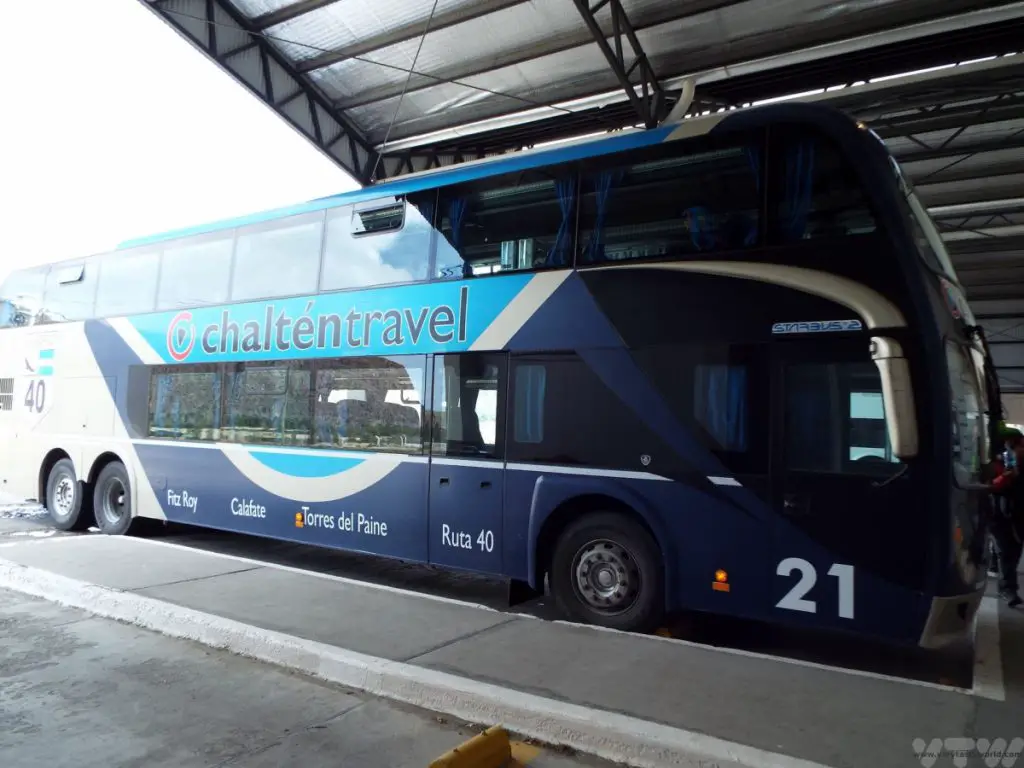
It would be difficult to do this full itinerary using a car rental because you would be driving through two countries so would need a special permit to take a car from Chile to Argentina. And it would be either very difficult or very expensive to do a one-way return of the car to an agency in another country. If you wanted to drive it would be possible to rent a car in each country and just cross the border on the bus. But, honestly, the buses are a convenient – and much cheaper – way to travel.
What To Bring to Patagonia
Hiking boots/shoes. We recommend wearing these on the plane and putting your other shoes in your checked-in luggage. It’s easier to replace lost ordinary shoes than expensive, properly worn-in walking boots.
Warm clothing. Patagonia can be very cold and, even if it isn’t cold, it can be very windy. We suggest bringing lots of layers so you can add/discard clothes as required.
If you do the Perito Moreno glacier walk you will need long-sleeved clothes, long trousers and gloves. You will wear crampons, so sturdy shoes (or your hiking boots) will be needed.
Wet weather gear – although we were generally lucky with the weather on our trip, you never know when it’s going to rain! Ponchos are a good idea if you get caught in a rainstorm.
Sun protection and sunglasses
Water bottle, particularly if you are hiking.
Patagonia really is one of the most remarkable places on the planet. It is remote but the effort to reach this stunningly beautiful wilderness is emphatically worth it.
Related Posts You May Enjoy

- Best Time To Visit Machu Picchu 2024 Update
- A 2 Week Patagonia Itinerary
- Day of the Dead in Campeche
- A Galapagos Land Based Itinerary
- RECIPE: How to Make Costa Rica’s Gallo Pinto
- A Tasty Puebla Food Tour
- Costa Rica Wildlife Sanctuary – Caño Negro
- Visit Torres del Paine National Park in Patagonia
- Atacama Desert Itinerary
Hiking In El Chaltén, Patagonia
When travelling in Argentinian Patagonia, Los Glaciares National Park is an essential place to visit. While El Calafate is the focal town, with its stunningly beautiful lake and spectacular glaciers, such as the Perito Moreno glacier, nearby, the small town of El Chaltén is also well worth a visit. The main activity in the area is walking and enjoying the great outdoors, so whether you’re a manic mountaineer, a high-spirited hiker, a rapturous rambler or simply savour a serious stroll, El Chaltén has gorgeous scenery and walks available for all abilities. Here’s a guide to some gentle hiking in El Chaltén.
Getting To El Chaltén
El Chaltén is located around 220km north of El Calafate and it’s a three to four hour bus ride from there. Buses run several times a day from the bus station. It’s worth booking a ticket in advance, especially during busy seasons. The buses are large and comfortable. The journey is exceptionally pretty as it takes you through beautifully picturesque scenery.
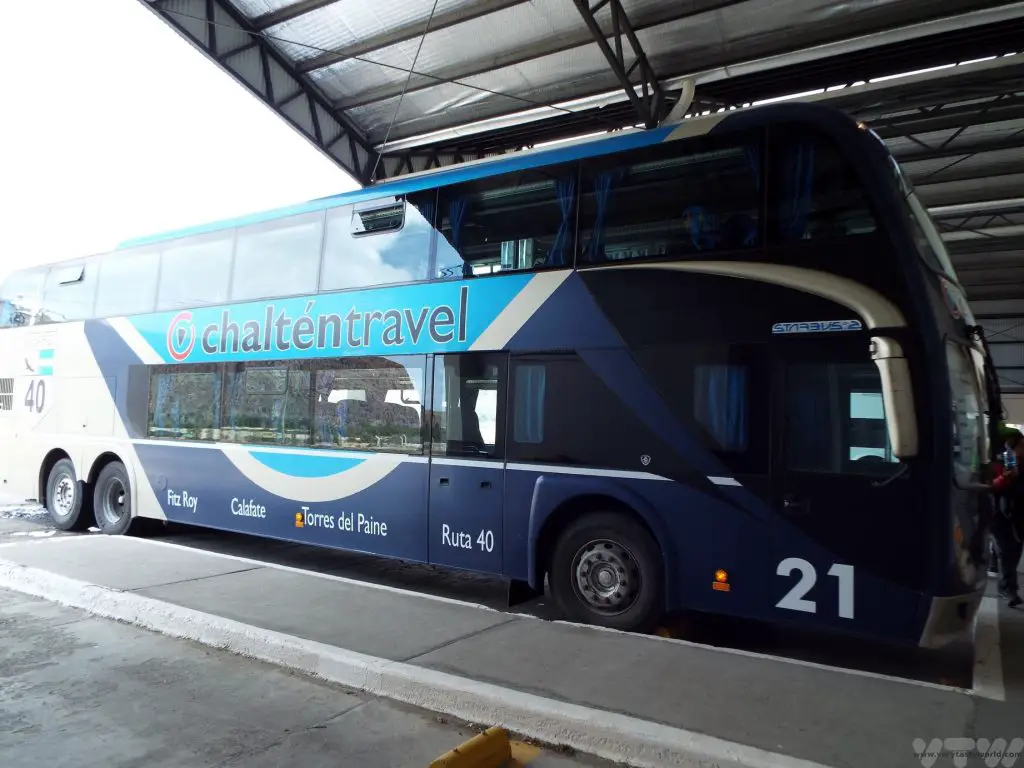
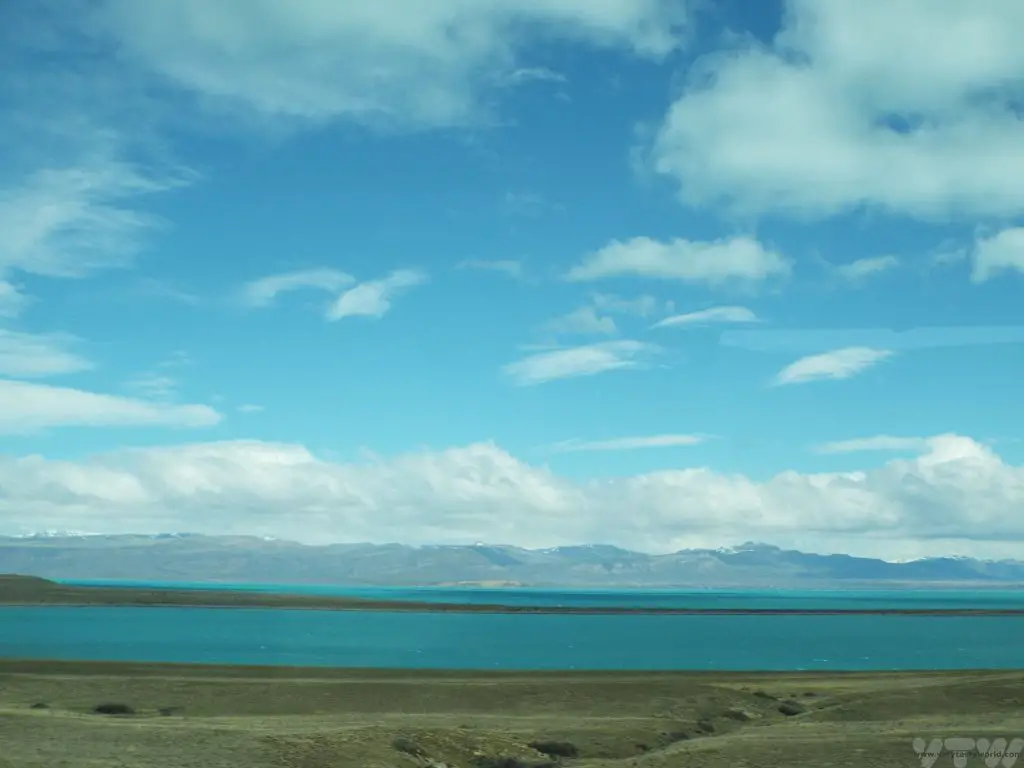
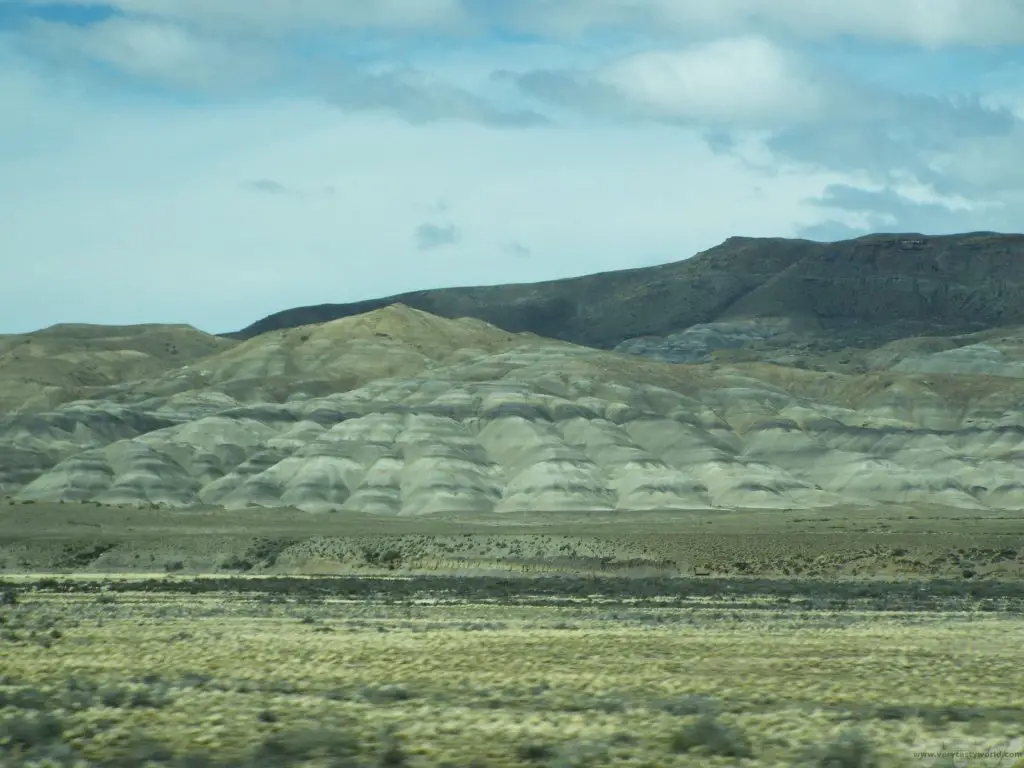
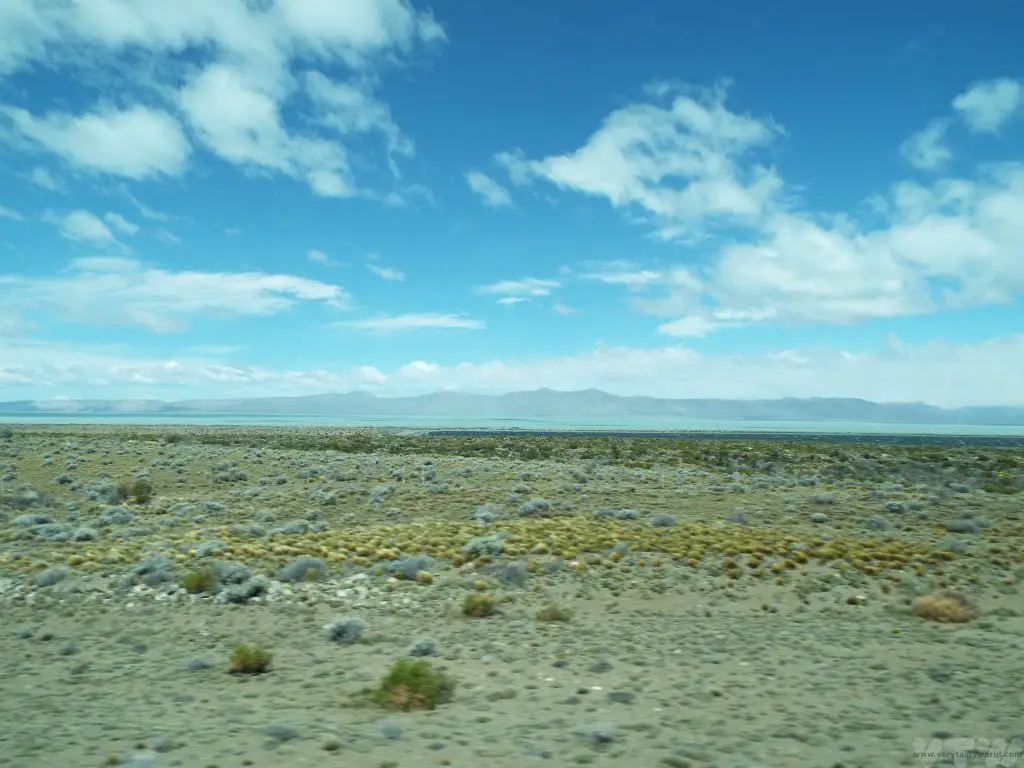
When you arrive, the bus will actually stop at the tourist centre just outside the town so that you can get an orientation talk (available in English and Spanish and there’s no charge for this) and pick up a hiking map. Then it’s back onto the bus for about 2 minutes to cross the Fitz Roy river before arriving at the bus station where you disembark.
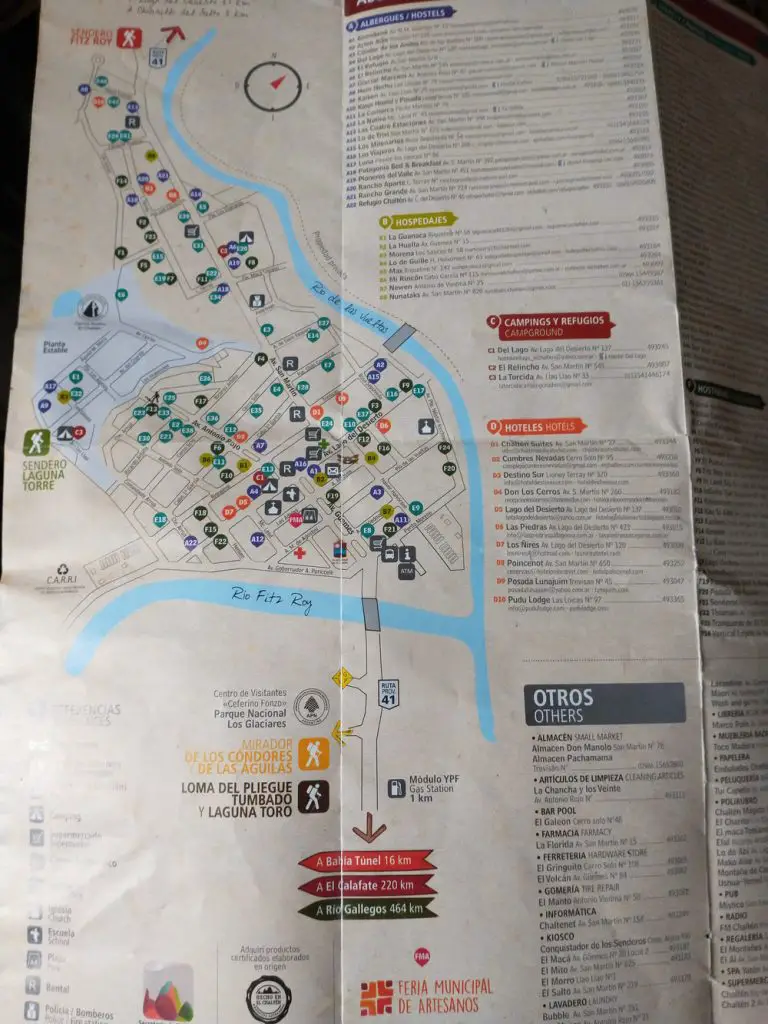
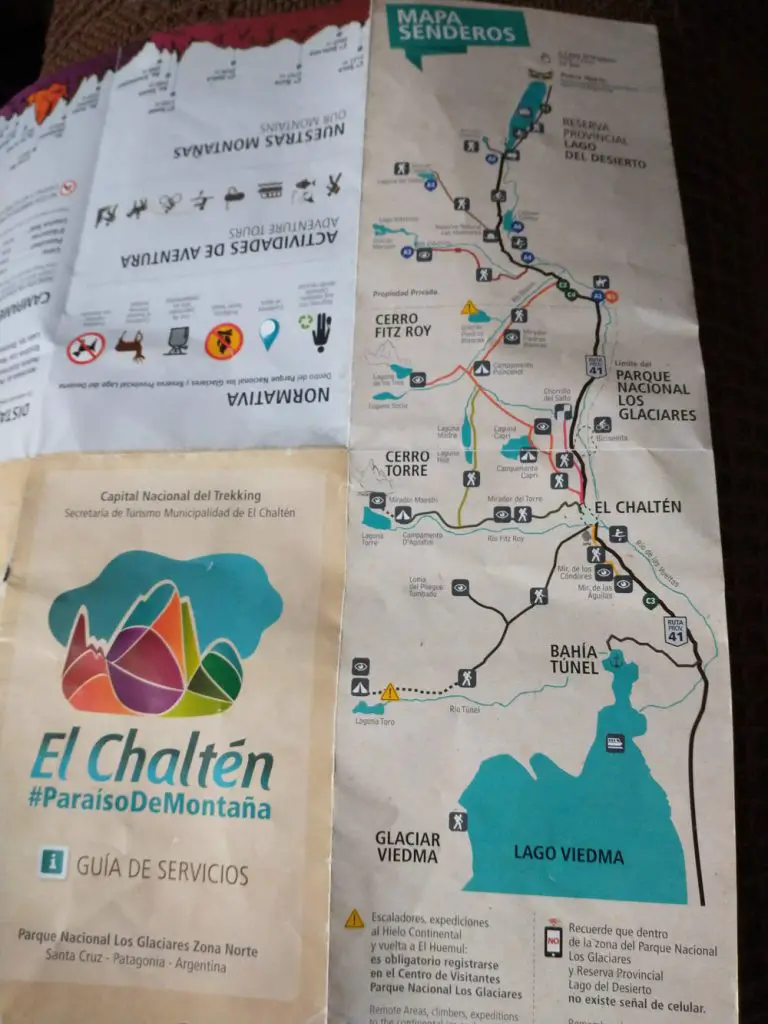
The town itself is small and very easy to get around on foot. There are plenty of accommodation options as well as a variety of restaurants and cafés to suit all budgets and, just up the road from the bus station, a craft beer emporium that offers a range of interesting beer – perfect for a post-hike tipple. There are also some outdoor equipment shops just in case you spontaneously decide to go climbing and have forgotten to bring your gear.
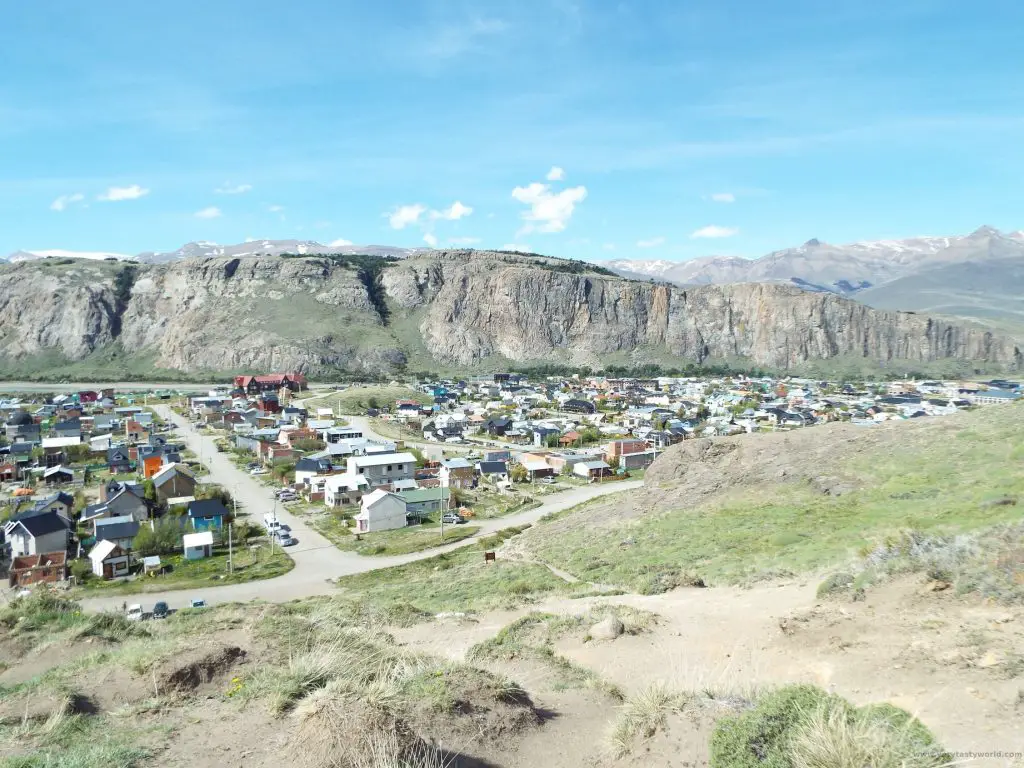
We stayed at the charming Hosteria Lago Viedma which is run by two lovely ladies. The home-cooked breakfast was the best we had in Argentina: freshly baked bread, eggs cooked to order and lovely home-made biscuits/cakes. They had loads of hiking advice and also kindly rearranged our bus tickets for us when it was clear that the weather wasn’t going to be on our side on the final day and we had a long wait before our bus was due to leave.
Hiking in El Chaltén – A Couple of Hikes
Hiking in El Chaltén ranges from short and easy walks to some that are more challenging, and the map gives an indication of distance and difficulty. Not only do the B&Bs offer good hiking advice, they can often offer a packed lunch if you are planning to go out hiking all day. Empanadas (like pasties) are perfect – easy to carry, they will happily hold their shape inside your backpack and they taste delicious.
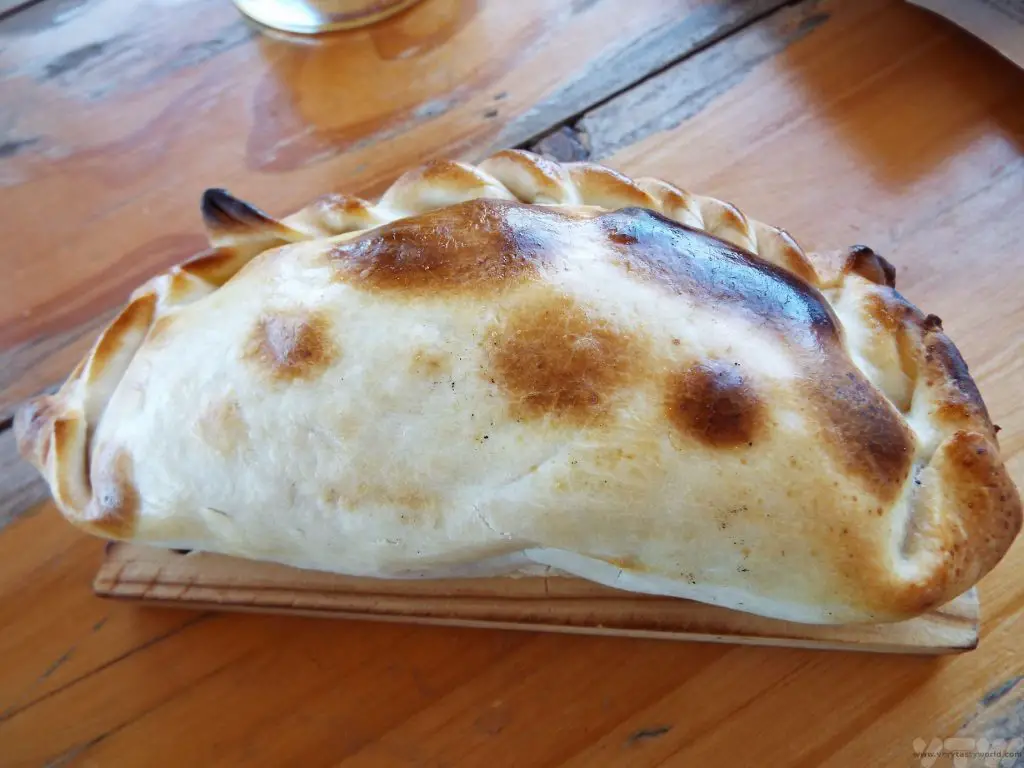
Beware the weather. It can be very changeable, indeed part of some hikes may be closed on particularly windy days. We recommend wearing layers of clothes as the wind can be really chilly but you warm up quickly if you’re on an energetic hike, so may want to discard layers as you go.
The information booklet at the visitor’s centre gives lots of information about all the hikes, including distance, time to reach the end and difficulty level.
You need to be a really experienced climber to climb the iconic Mount Fitz Roy but don’t panic – there are loads of amazing hikes, with varying levels of difficulty, even for the casual walker. There are lakes, waterfalls, spectacular views of mountain peaks and lots of other hikers to chat with along the way. The walks have signposts for the hike itself as well as viewing points and the trails are well maintained.
Laguna Torre hike is an easy-moderate hike where you can get fantastic views of the area, including a view of Mount Fitz Roy.
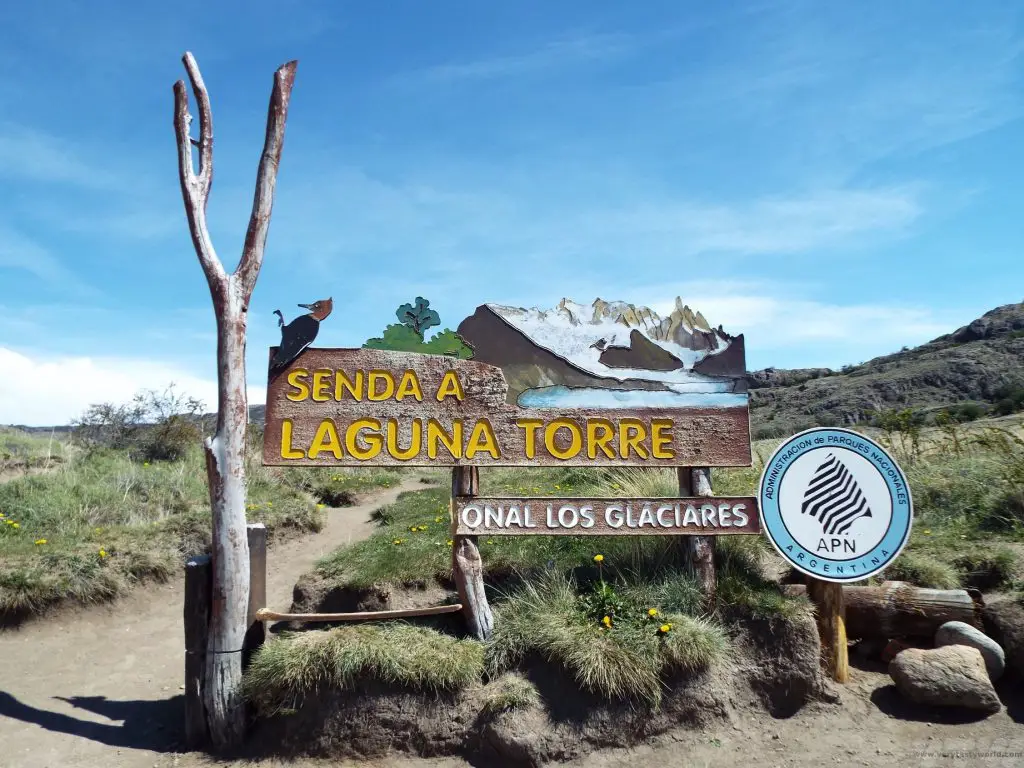

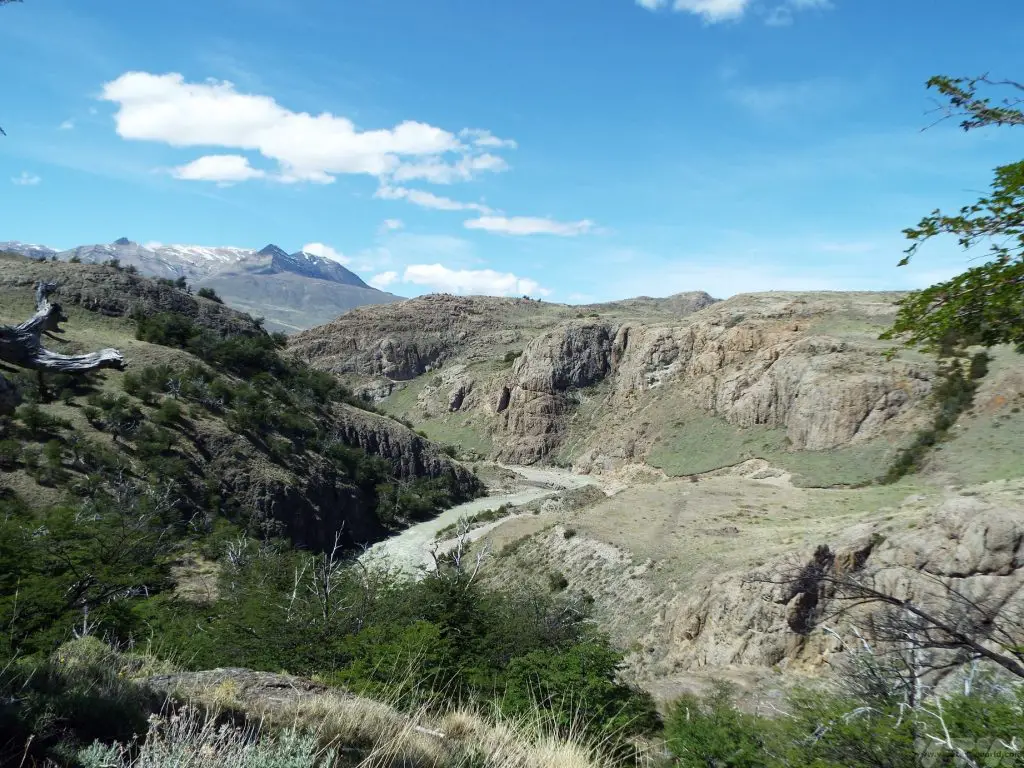
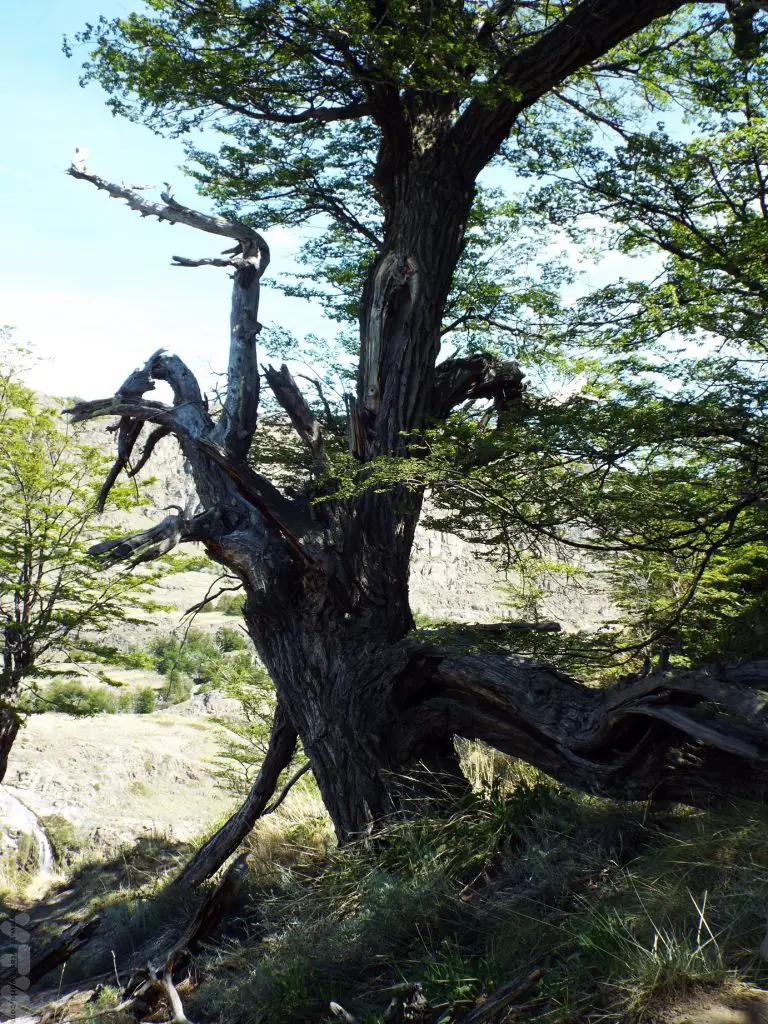
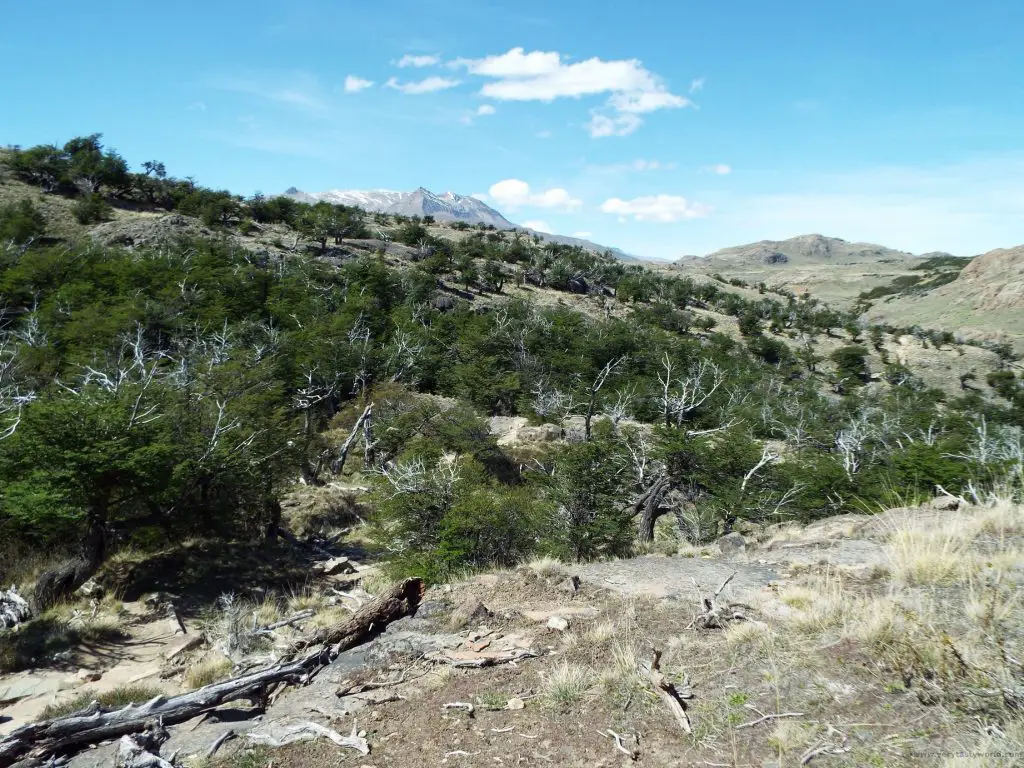
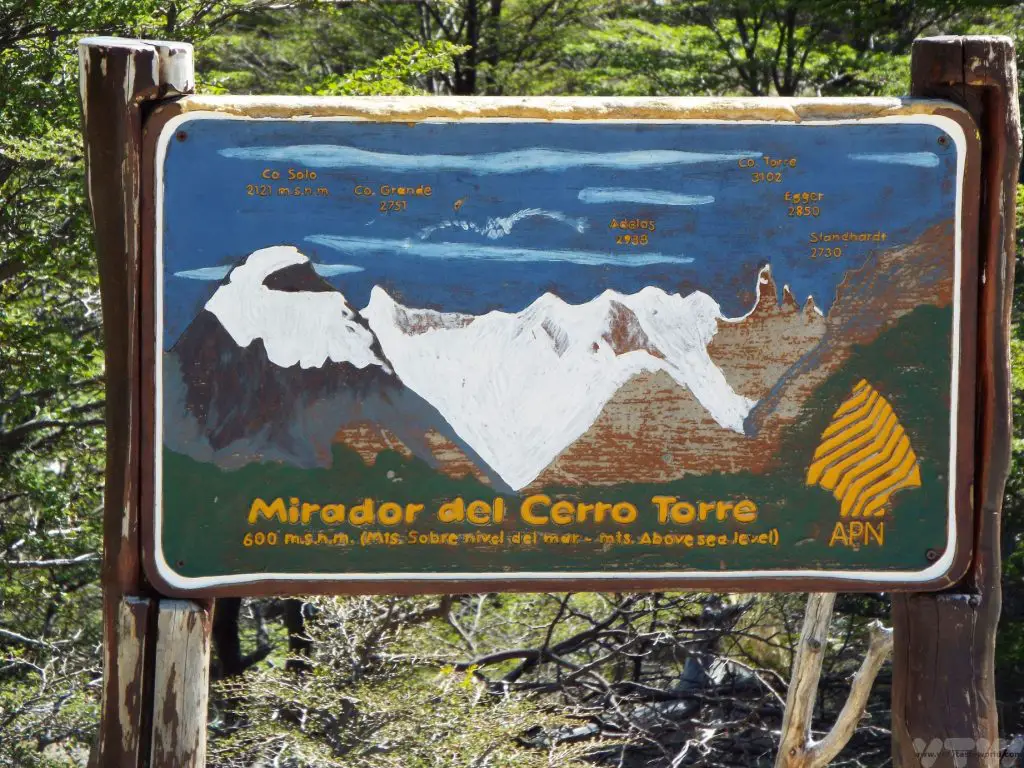
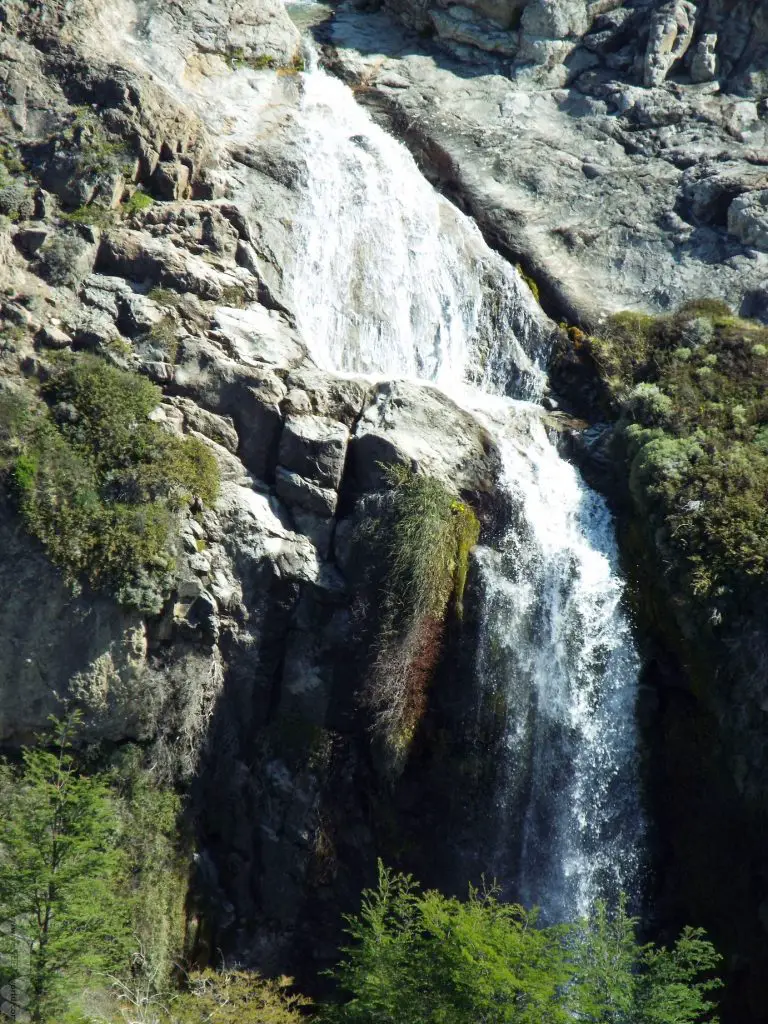
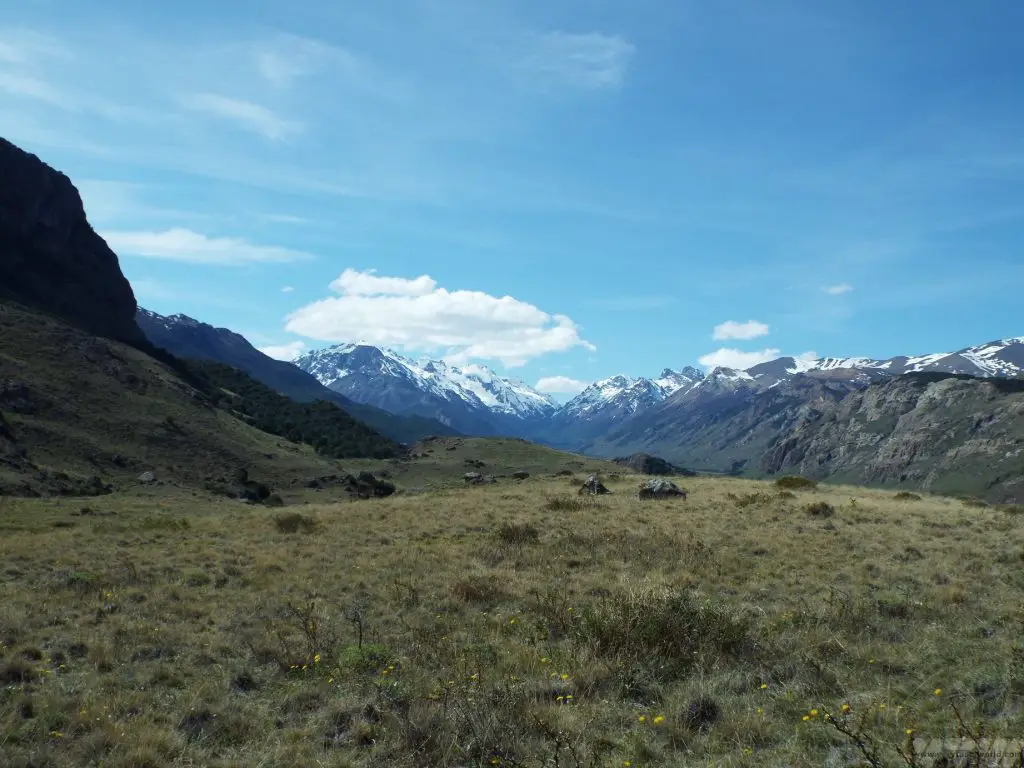
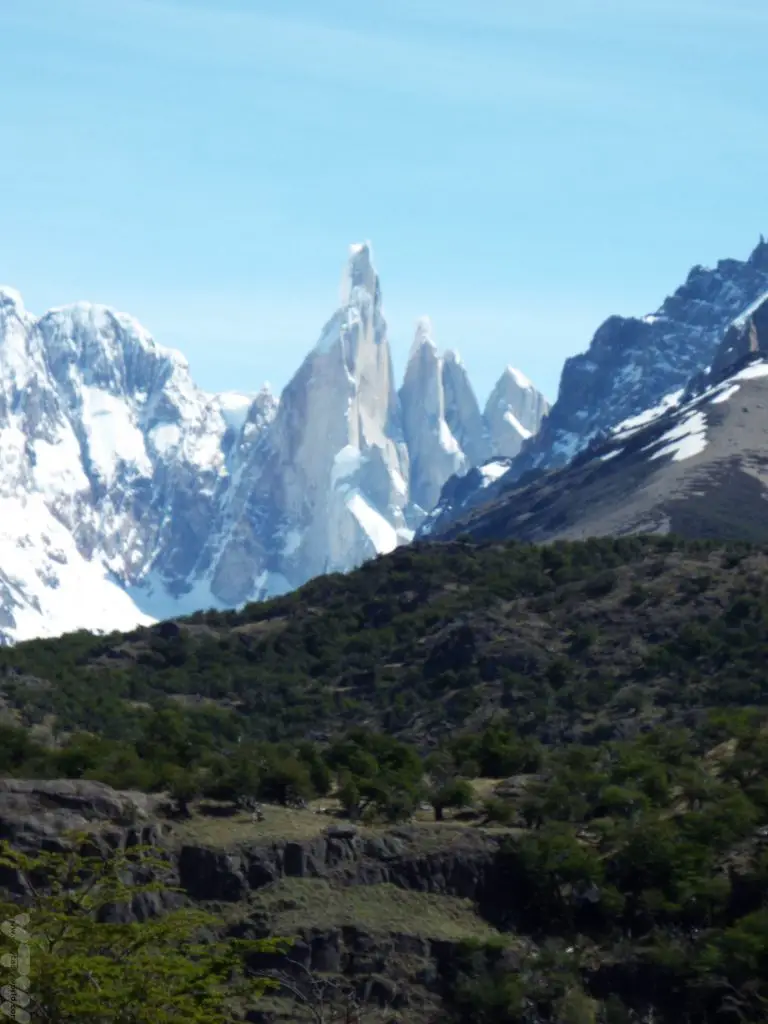

Sendero del Fitz Roy hike is a little more challenging. The starting point is at the north of the town; just walk along the main road until you see the sign.
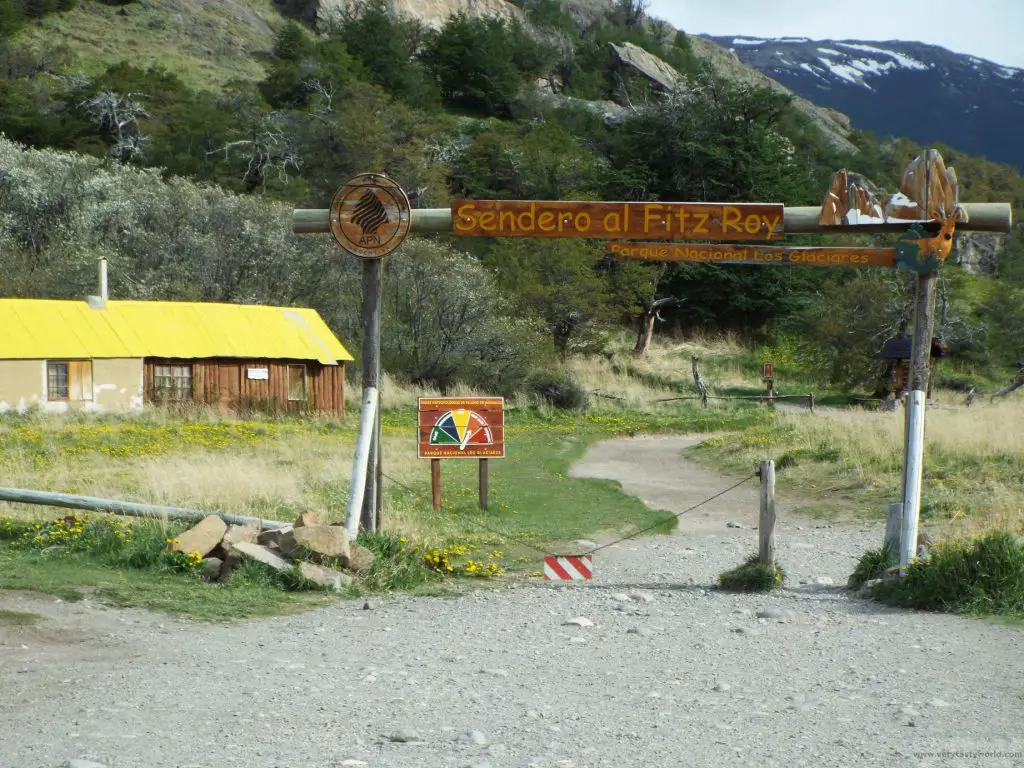
The first part of the hike climbs uphill then is relatively flat for several kilometres. It has lovely views of the mountains, lakes and glaciers all the way along. The very last section has a steep ascent and is not advisable if the weather, particularly the wind, is unfavourable. It’s around 10km each way and there are some alternative routes for the trip back so that you can see additional landscapes.
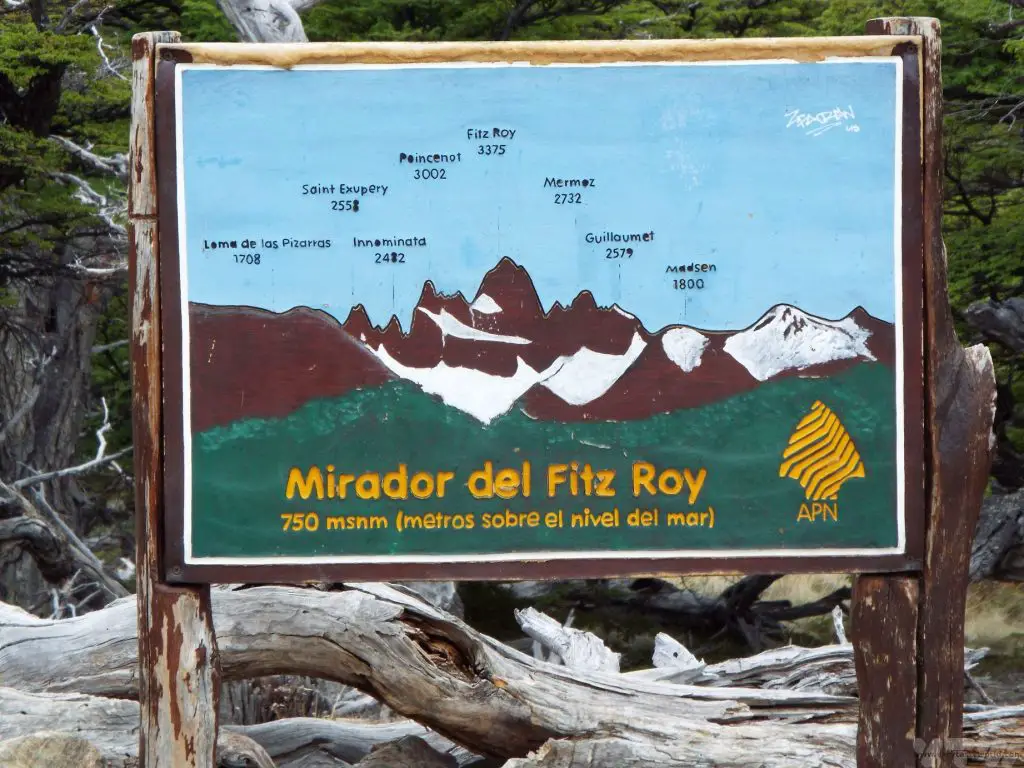
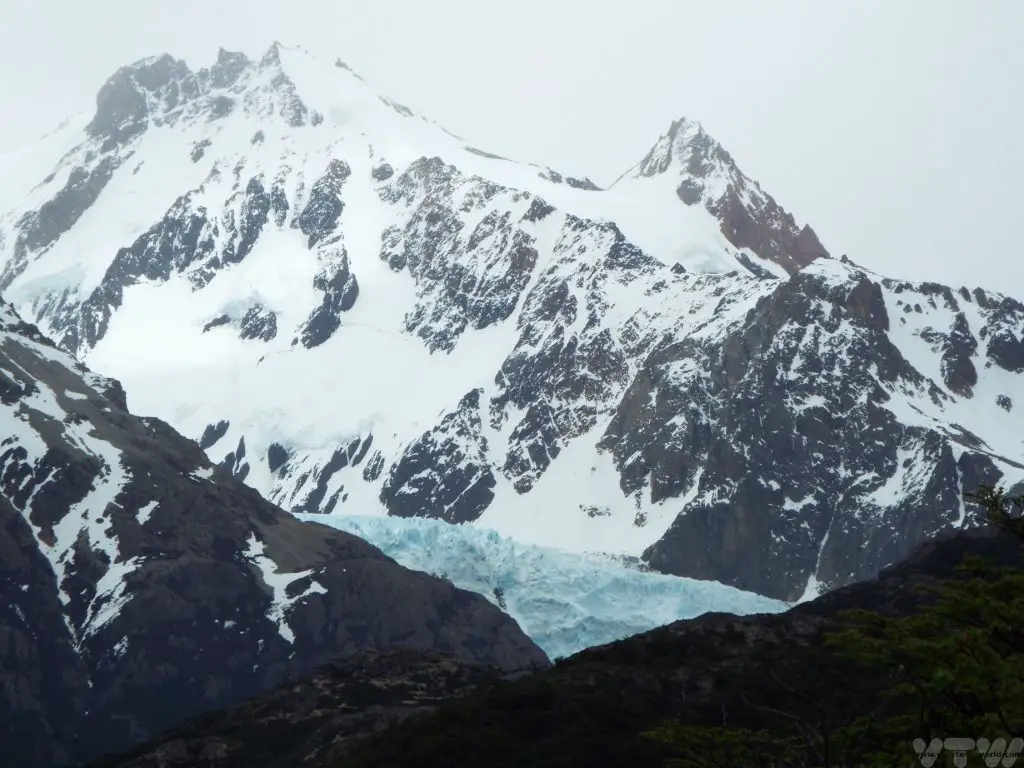
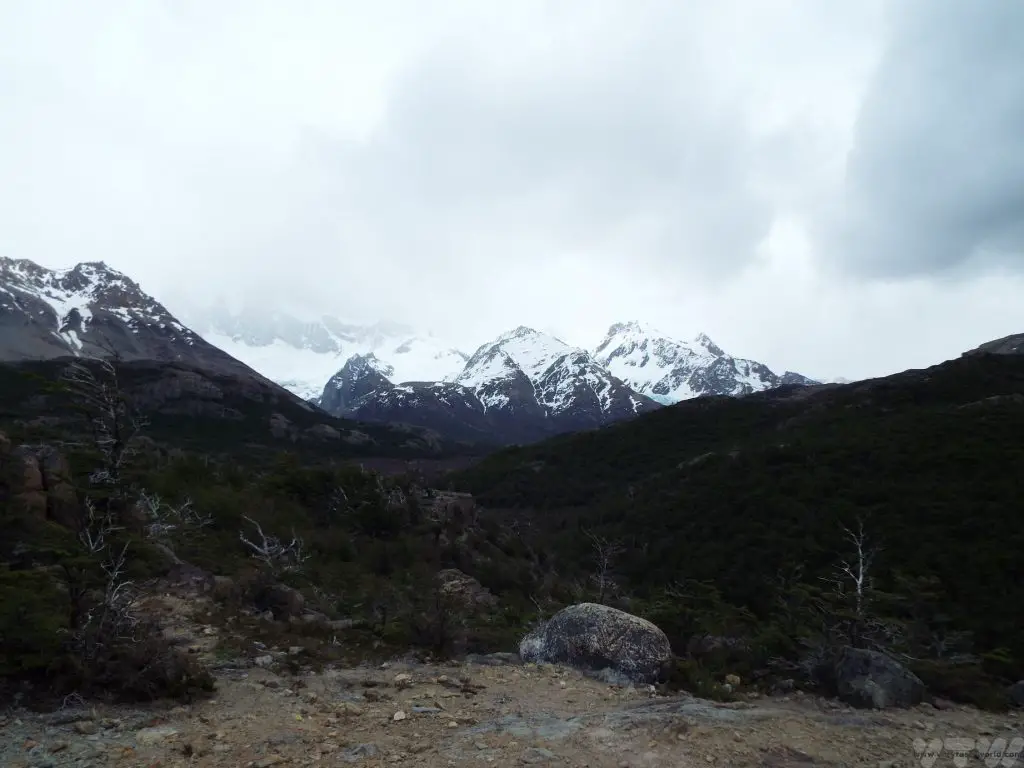
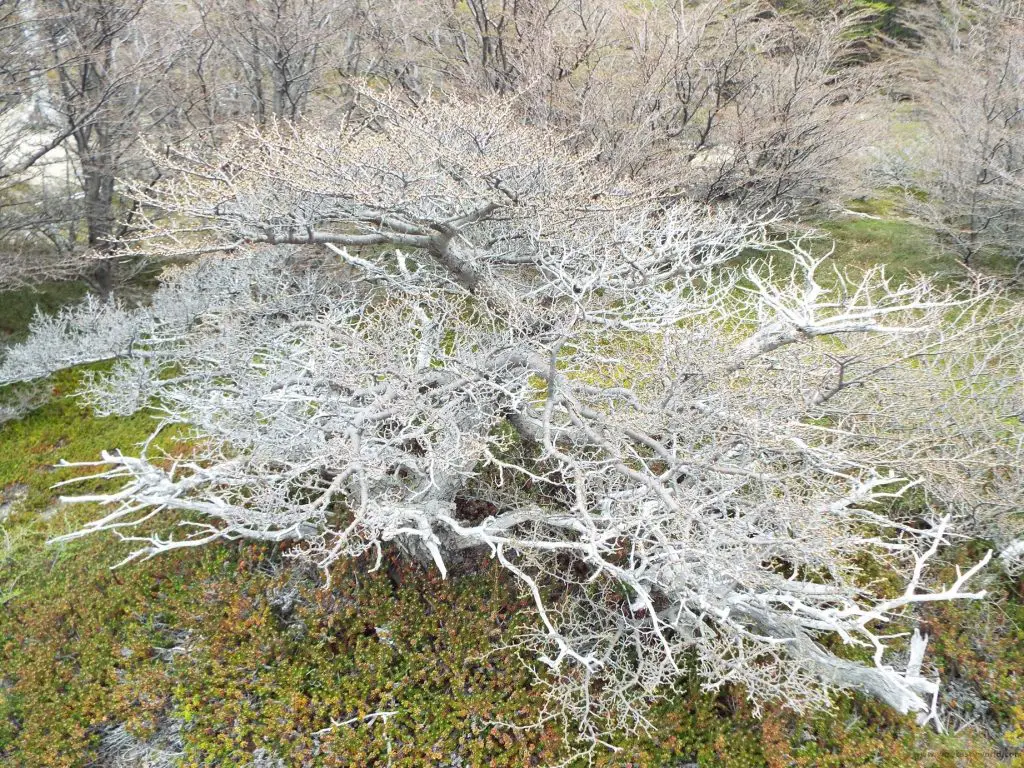
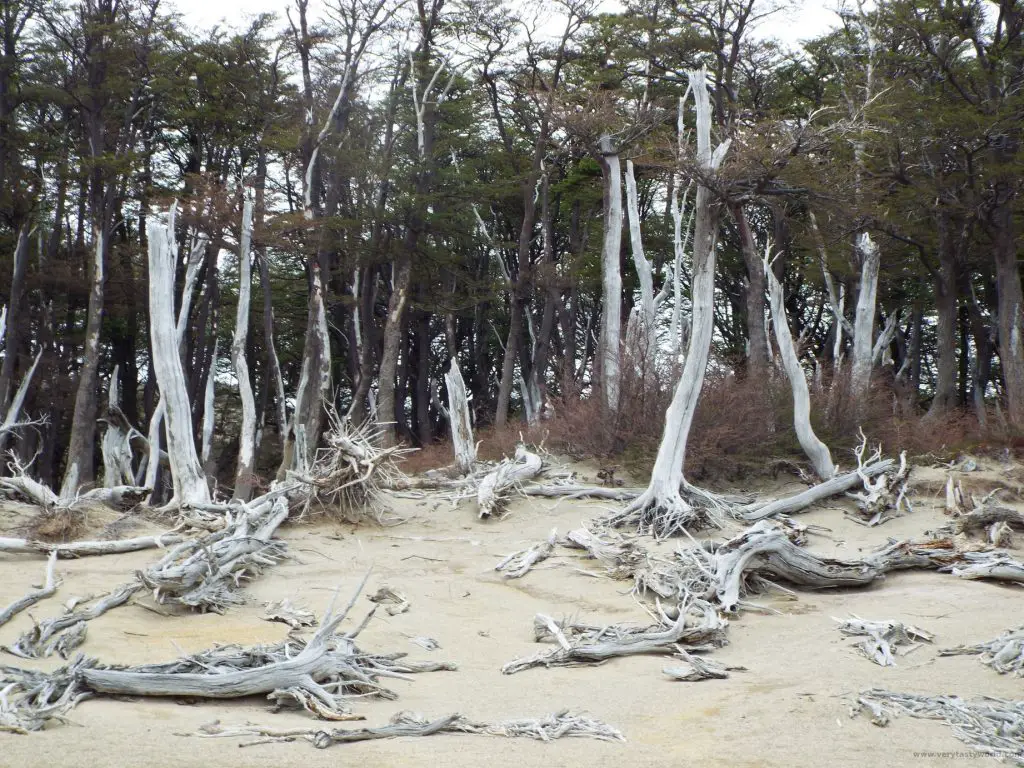
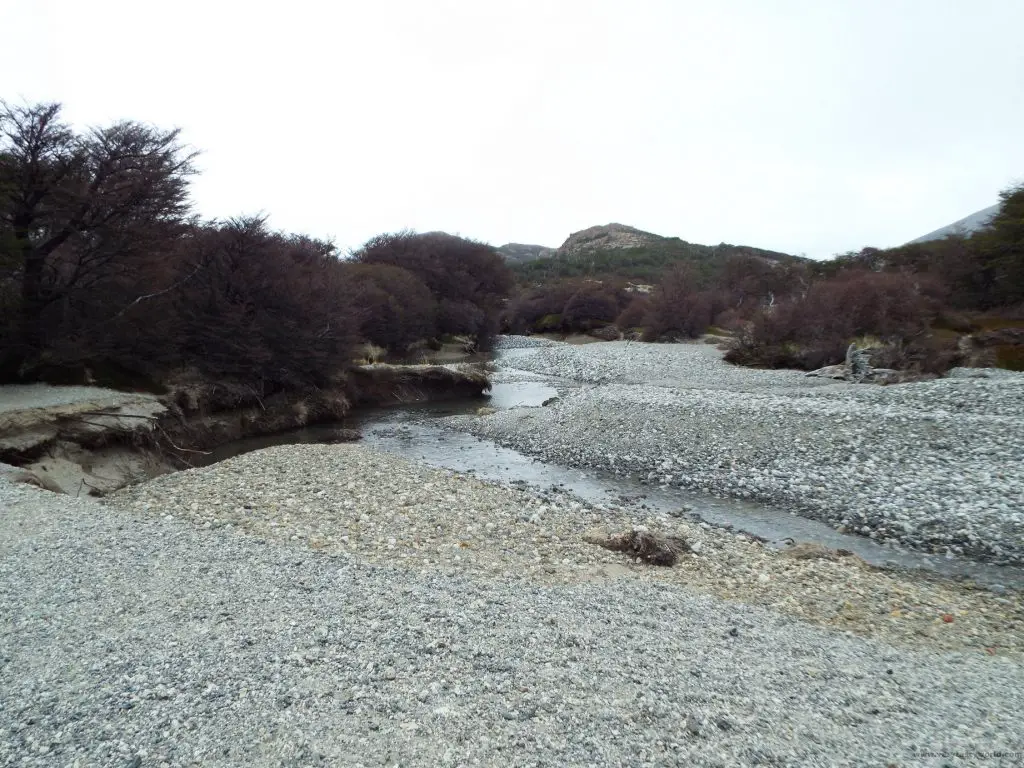
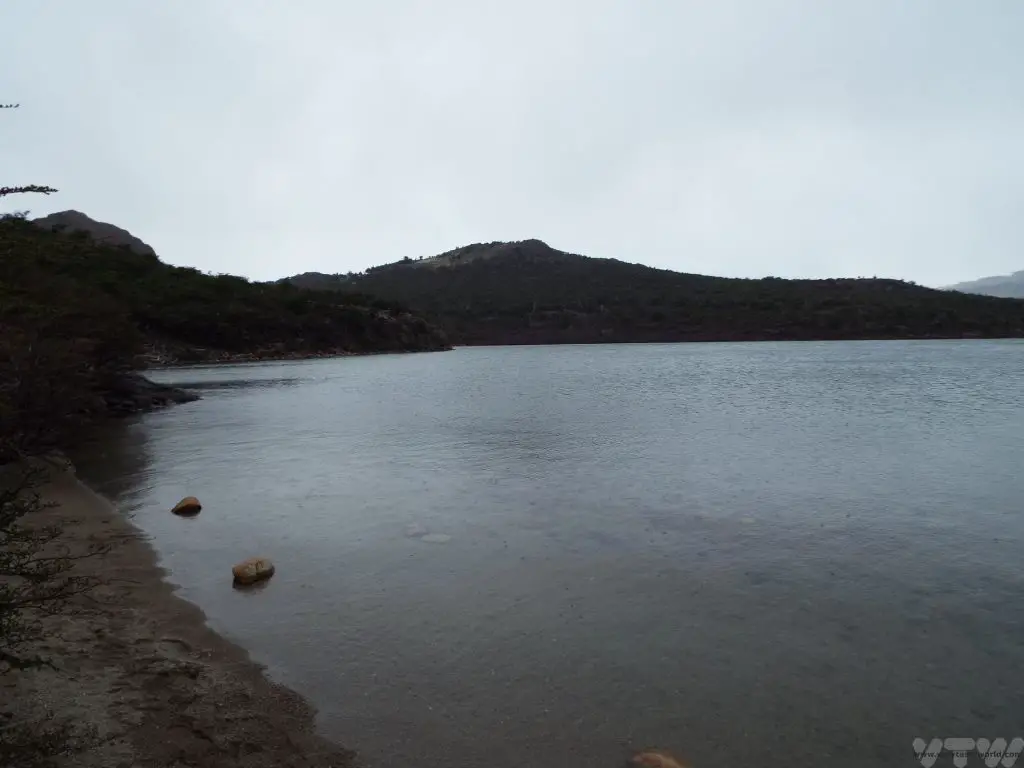
One of the loveliest things about walking in the area is that the water is absolutely pure. If you feel thirsty you can simply fill your water bottle directly from any of the streams and rivers that flow in abundance through the landscape. Cold, fresh, delicious water straight from the glacier/ground is a real treat.

There is also plenty of wildlife to see – condors circling the sky or a common snipe.
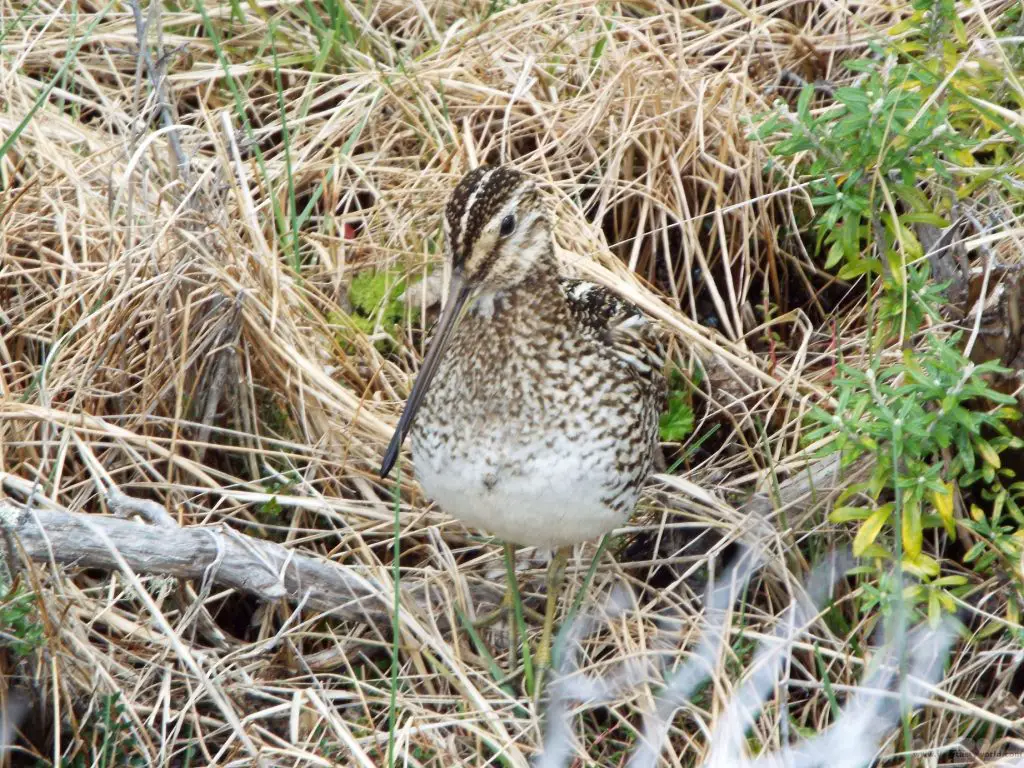
After a 20km hike, food and beer is always welcome.
Eating and Drinking in El Chalten
There isn’t a huge amount to do in town after hiking in El Chaltén but there are a number of bars and restaurants offering decent food and there are a couple of places to have a pint – or three – of craft beer.
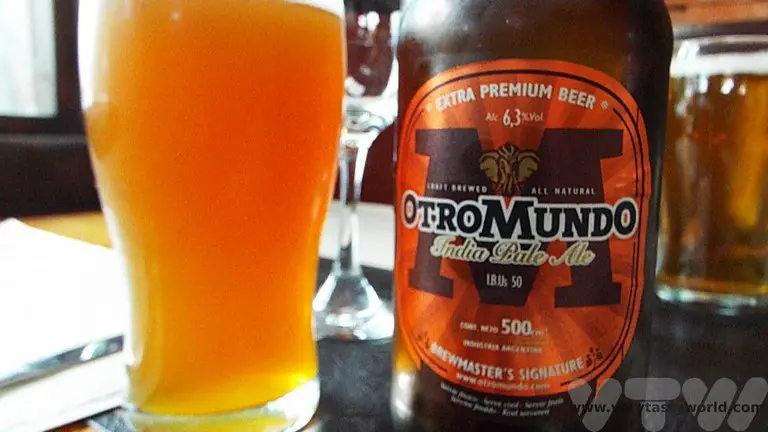
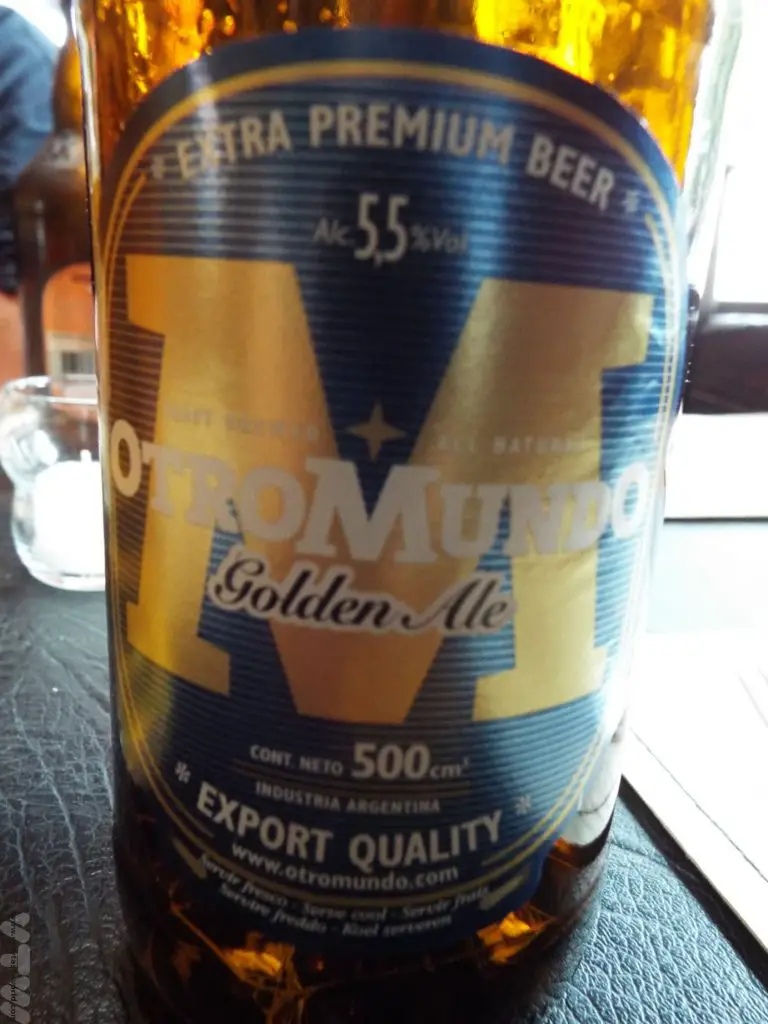
We enjoyed traditional Patagonian fare at El Muro, located on Avenida San Martin. It’s quite difficult to be vegetarian in Argentina as meat forms a large part of the diet. Indeed, we ate so much meat during our time there, we started craving salads. It’s also worth noting that many restaurants provide bread with your meal free of charge and we found that the food was so filling we just didn’t need to order any additional carbs. Patagonia is rightly famous for its lamb. Slow cooked over an open fire, it just melts in the mouth.
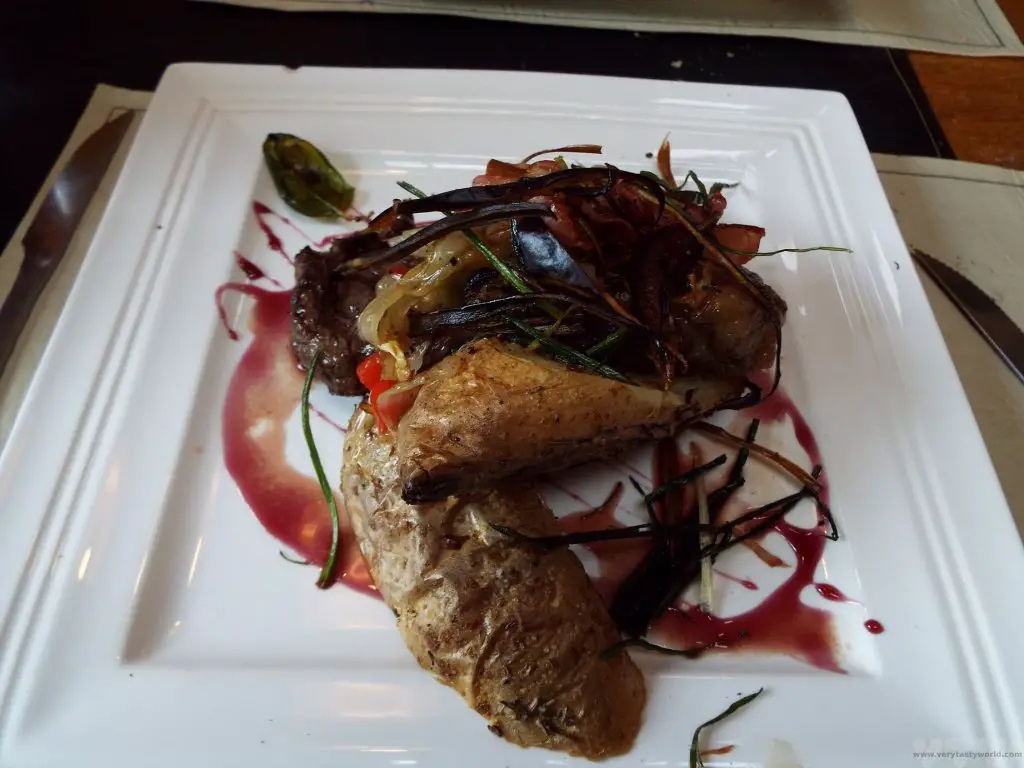
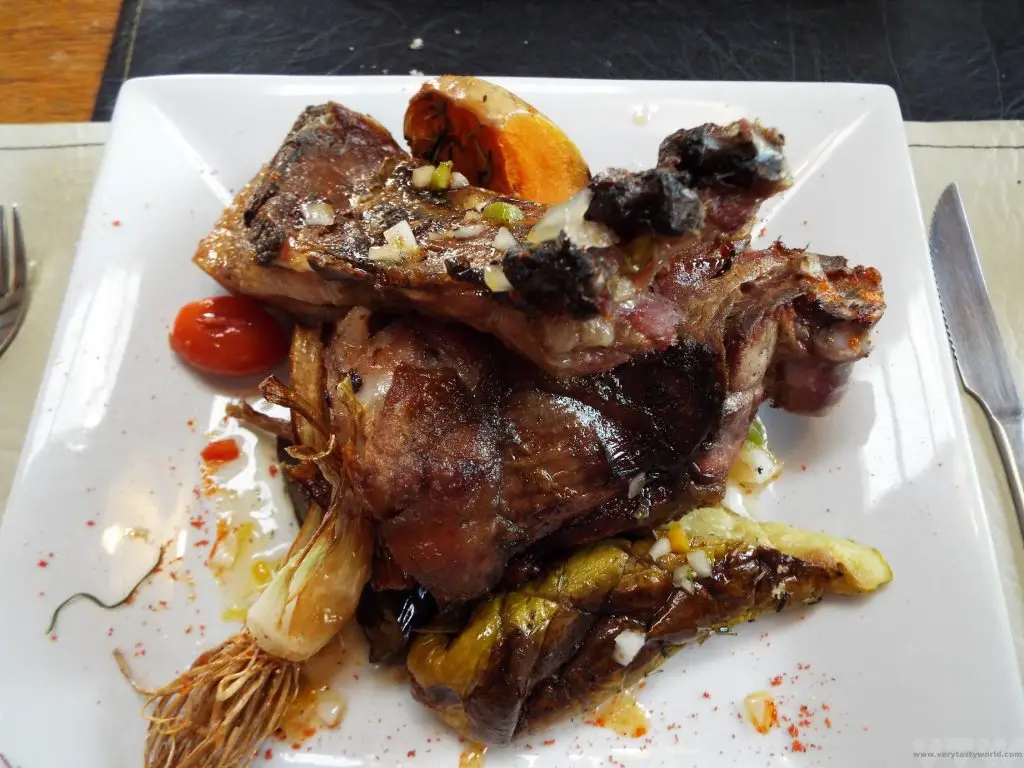
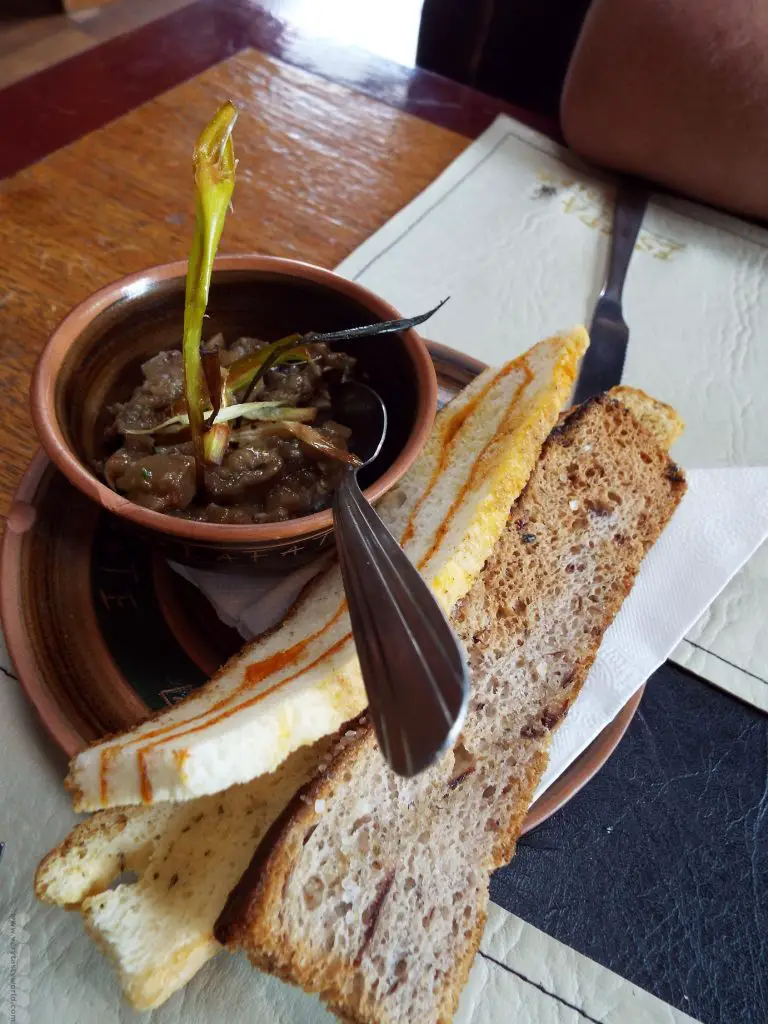
Essential Equipment for Hiking in El Chaltén
Where the serious climber will already have a special kit, there are a few items that, as enthusiastic casual walkers, we find to be indispensable. Walking shoes/hiking boots are an essential when walking in the area. We tend to wear our walking shoes on the flight so that we don’t have to pack them into our luggage, taking up valuable space.
The weather can be extremely changeable in El Chaltén. Make sure to carry waterproofs when walking. Ponchos are really useful because you can chuck them on quickly and they provide good coverage. They can also easily fit over your backpack, which helps prevent that getting wet, and will squish to a small size to minimise packing. You can also use them as a grond sheet or to shelter from the sun, so they are really versatile.
We always try to avoid single-use plastics in order to be as environmentally-friendly as we can, but this can sometimes be difficult when travelling, especially if the water quality in the area you are visiting isn’t suitable to drink and we need to buy bottled water. Fortunately the tap water in Patagonia is totally safe to drink, so we took collapsible water bottles and filled them at our hosteria each day before setting out. Then we topped up the water from any of the streams that we walked by.
We also recommend those all-important layers for hiking. You can easily add or discard layers depending on how energetic you are feeling and how windy the weather is.
If you are traveling in the area and enjoy walking it is definitely worth considering spending a couple of days hiking in El Chaltén, Patagonia – the landscapes are wonderful and there are walks suitable for all abilities.
Related Posts You May Enjoy

- Best Time To Visit Machu Picchu 2024 Update
- A 2 Week Patagonia Itinerary
- Day of the Dead in Campeche
- A Galapagos Land Based Itinerary
- RECIPE: How to Make Costa Rica’s Gallo Pinto
- A Tasty Puebla Food Tour
- Costa Rica Wildlife Sanctuary – Caño Negro
- Visit Torres del Paine National Park in Patagonia
- Atacama Desert Itinerary
Argentina Asado – High Steaks
Central Argentina may not be at the very top on an itinerary when visiting the country, but it does offer some interesting places to visit. The cities are easy to fly to direct from Buenos Aires and, for lower budget travellers, the bus network is very good. Overnight buses, in particular, have a variety of services available, including a double decker first class option that offers a reclining bed, TV and food. It’s about a 5 hour journey from BA to Córdoba which is often used as a transit city when travelling from the coast to the mountains.
We were based in Córdoba, the second largest city in Argentina by population. It’s a pleasant city and it’s possible to undertake a number of day trips to interesting places from there – all an easy bus journey within an hour or two of the centre.
Alta Gracia is a small and pretty town in the Sierras Chicas. A former Jesuit residence has now been converted to the Museo Nacional Estancia Jesuitica Alta Gracia museum which has an interesting history of Jesuits in the area.
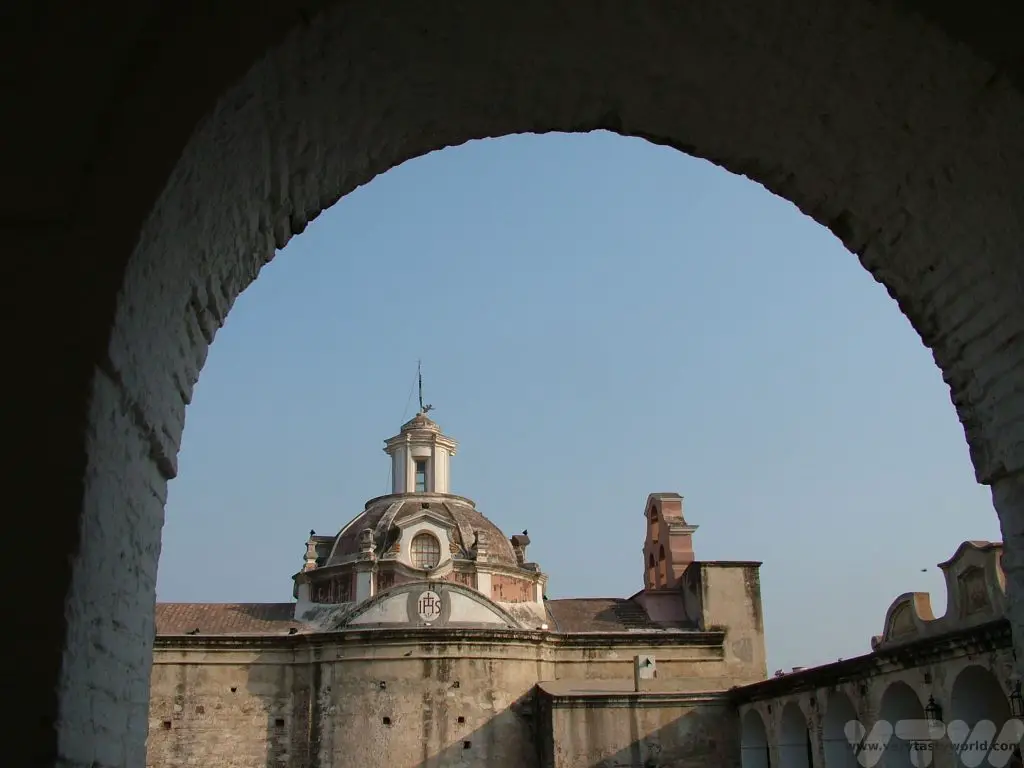
The Jesuits built El Tajamar, a lake which forms a focal point for the town. It’s worth hanging out by the clocktower at one end of the lake; it not only offers tourist information but is also a focal point for entertainment in the area – music and dance shows are regular events.
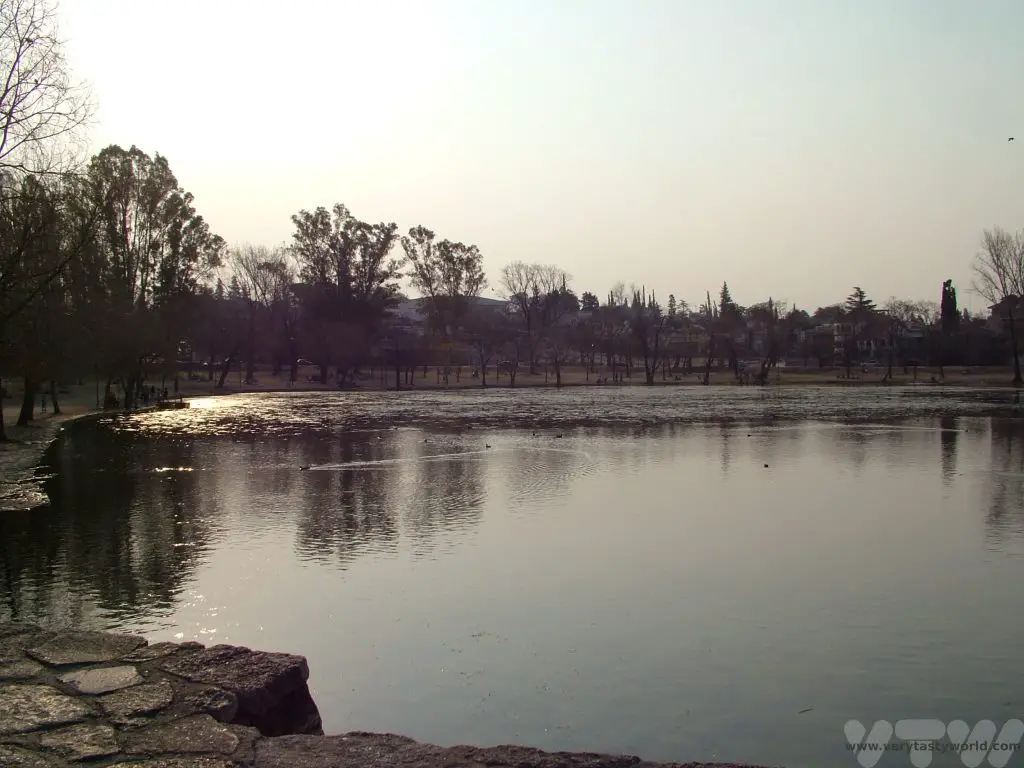

Che Guevara spent twelve years of his childhood in Alta Gracia until he moved to Buenos Aires in 1944 to study medicine and thereafter become one of the world’s most famous revolutionaries. His story is told in the fabulous film, The Motorcycle Diaries based on his book of the same name. The house he lived in has been converted into an interesting museum.
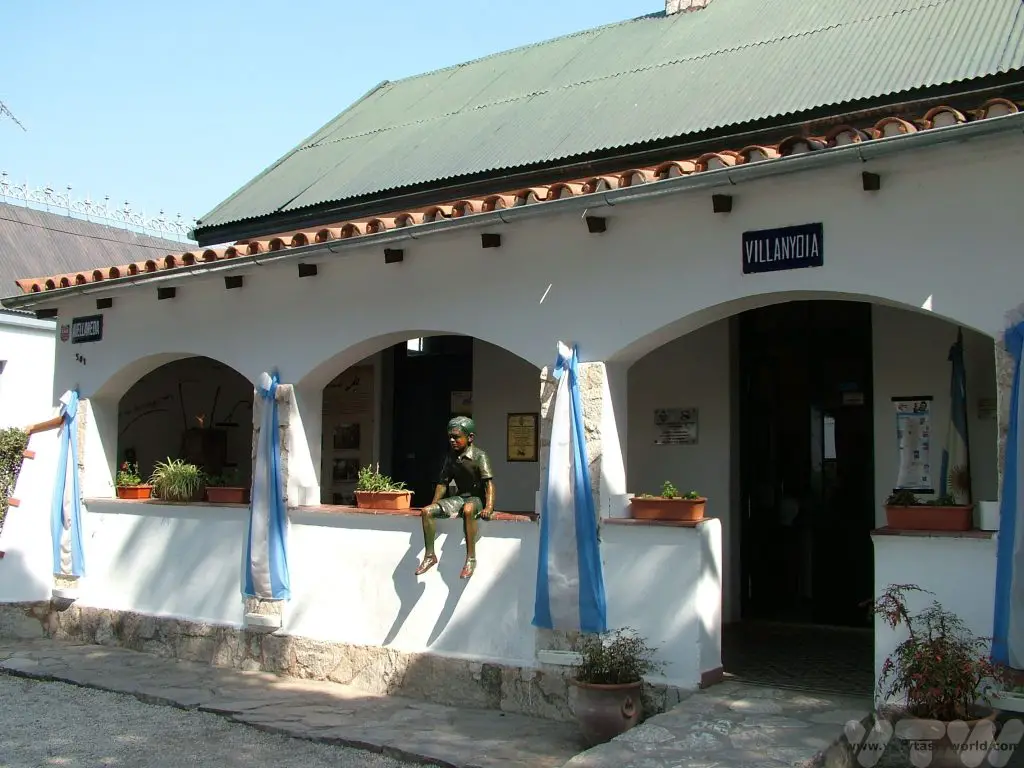
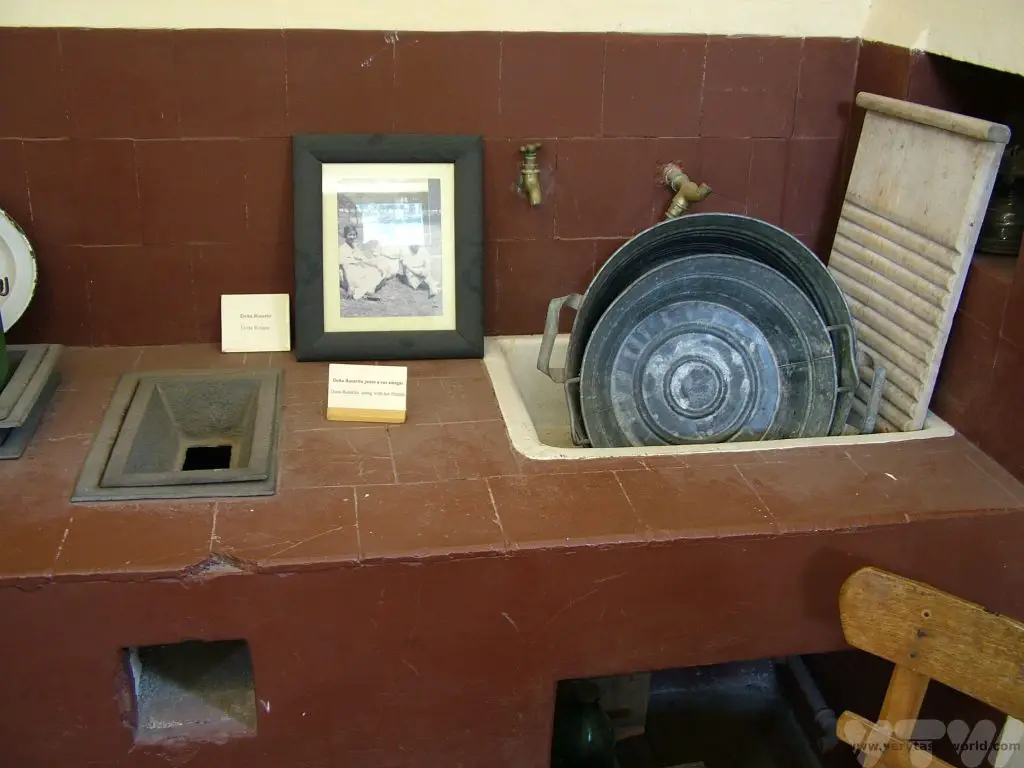
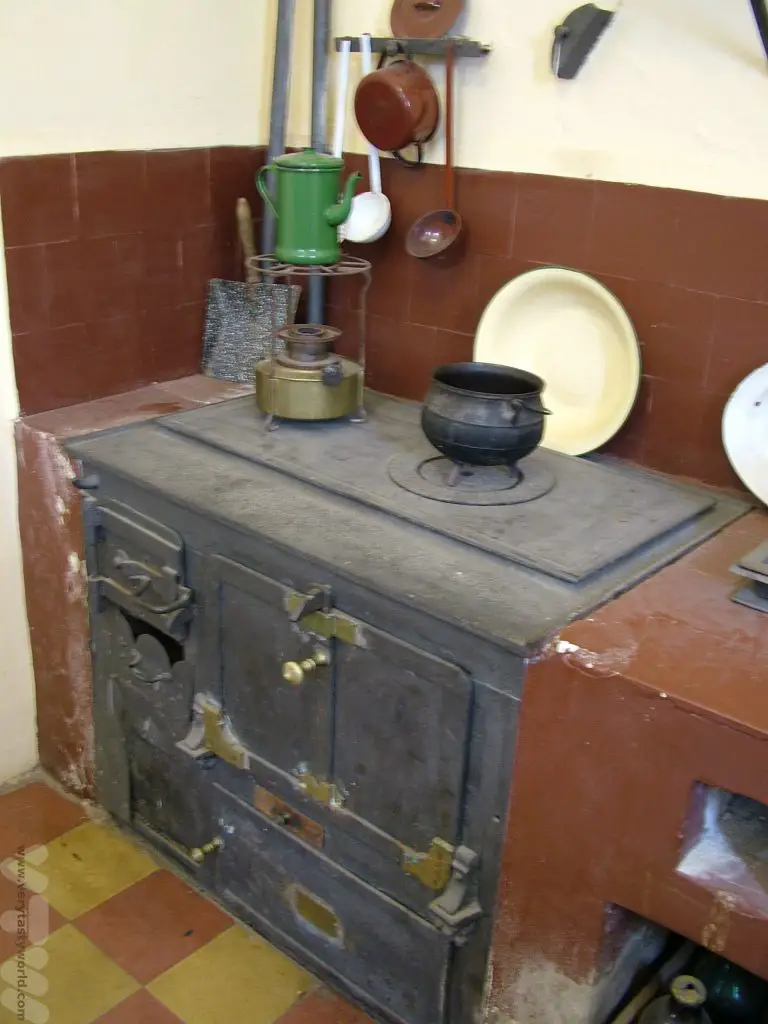
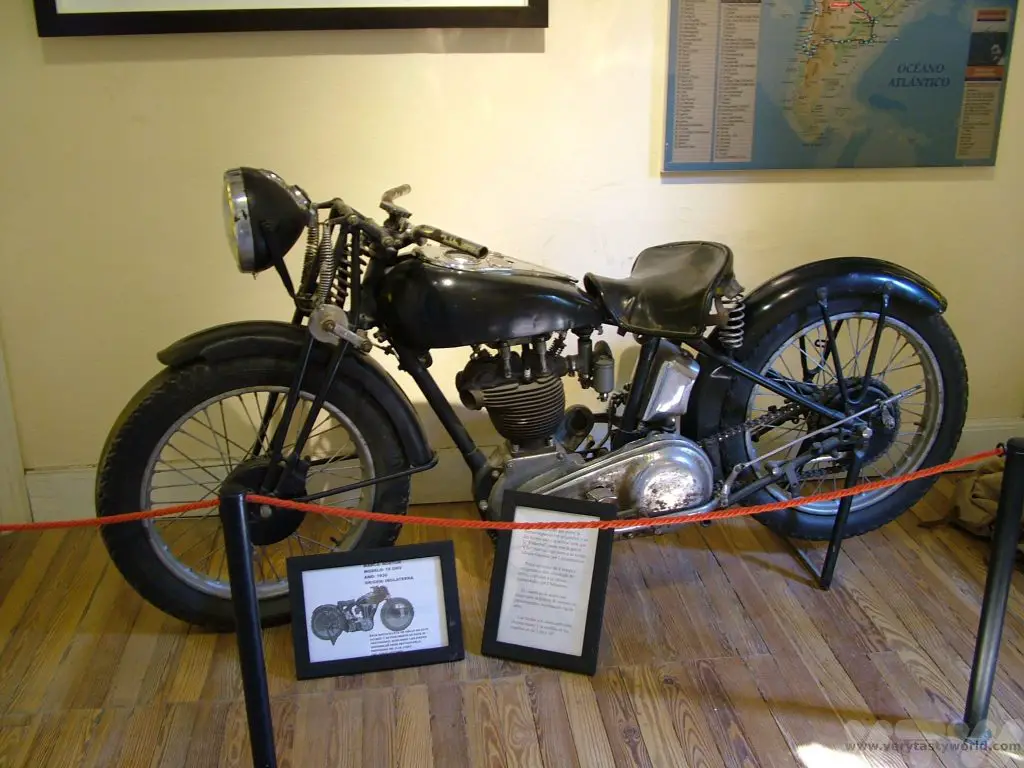
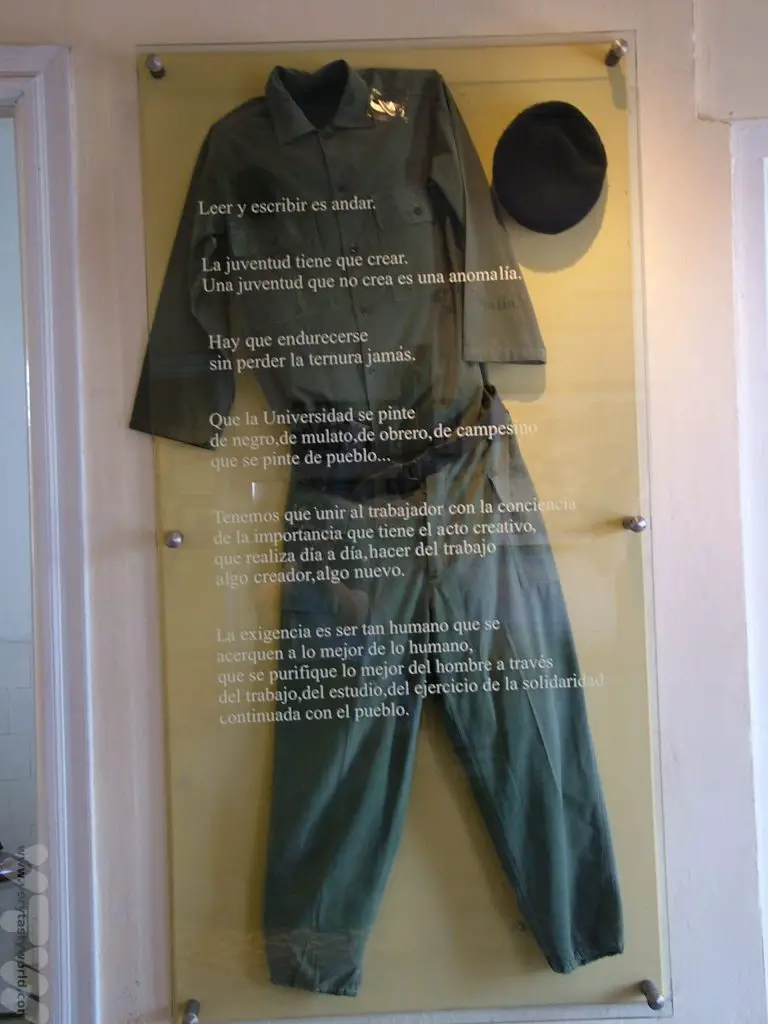
Villa General Belgrano, to the south-west of Cordoba, somewhat bizarrely, offers a little slice of Germany right in the middle of Argentina. It was established in 1930 and is a distinctly alpine town with traditional Bavarian architecture.
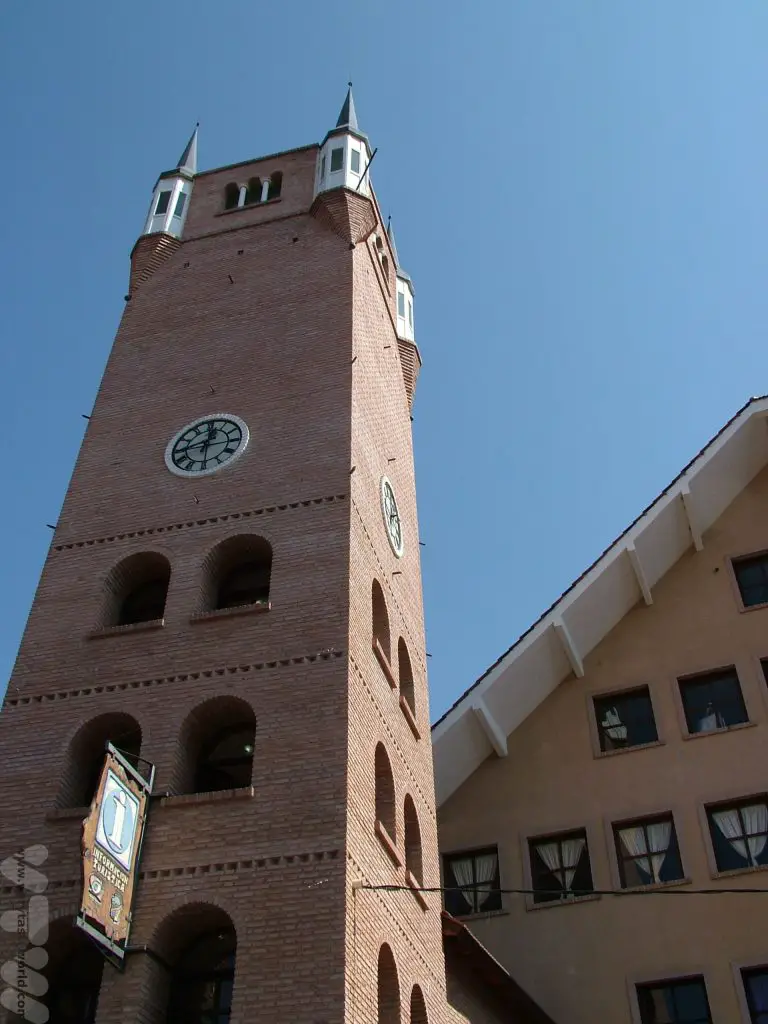
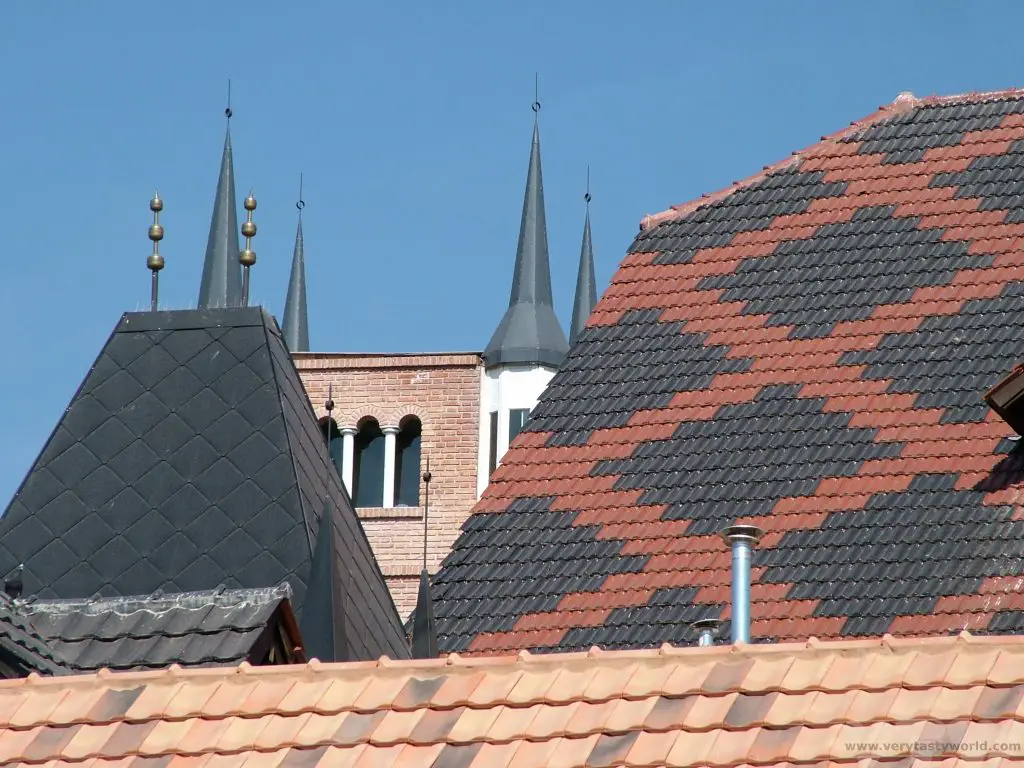
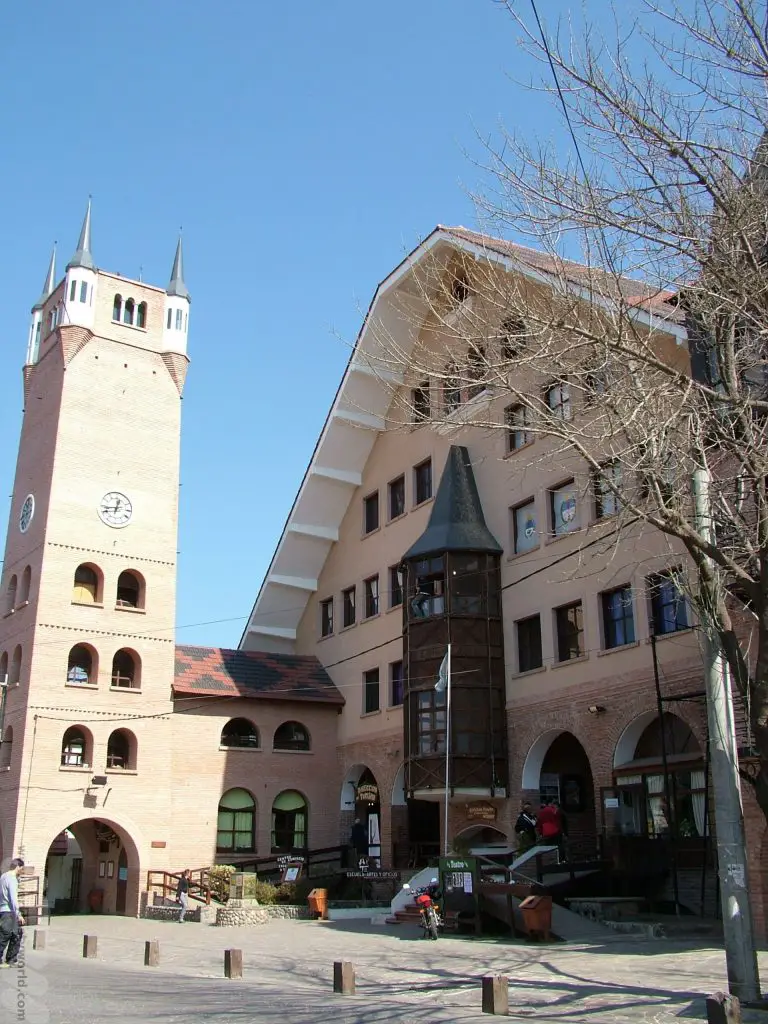
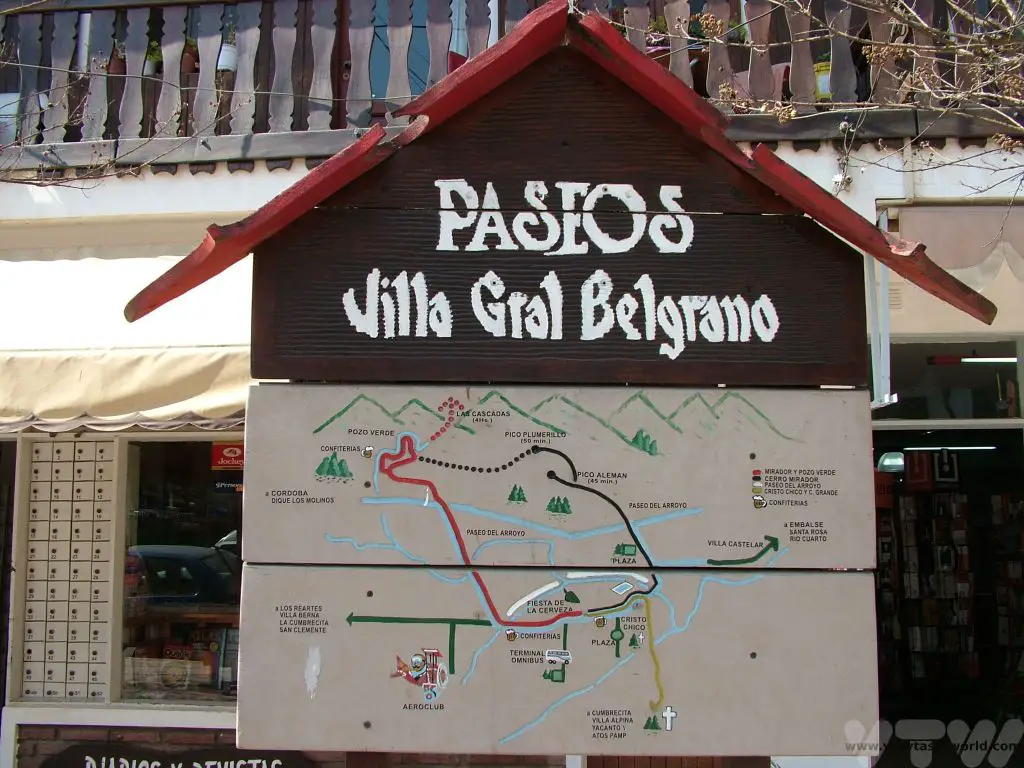
Food-wise, you can enjoy local versions of sausages, Spätzle and strudel amongst many traditional German delicacies, all of which can be washed down with a stein or two of beer. The town has an Oktoberfest event – an annual beer festival – held each October which, after Munich in Germany and Blumenau in Brazil, is considered to be one of the most important in the world.
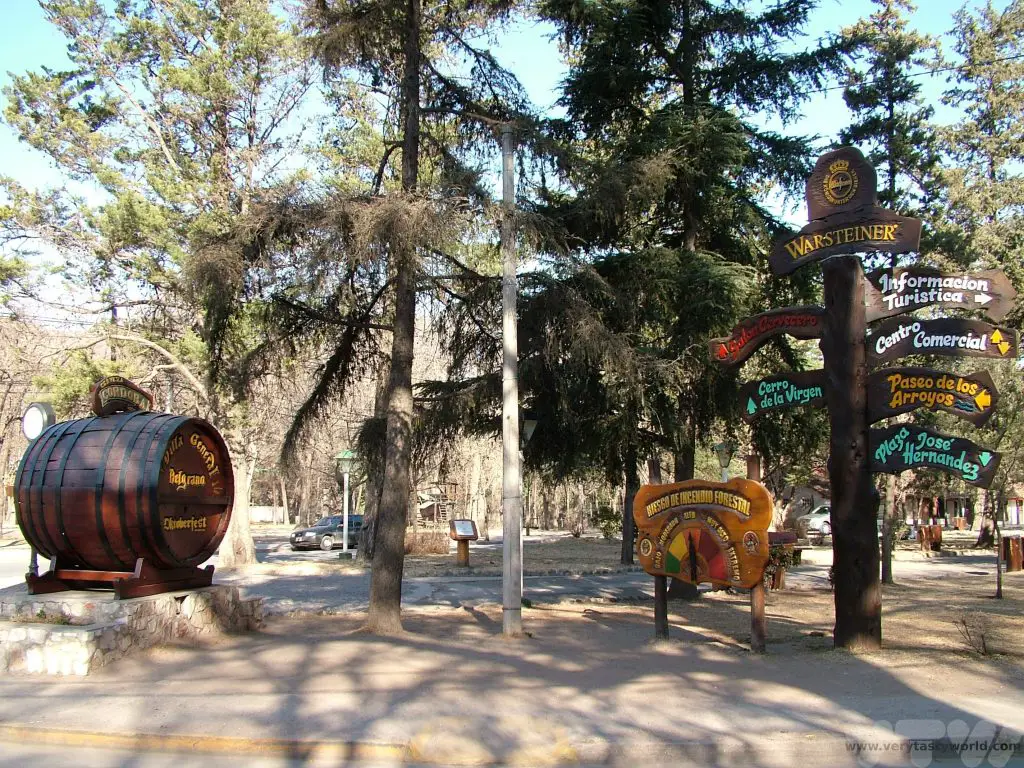
Argentina Asado
When visiting any towns and cities in central Argentina one of biggest impressions that strikes you as you walk around the area, particularly the suburbs, is the aroma, which is predominantly that of meat cooking. It is a mouth-watering scent. Argentinians are well known for their love of meat, especially beef. Asados in Argentina is the equivalent of a barbeque and is massively popular, particularly at weekends.
The word asado refers to both the cooking technique and the event. Most apartment buildings in the city have an asados area where residents can book space and enjoy family time cooking and eating good food together. The area will include a parilla (pronounced ‘parisha’ in Argentine Spanish as the ‘ll’ takes a ‘sh’ rather than a ‘y’ sound), a small kitchen area and benches to prepare and eat your food. You are responsible for clearing up afterwards and leaving the area clean and tidy for other residents to enjoy their asado at another time. We were delighted to be invited to a family asado in Cordoba.
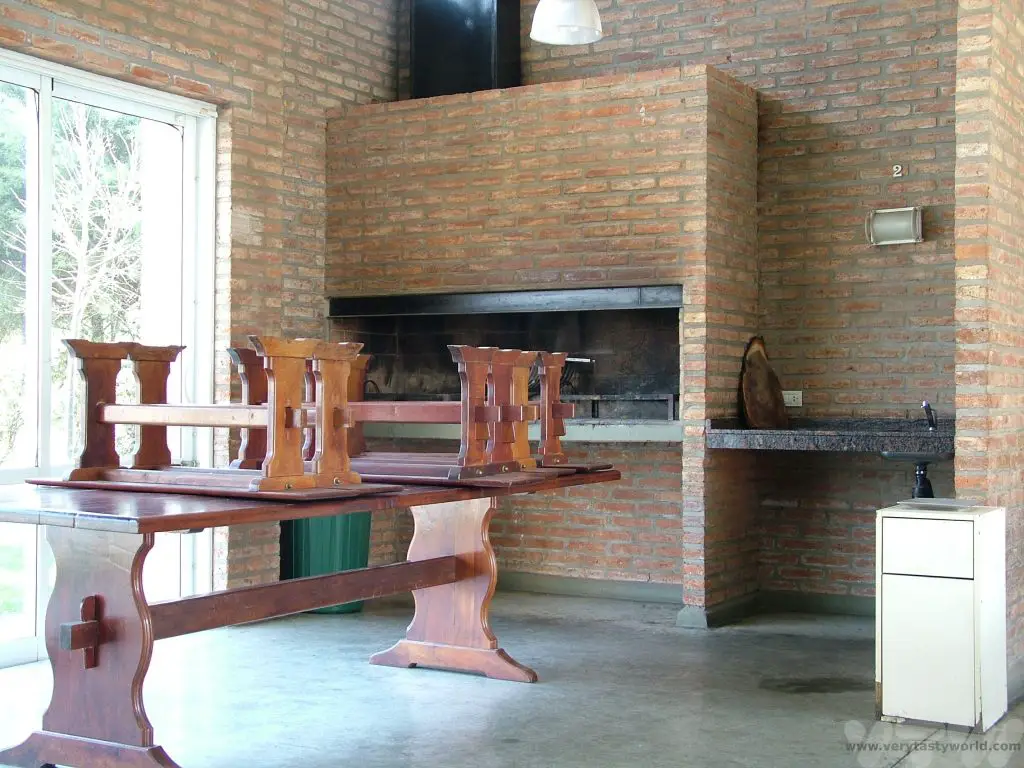
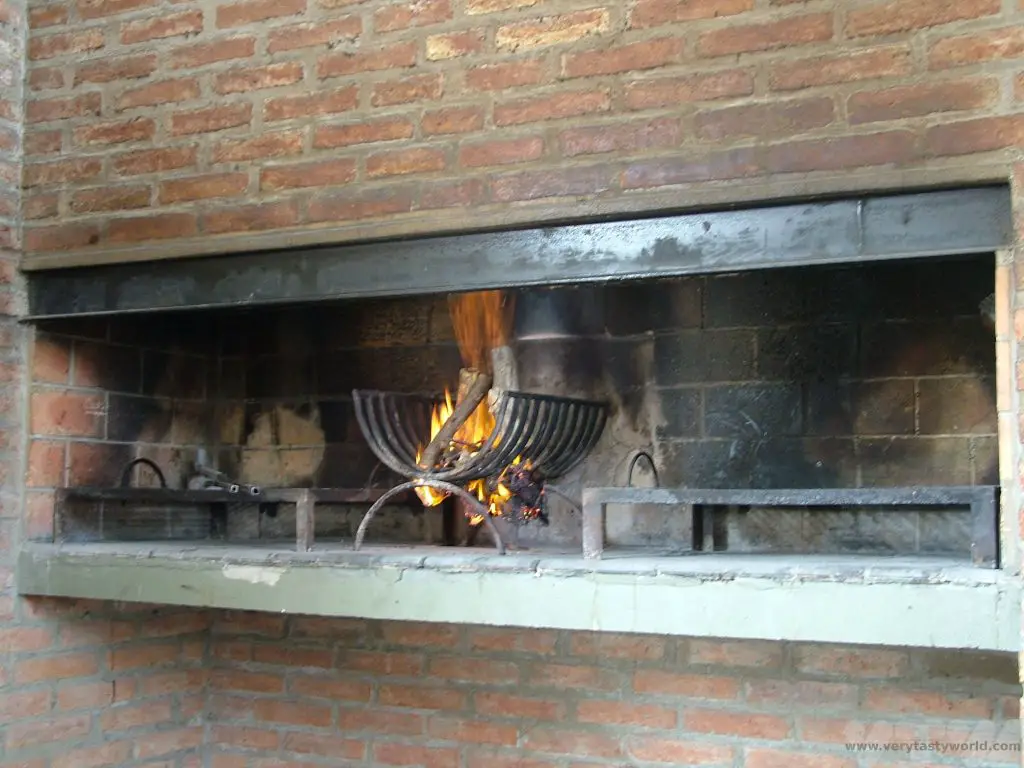
With asados in Argentina there are two parts to the parilla – the v-shaped firebox and the grill. You need to make sure you have fuel. It’s quite common to scour the local area for wood/grasses to burn on the fire. First the fire needs to be started. Wood or charcoal are the most common fuels. Apparently it is not the done thing to use lighter fluid or briquettes – pine cones are sometimes used if the fire is not being very co-operative when starting up.
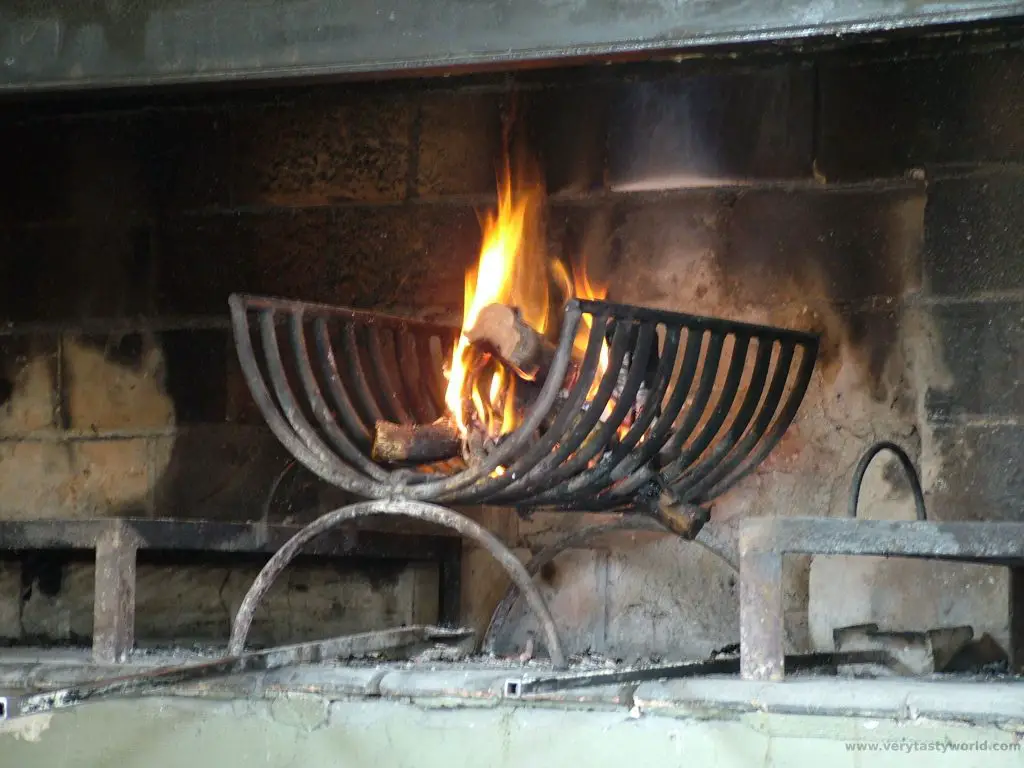
These flames burn too fiercely to cook the meat directly, so the firebox gets really hot then coals from the embers are transferred to the grill and spread around the cooking area. The meat is then placed on the grill above these coals. Traditionally the cook is the asador, invariably male, who takes on responsibility of watching over the feast.
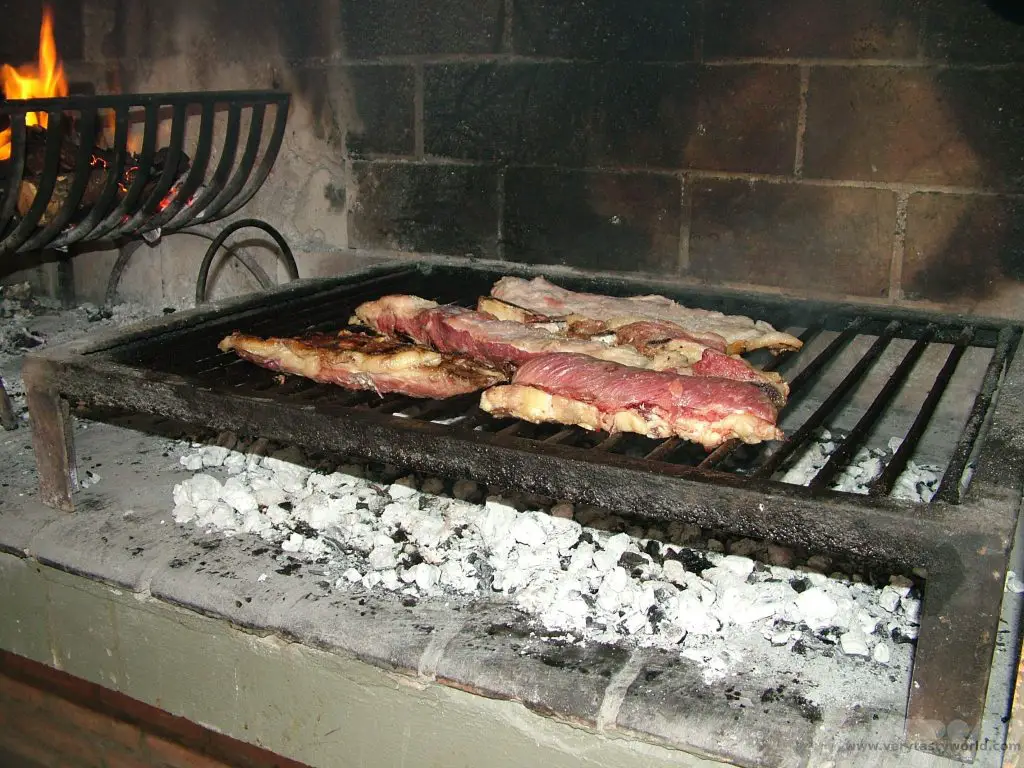
Argentine meat is superb quality and very good value. Bife de chorizo (not to be confused with chorizo sausage) is a thick cut sirloin steak, which usually comes with a generous layer of fat – and remember, fat is flavour.

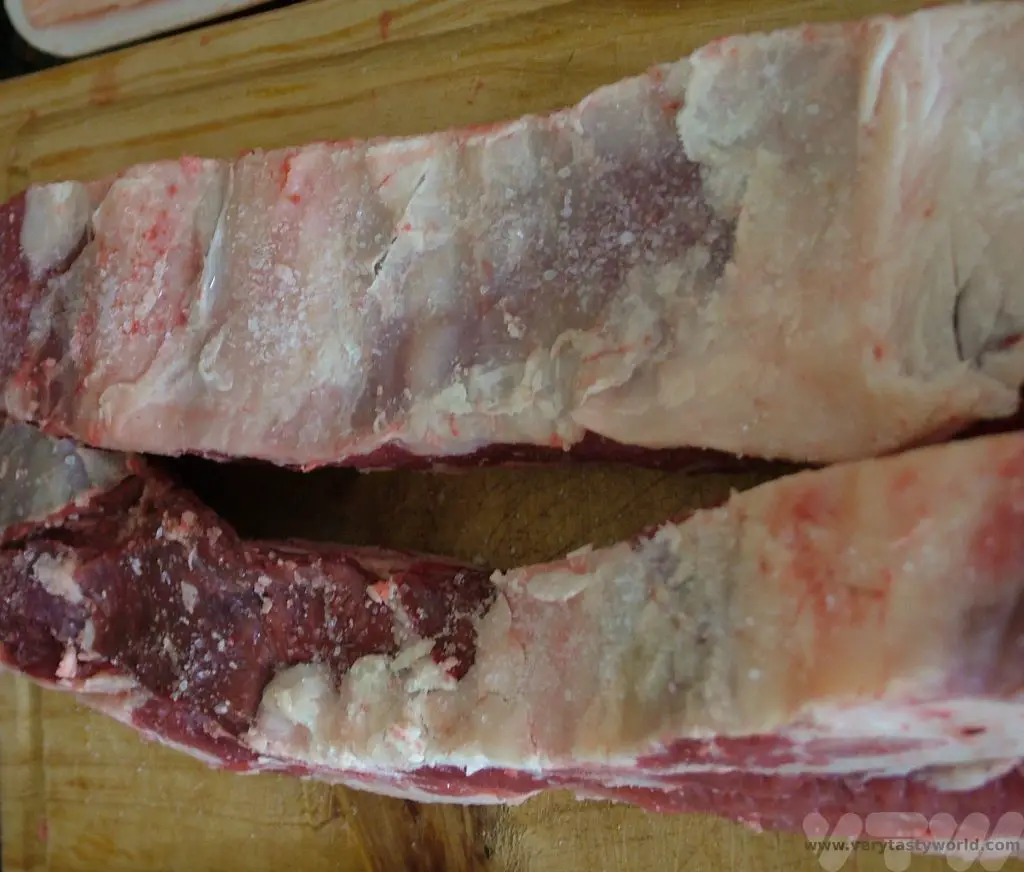
Meat is most definitely the main attraction of the meal. Everything else is secondary. The steak is served with just a hat-tip to carbs – usually bread -which is ideal to mop up the delicious juices – and some token salad so that the meal appears to have a semblance of nutritional balance. Sauces aren’t very common in Argentina either, although the heavenly piquant and gorgeously green chimichurri, which is usually comprised of chopped parsley and oregano, minced garlic, olive oil and red wine vinegar, all blended together, would be a good accompaniment.
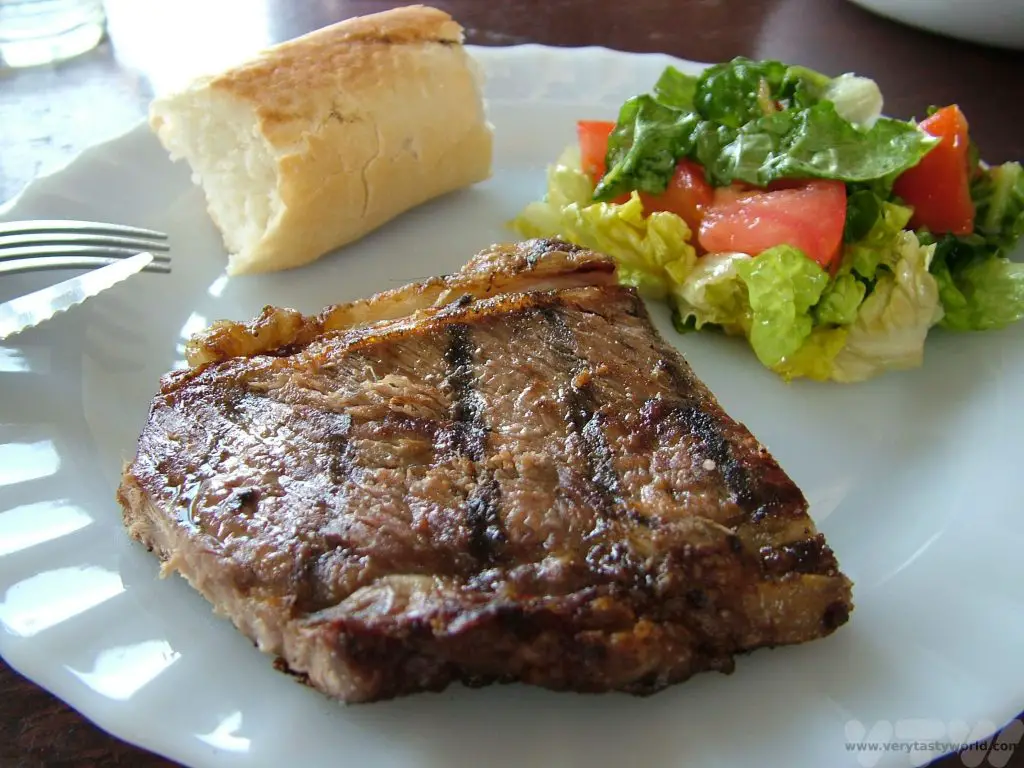
Wine, often a rich, fruity red Malbec, accompanies the food, but beers are also popular. The whole process of cooking, eating and socialising together makes the asados in Argentina a pleasant and relaxing way of spending the afternoon, which can then turn into a very enjoyable evening as well.
Related Posts You May Enjoy

- Best Time To Visit Machu Picchu 2024 Update
- A 2 Week Patagonia Itinerary
- Day of the Dead in Campeche
- A Galapagos Land Based Itinerary
- RECIPE: How to Make Costa Rica’s Gallo Pinto
- A Tasty Puebla Food Tour
- Costa Rica Wildlife Sanctuary – Caño Negro
- Visit Torres del Paine National Park in Patagonia
- Atacama Desert Itinerary
Perito Moreno Glacier Tour, Patagonia
The Perito Moreno glacier, located around 80 kilometres away from the Argentine Patagonian town of El Calafate and inside Los Glaciares National Park, is one of the area’s most famous attractions. The Perito Moreno is unusual in that it is one of the few glaciers in the world that is still advancing. Most are shrinking as a result of climate change. There are plenty of options for taking a Perito Moreno glacier tour.
When I was studying geography many years ago, human geography always seemed to be less interesting (counting different types of shop in the central business district of a small town) compared with physical geography and meteorology, where we learned about about oxbow lakes, karst scenery, lapse rates and glaciation. These geographical features seemed to be exotic and exciting and, well, very different from anything to be found in suburban Surrey. To be able to see a glacier up close – and actually walk on it – was an ambition fulfilled.
Getting to the Perito Moreno Glacier
Although it’s possible to hire a car in the area, and we did this for our visit to Torres del Paine in Chilean Patagonia, we were generally travelling on buses through the region, which was a convenient and relaxing way to travel. So there are loads of tour operators in El Calafate who can arrange a trip to Perito Moreno. It’s about an hour and a half journey to the glacier from the town and most operators can arrange a pickup from your accommodation.
You enter Los Glaciares park and will have to pay the entrance fee which usually isn’t included in the price of the tour. The park website has details of ticket prices and you can also pre-book them online.
There are choices for exploring the glacier – you can walk along an excellent viewing trail but it is also possible to don crampons and undertake a trek on the glacier. There’s the Big Ice for hardy young souls, where you’ll spend about 8 hours on the ice and traverse a wide section of glacier, or the Little Ice which is a taster for people who are less intrepid. Or just old – when we visited there was a rule that you were not allowed do the Big Trek if you were over 45 years old. This rule has now changed but it is important that you are physically fit and don’t have any mobility issues.
If doing the glacier walk, you’ll be taken to a small ferry and will then cross the lake. It takes about half an hour and the view of the glacier is wonderful. There’s a full briefing available in English and Spanish and you will be accompanied on the glacier by several experienced guides.

Little Ice Trek On The Perito Moreno Glacier
Even if you’re too old for the Big Ice, the Little Trek is still a marvellous experience. You need to wear a long-sleeved top and bring gloves because the ice is surprisingly sharp (it’s not like fluffy snow) so you don’t want to hurt your arms or hands if you fall over. Sturdy shoes are essential.
You’ll be loaned some crampons, spikes that strap to your shoes (hence the need for good footwear) which will enable you to walk on the ice without slipping over. They’ll be fitted by people who know how to fit crampons and this will ensure your safety on the ice.
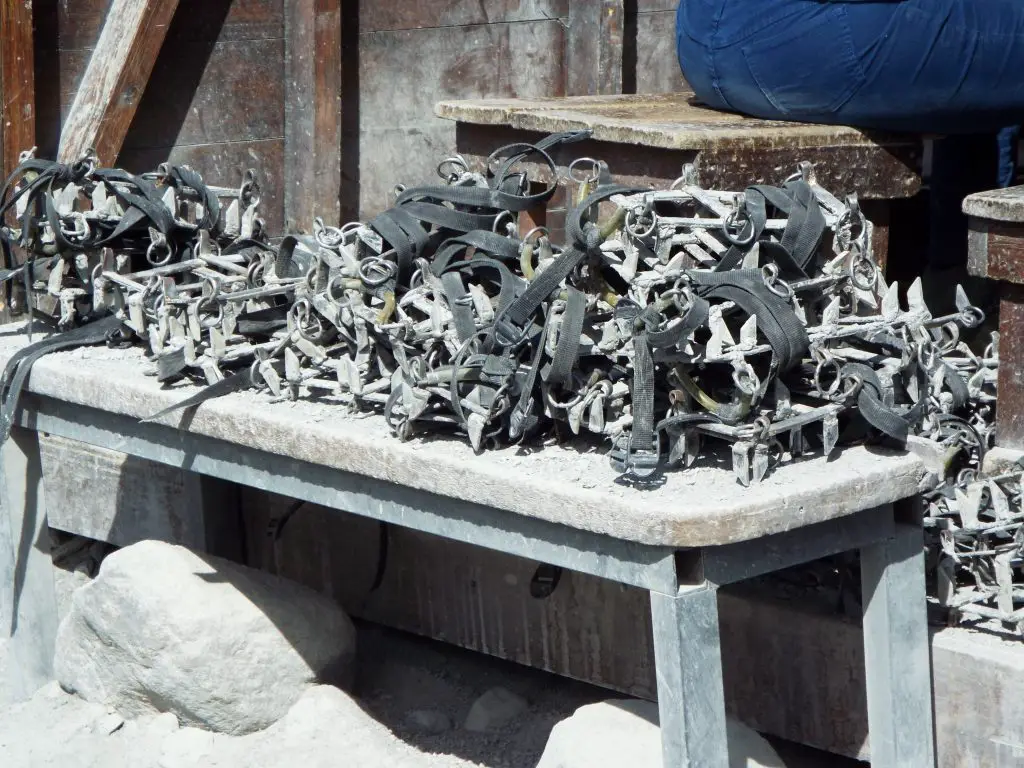
Crampons take a little bit of getting used to, especially when walking downwards on the ice. When walking straight or uphill, just walk firmly, keeping your legs slightly apart, about the same width as your shoulders, making sure the spikes embed themselves into the ice. When walking downhill, keep your feet facing forward, again with legs slightly apart and walk steadily. Opening your feet out penguin style or trying to walk downhill sideways, like a crab, doesn’t work.
Once on the glacier there are some amazing sights.
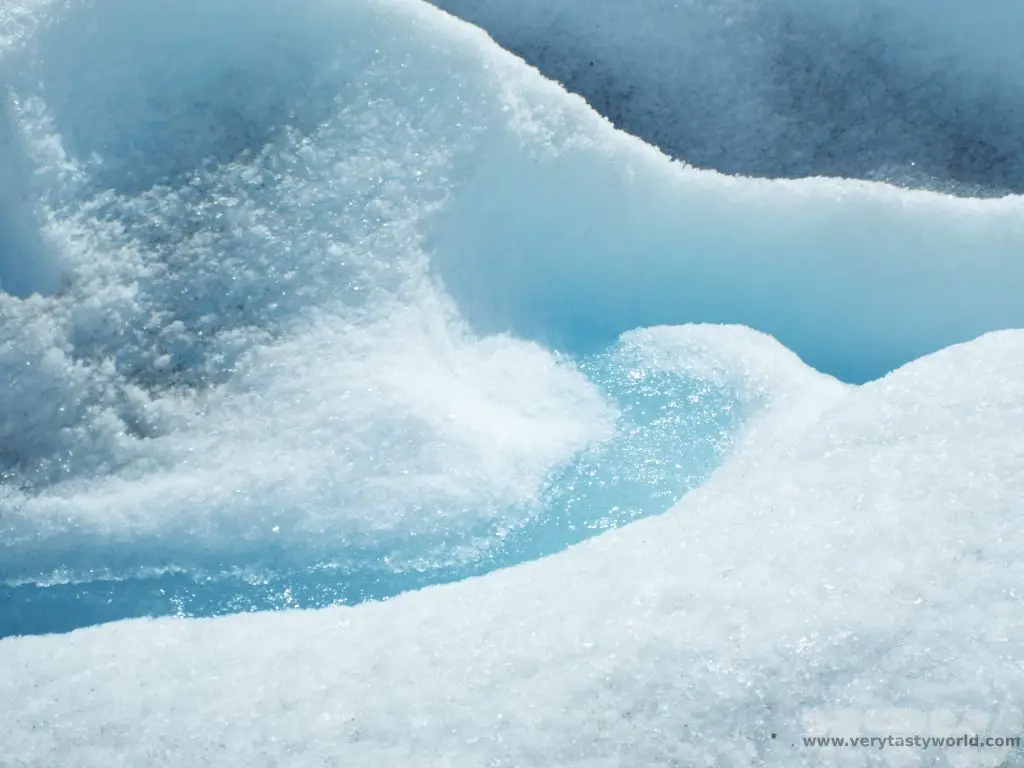
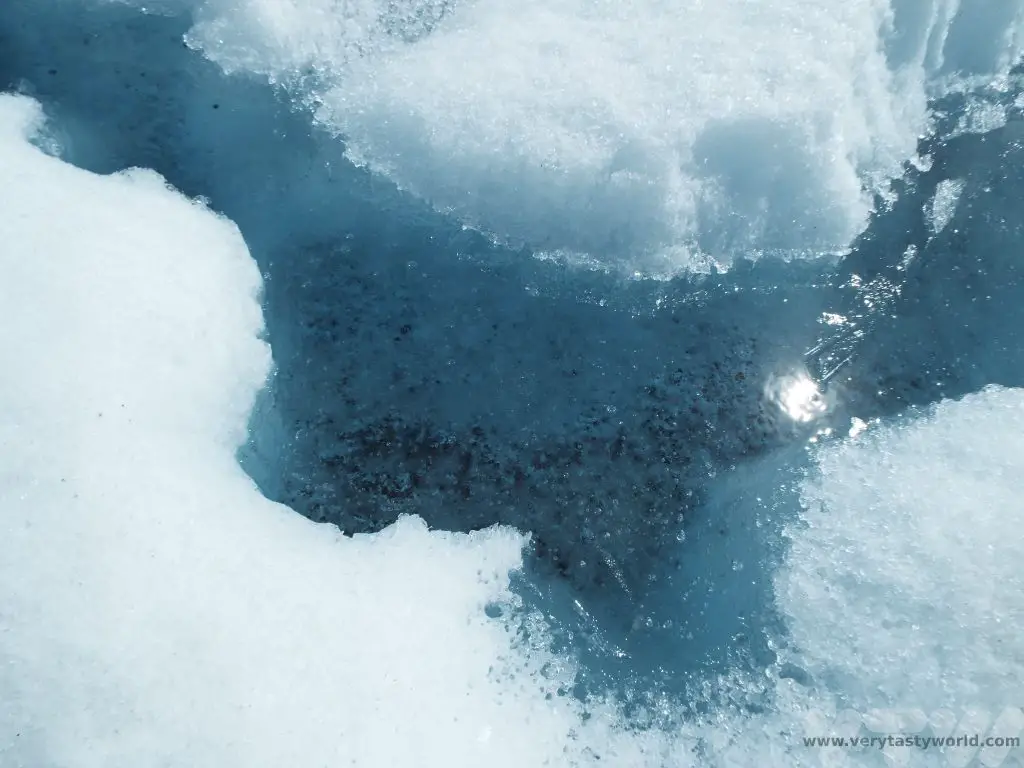
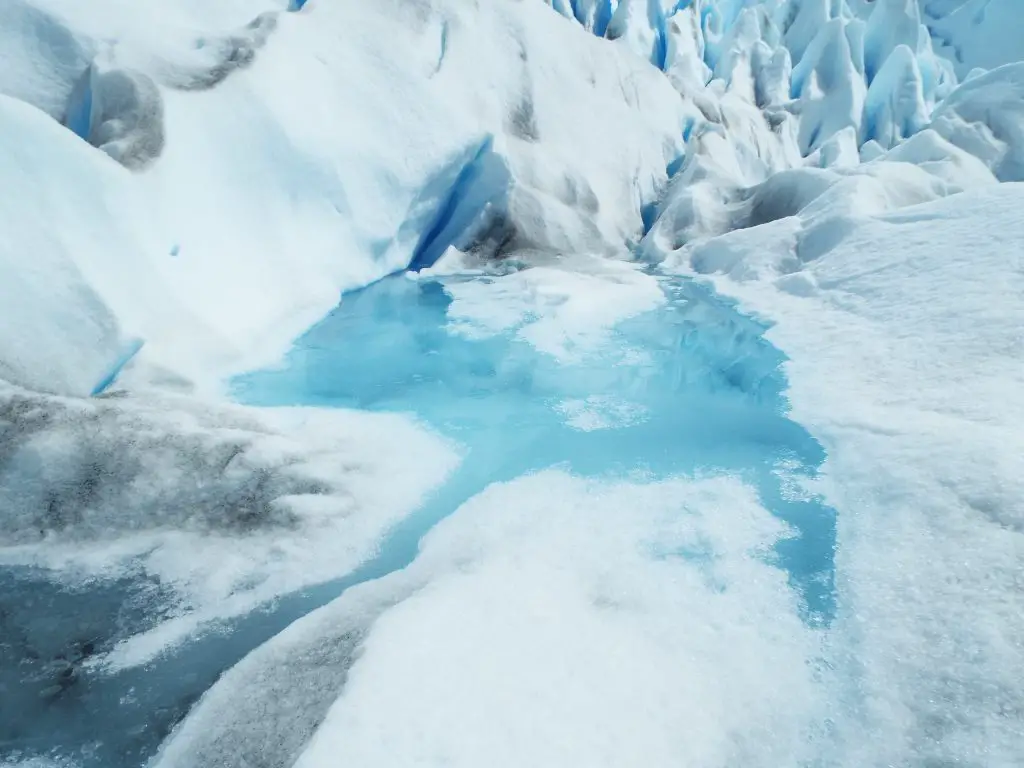
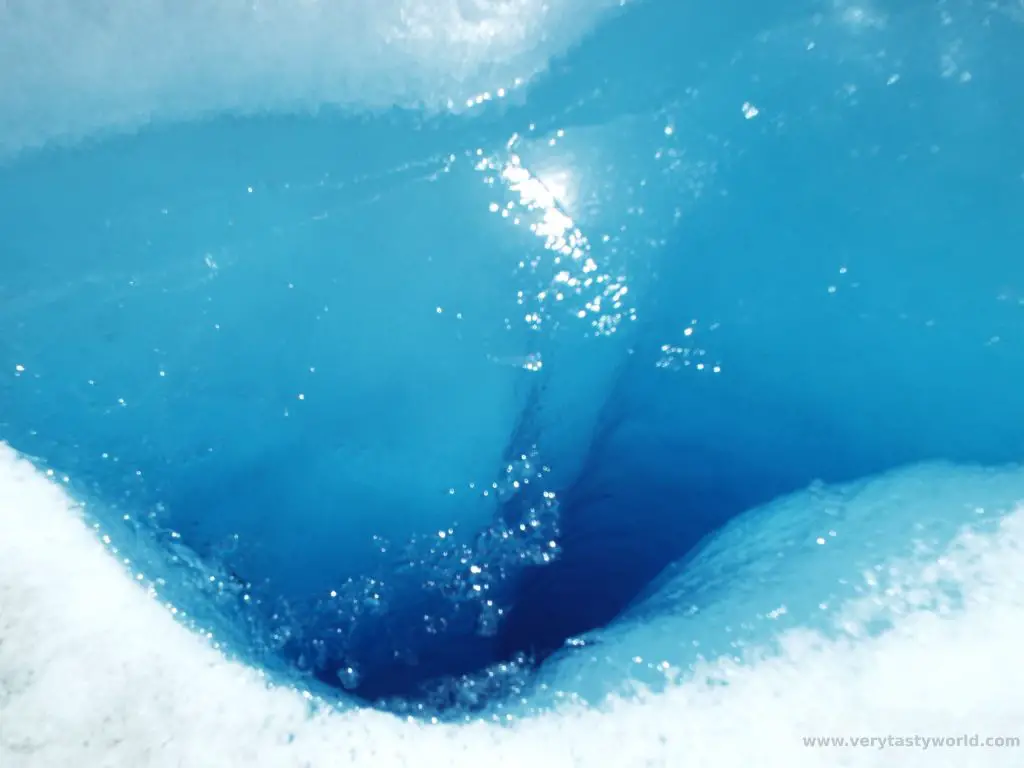
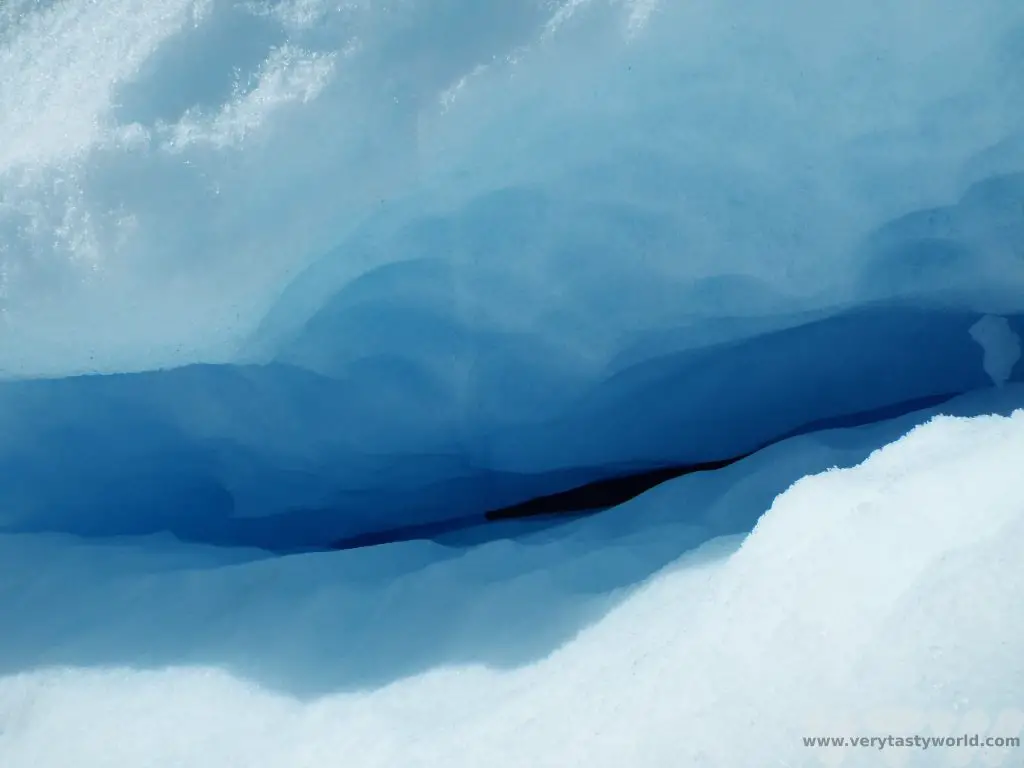

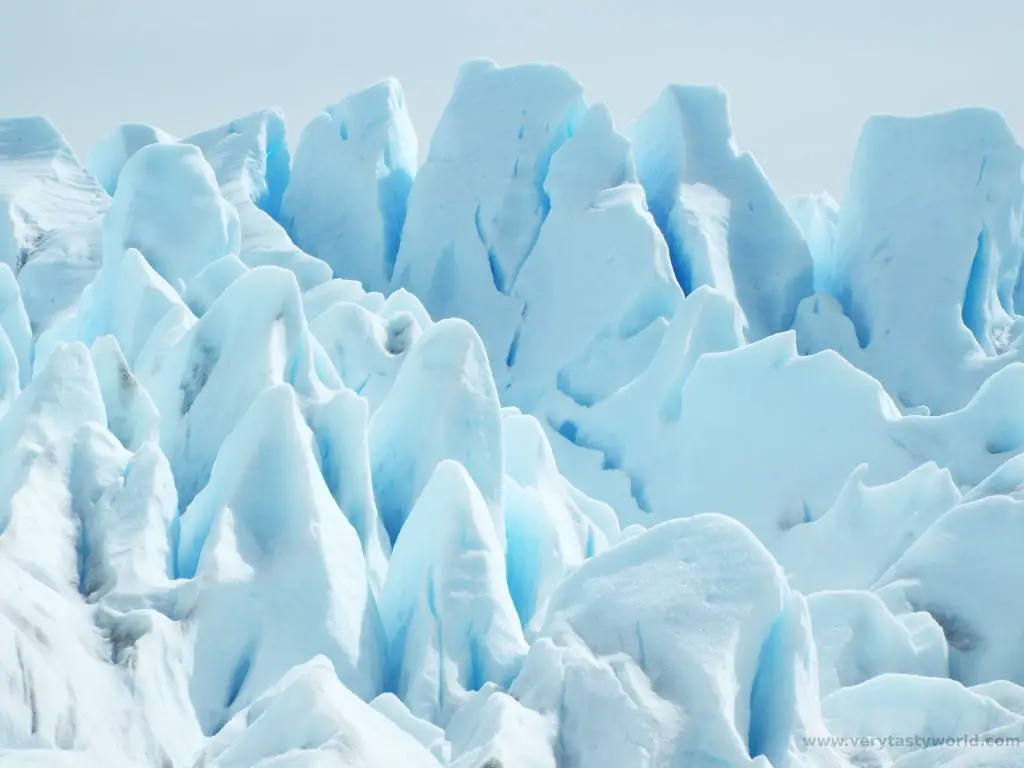
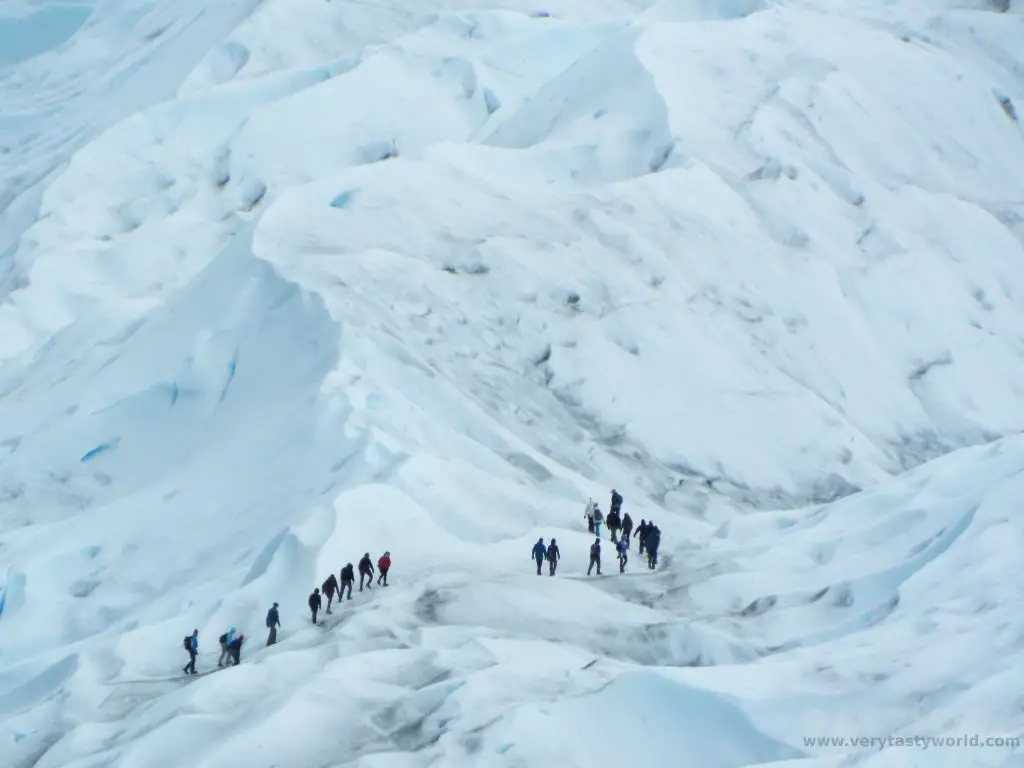
A Treat At The End Of The Trek
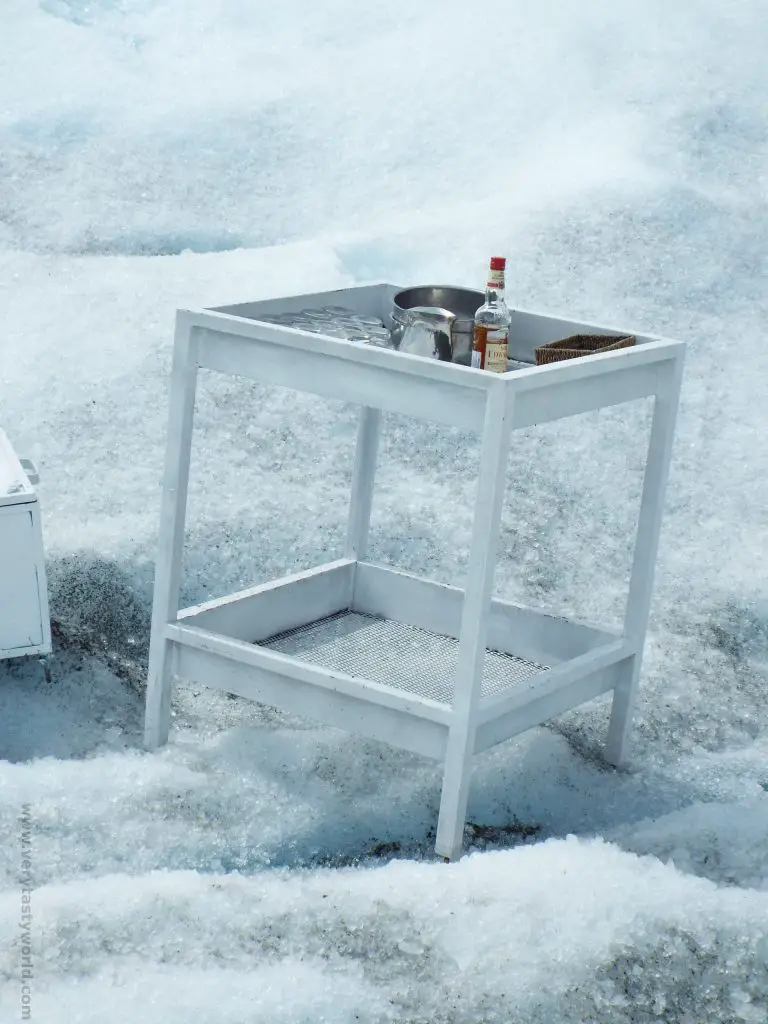
At the end of the trek there is a table, and on that table is a bottle.
Yes, the end of the trek offers a warming whiskey on the rocks, the rocks, of course, being large chunks of glacial ice.
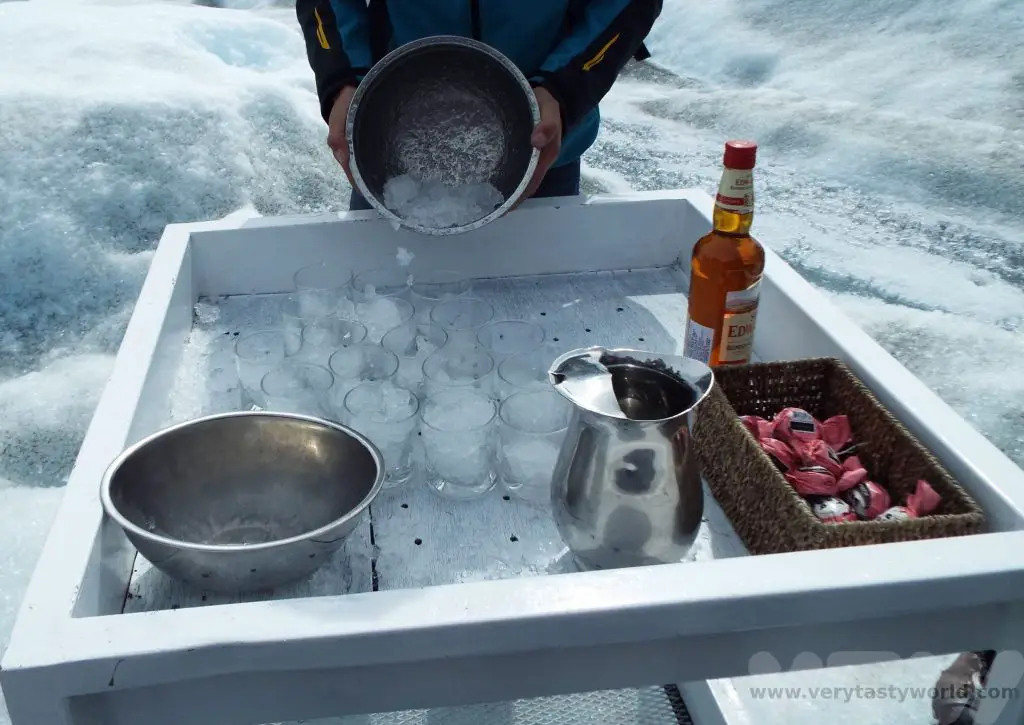
Fire and ice. Fortunately, it’s close to the edge of the glacier so you can stagger off in your crampons after enjoying a tipple.
Perito Moreno Glacier Tour – The Boardwalk
When visiting the Perito Moreno glacier there’s also a lovely walkway on the other side of the glacier to stroll along and see some amazing views. We took the ferry back to the other side and enjoyed walking along the boardwalk.

As the glacier advances, it cuts off part of the lake it moves across, effectively creating a dam. Over time, the water pressure causes this ice bridge to rupture and large parts of the glacier calve off.
The last rupture was in March 2022. It is difficult to predict when a rupture is going to happen as there isn’t a specific frequency, so you can’t really plan a trip around it. Apparently they are more likely to take place in winter but you have to get lucky to see one. There is plenty of video footage of past events available and it looks truly spectacular! (This photo was taken some months after the rupture in 2018.)
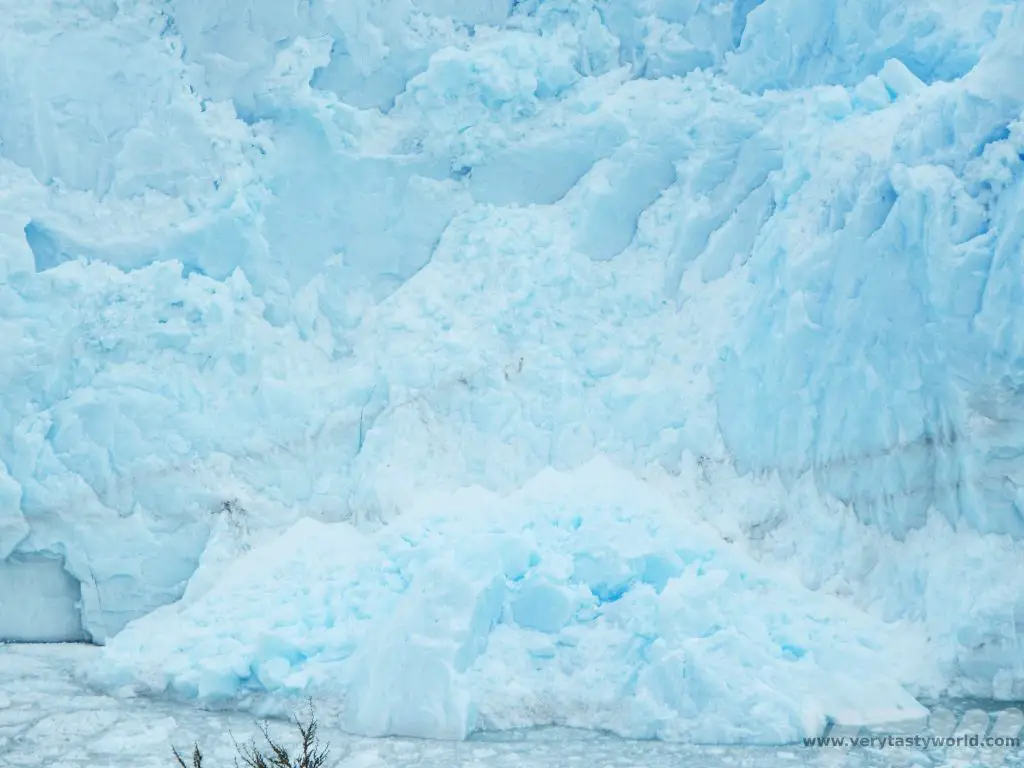
Even if you’re not around to see the rupture there are still likely to be opportunities to see chunks of glacier calve away from the main ice. You’ll see it first. A lump of ice will fall into the water. It looks pretty small from a distance but is probably a fairly large piece. Then you hear the noise – it’s a loud cracking sound, like a shotgun.
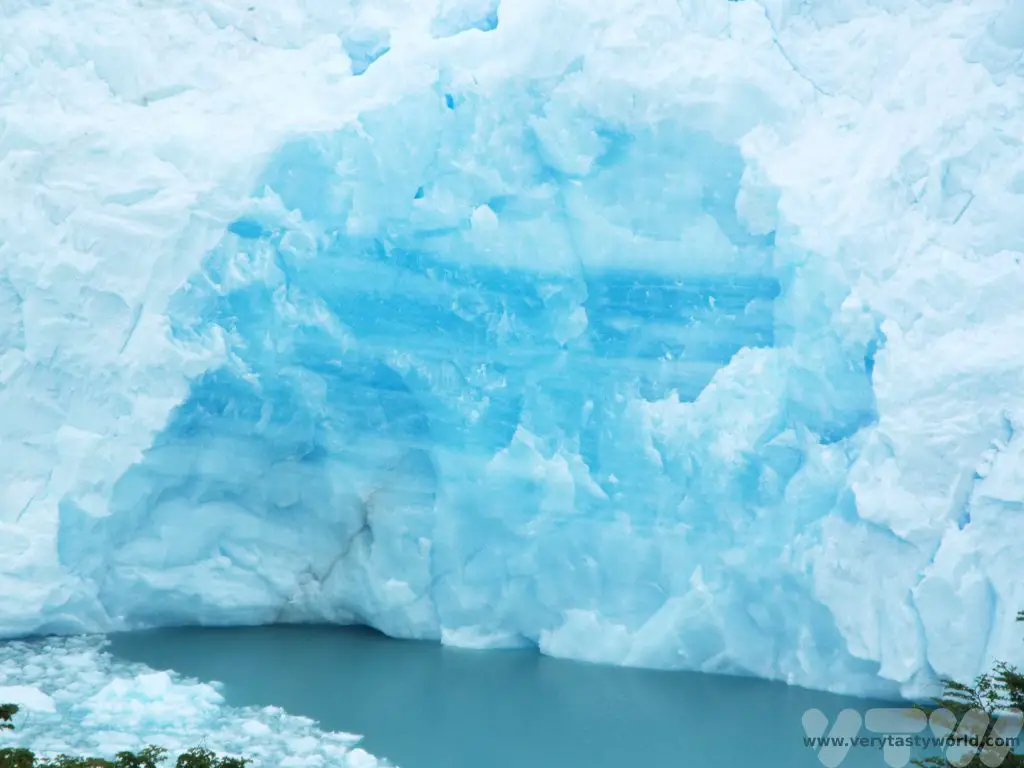
Our trip was a full day tour, so we took a packed lunch for scoffing immediately after our trek. It meant we could have more time to view the glacier from the walkway. However, there is a restaurant and other facilities at a visitor centre by the boardwalk area.
Get Your Guide offers a variety of tours to suit all levels of interest:
Related Posts You May Enjoy

- Best Time To Visit Machu Picchu 2024 Update
- A 2 Week Patagonia Itinerary
- Day of the Dead in Campeche
- A Galapagos Land Based Itinerary
- RECIPE: How to Make Costa Rica’s Gallo Pinto
- A Tasty Puebla Food Tour
- Costa Rica Wildlife Sanctuary – Caño Negro
- Visit Torres del Paine National Park in Patagonia
- Atacama Desert Itinerary
